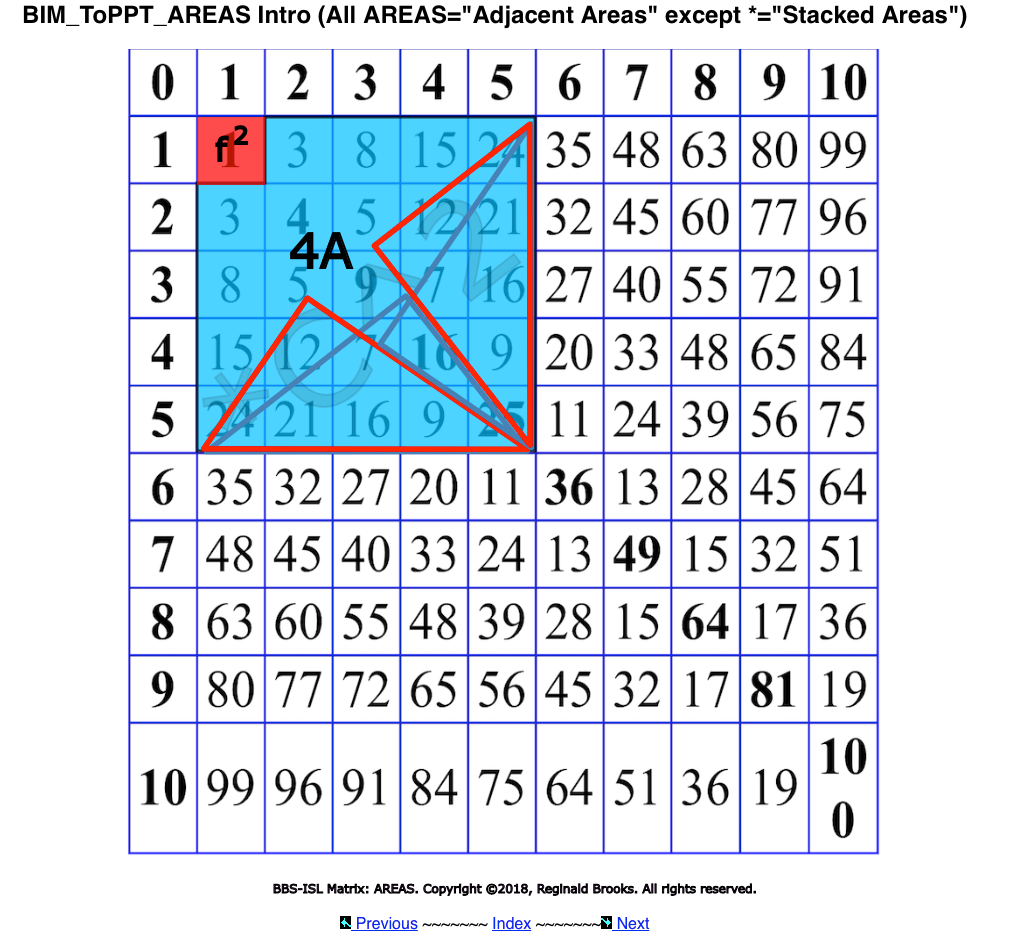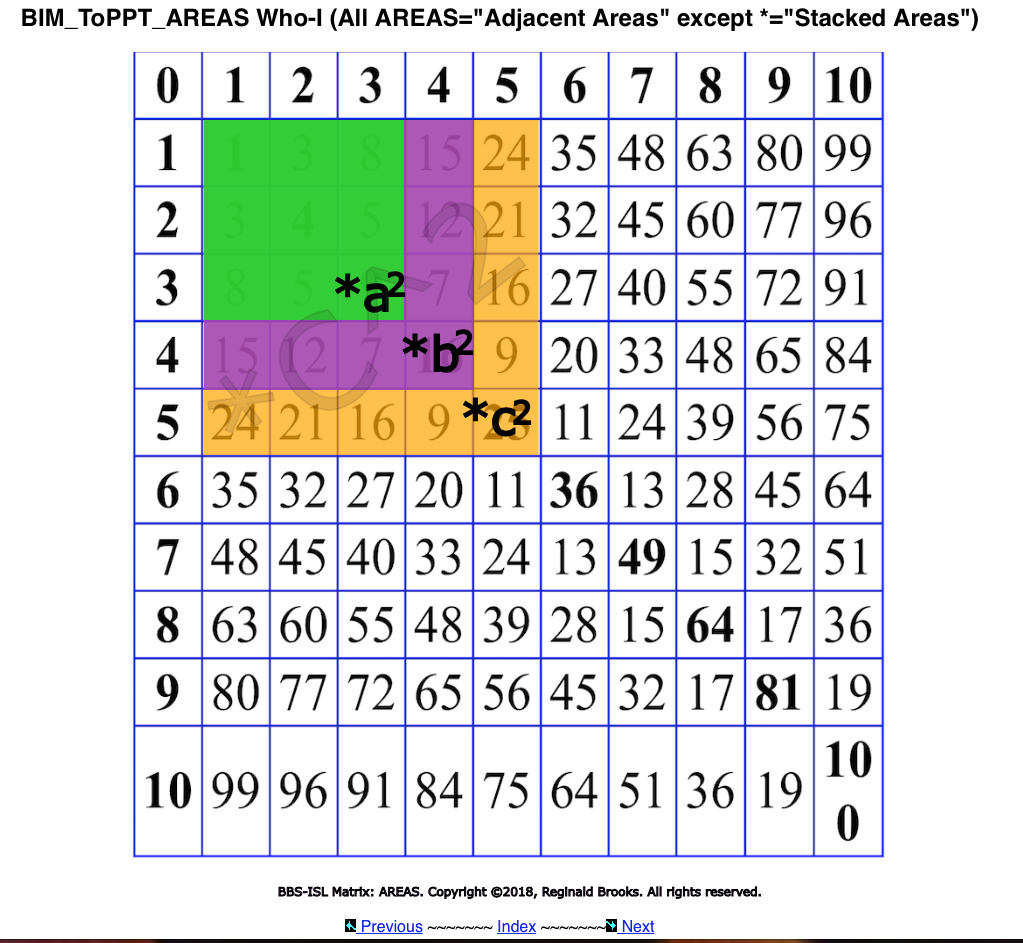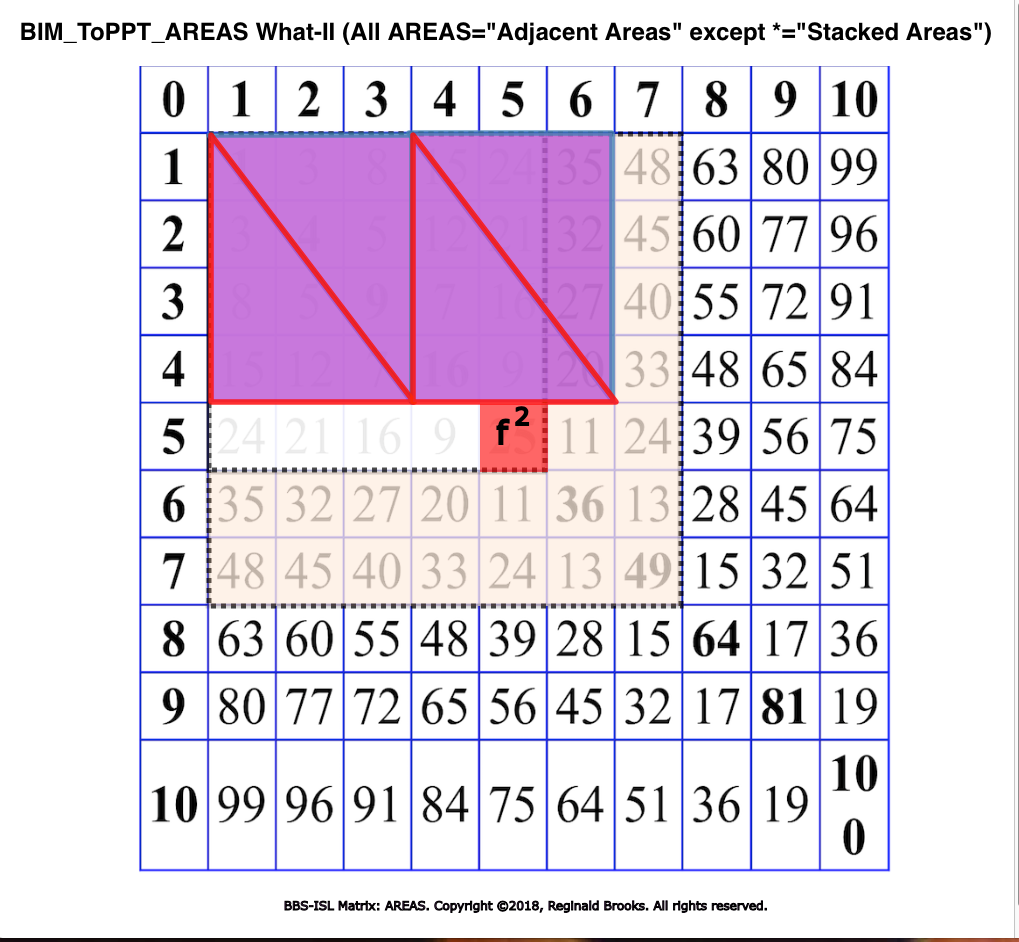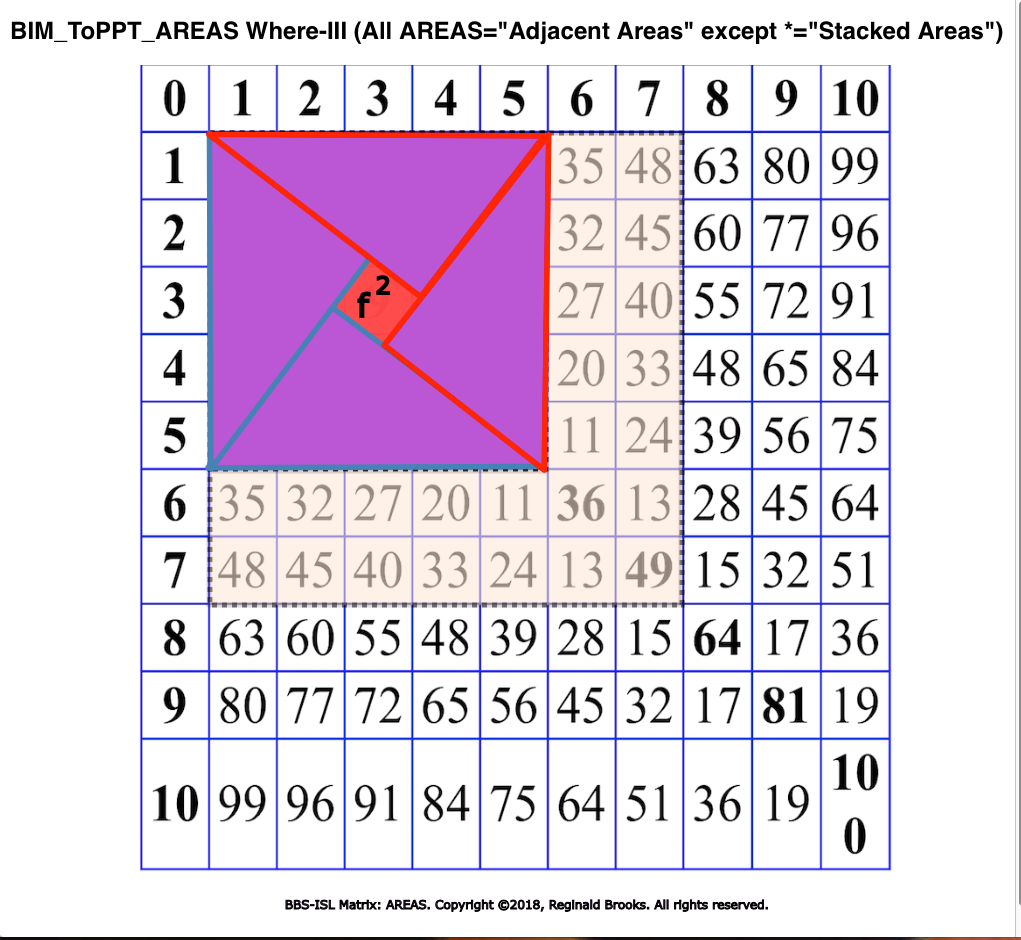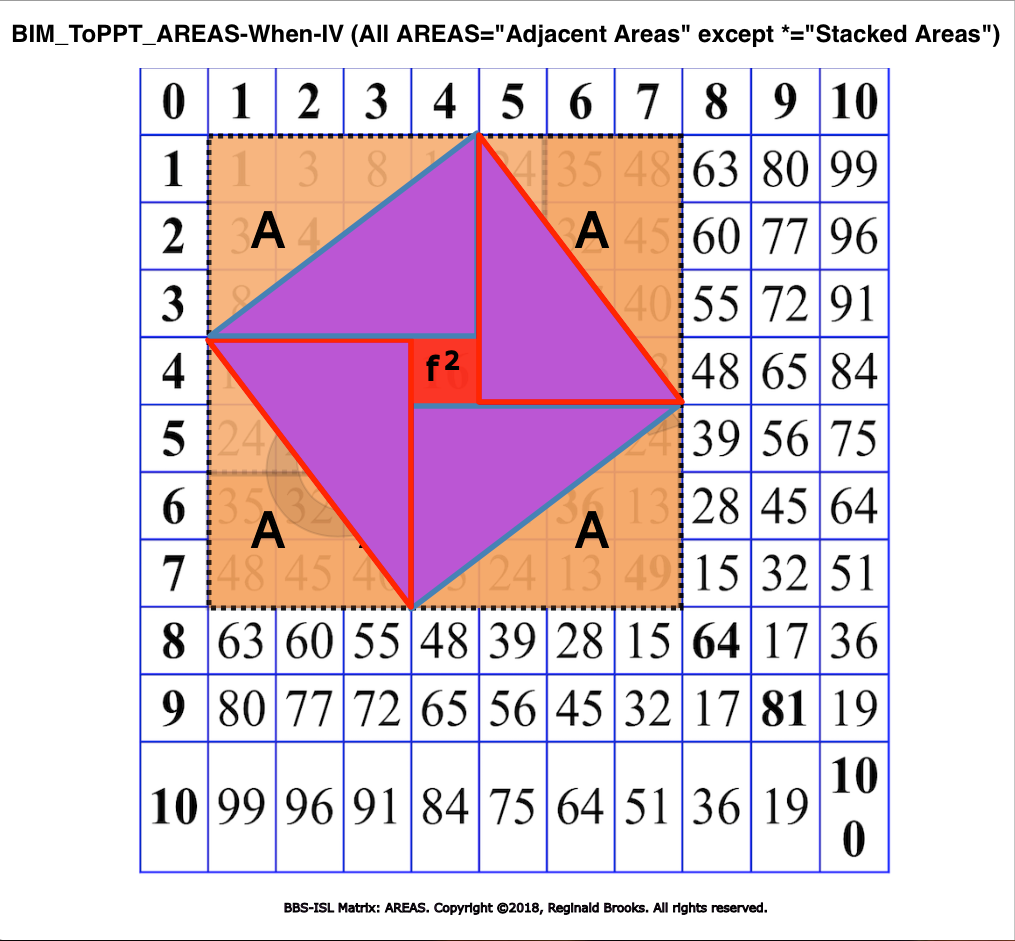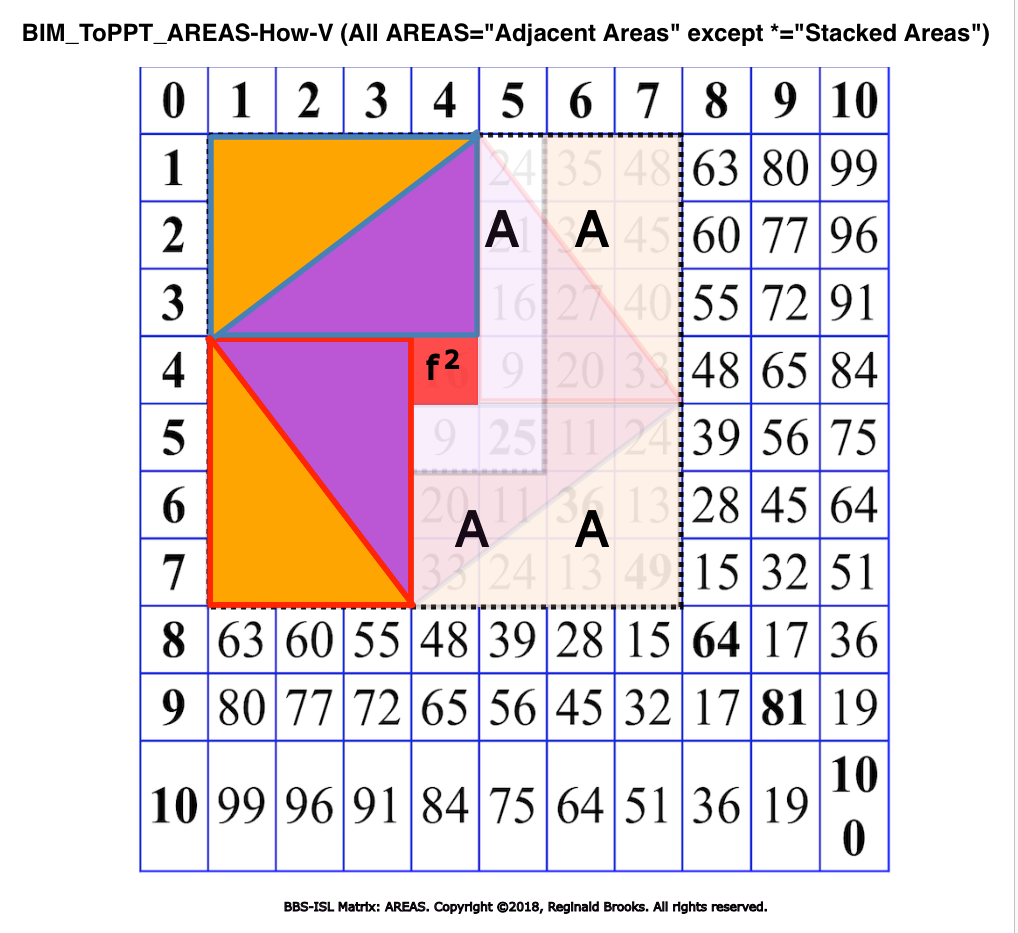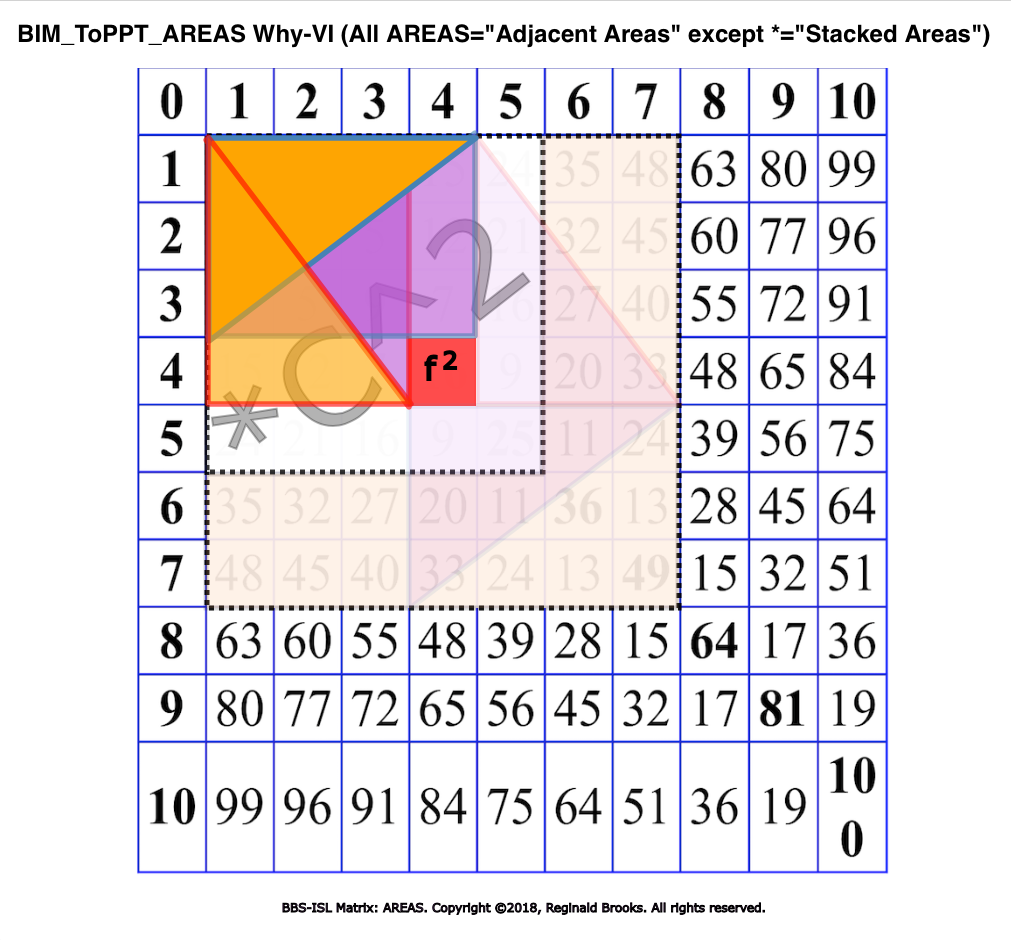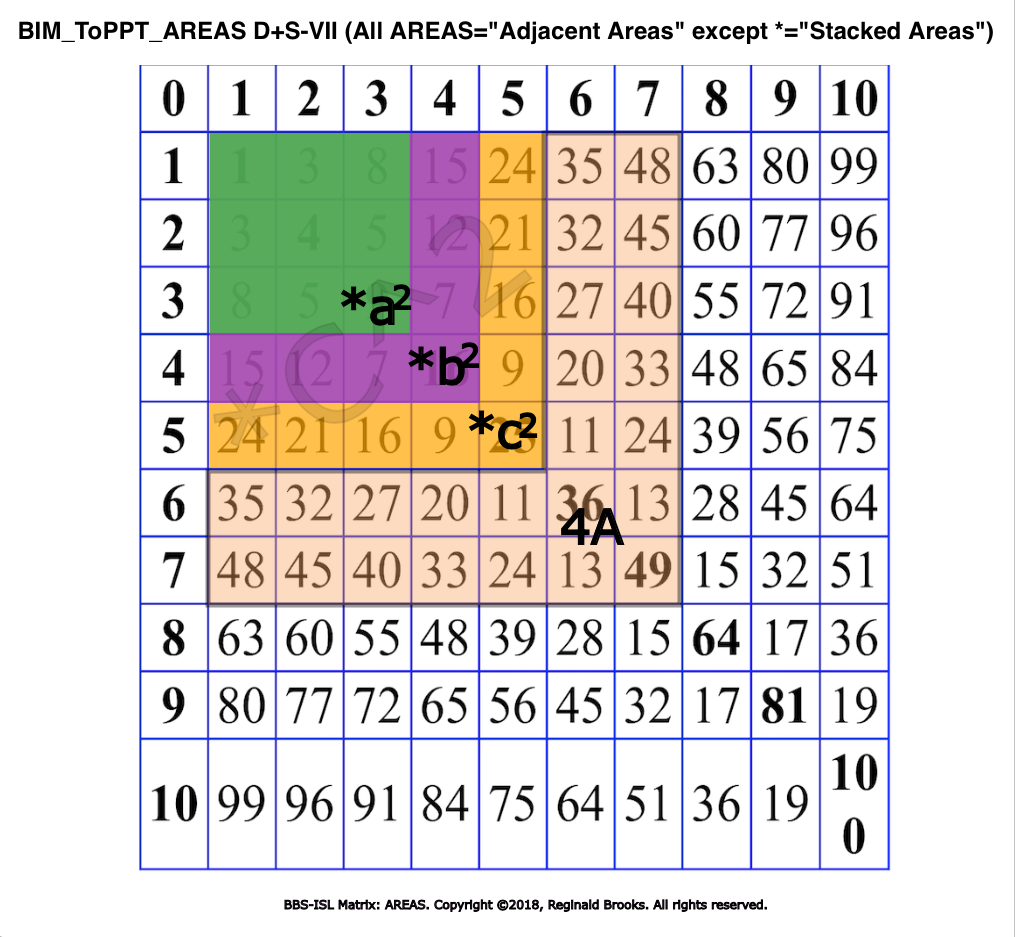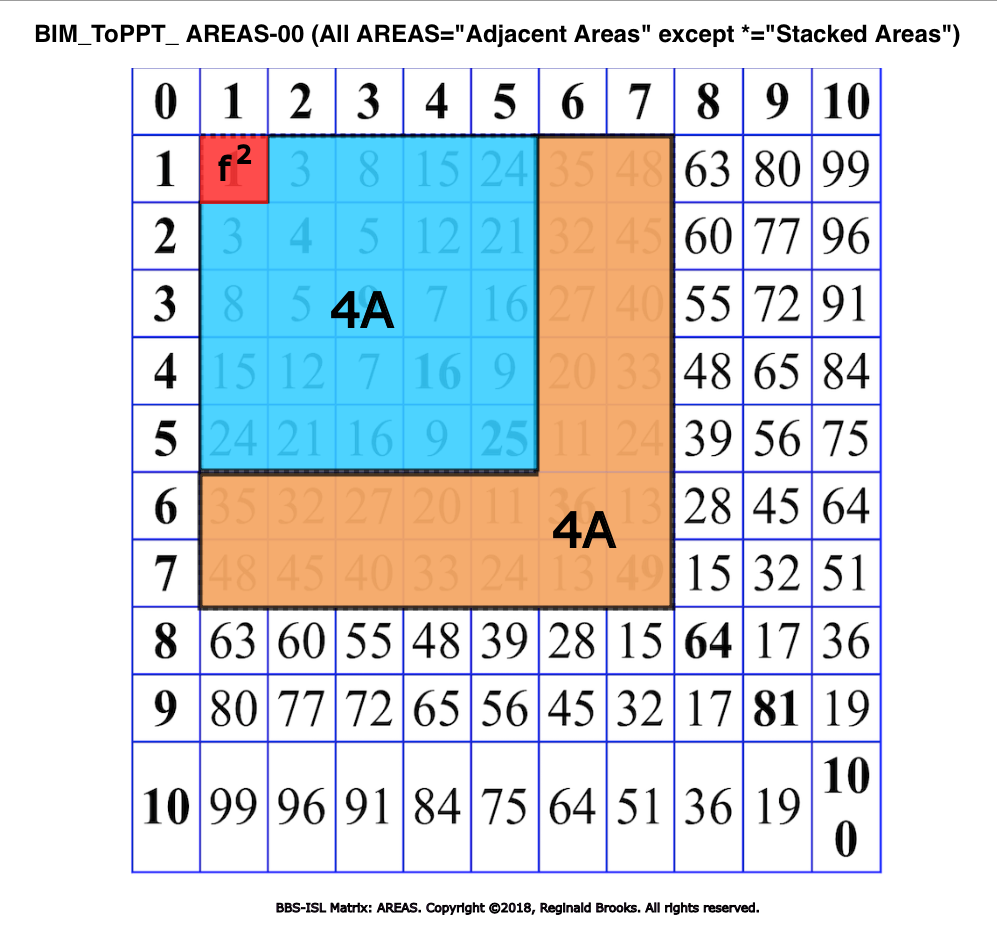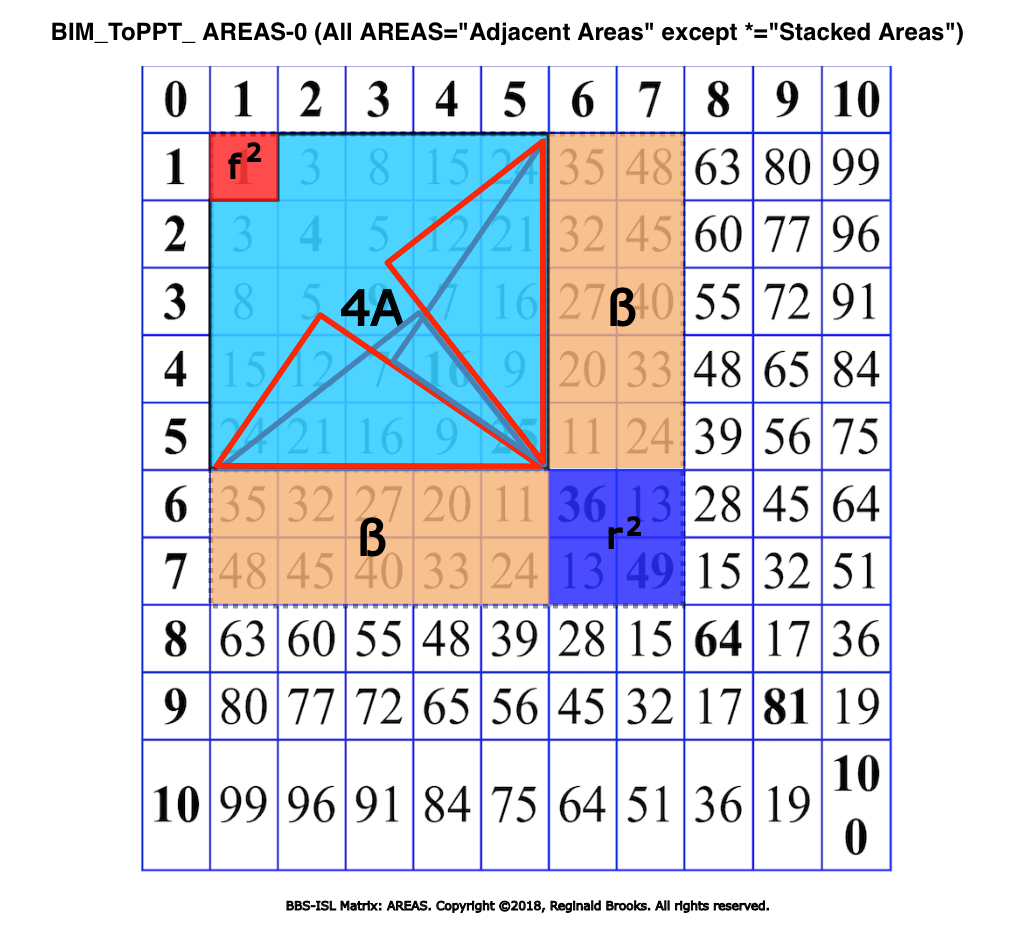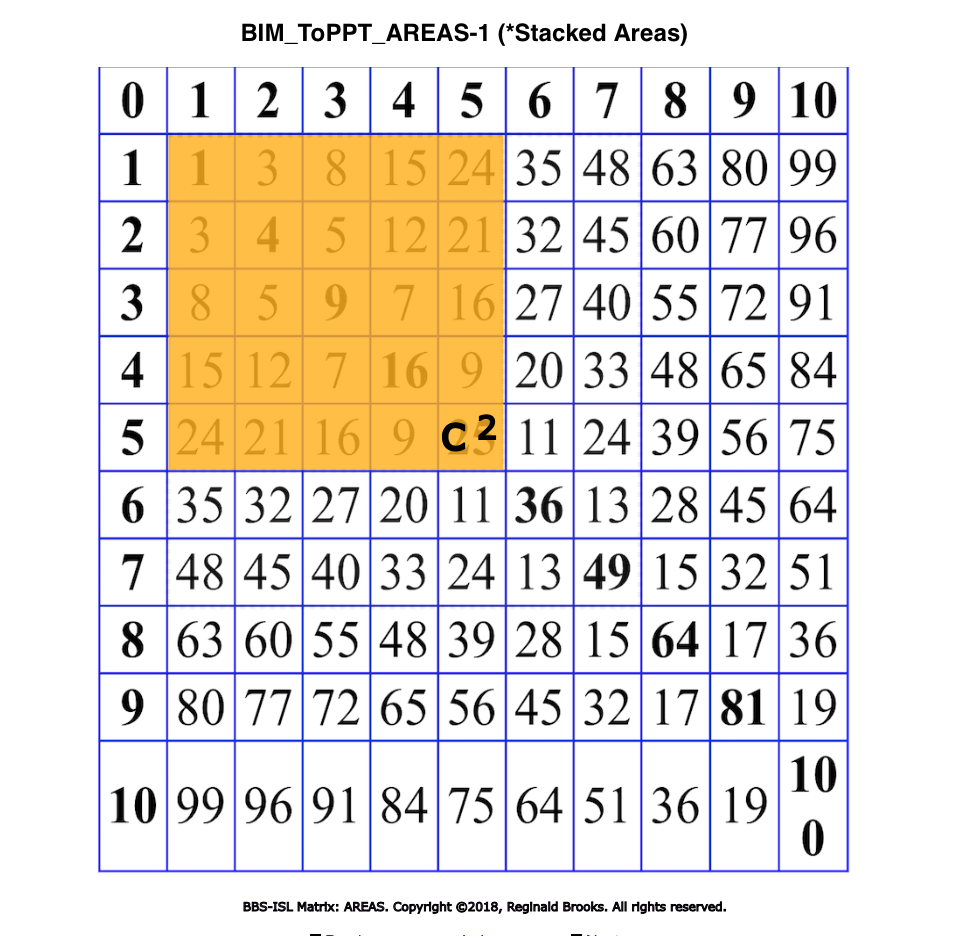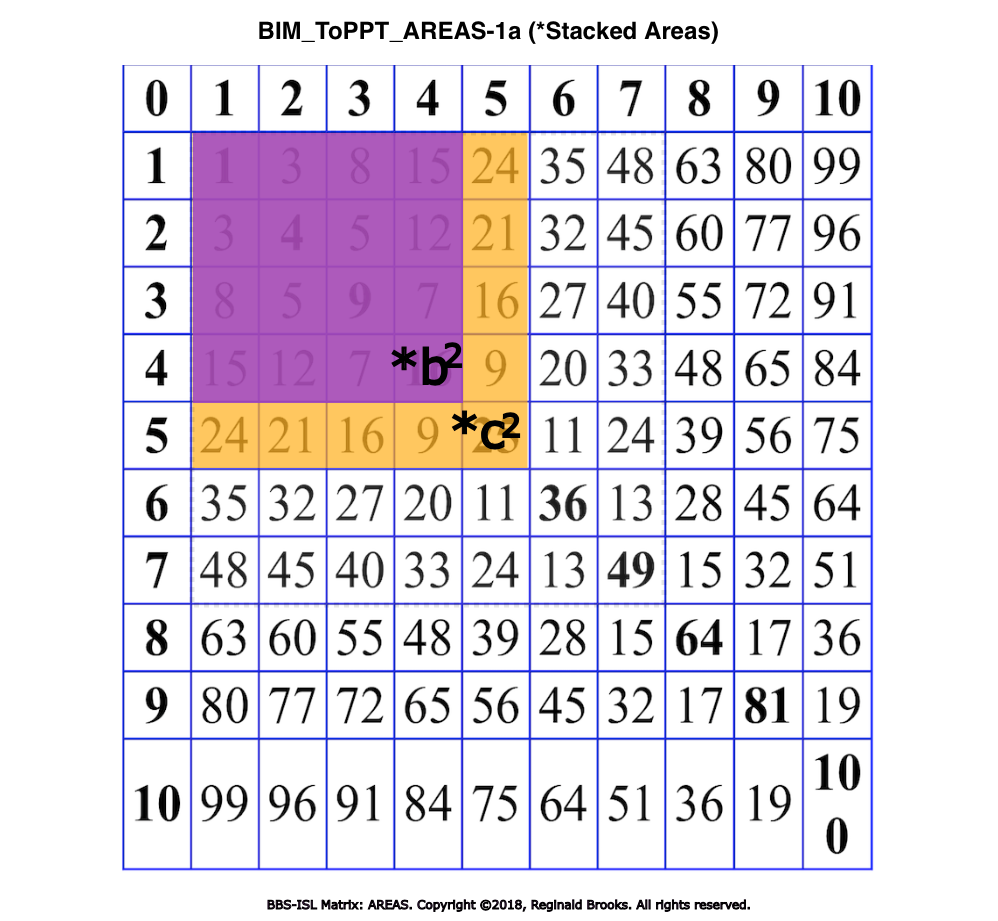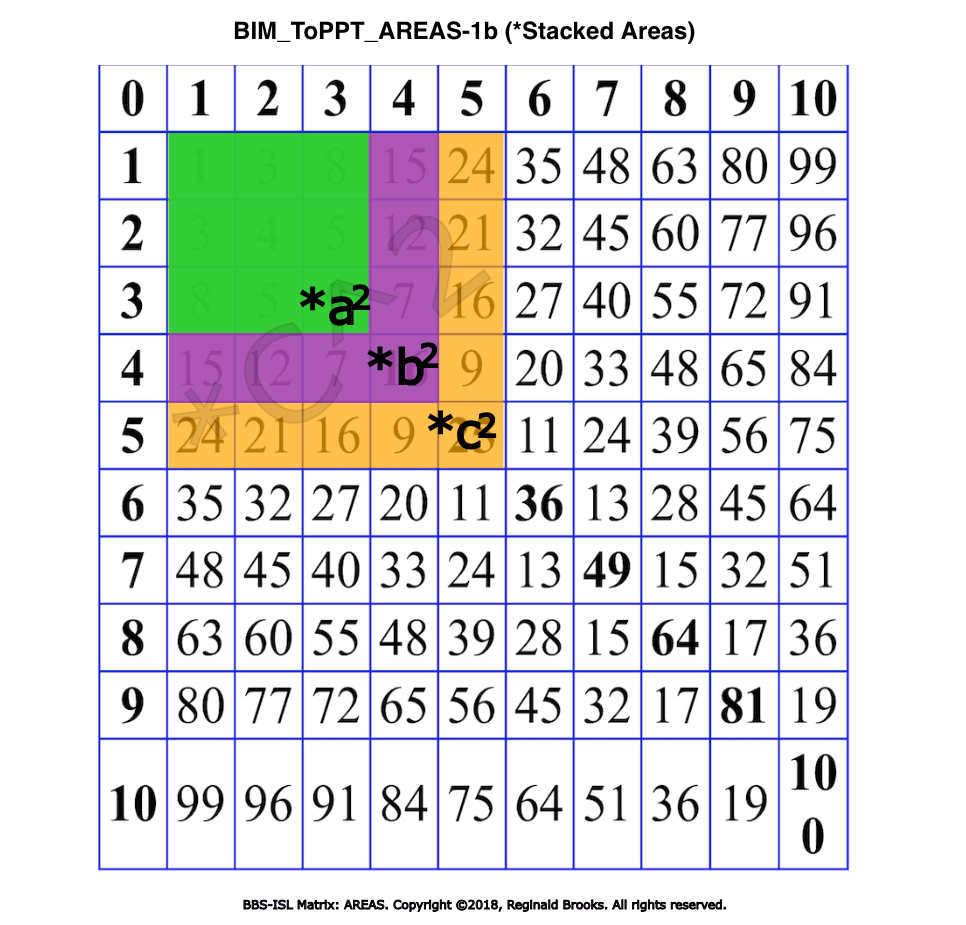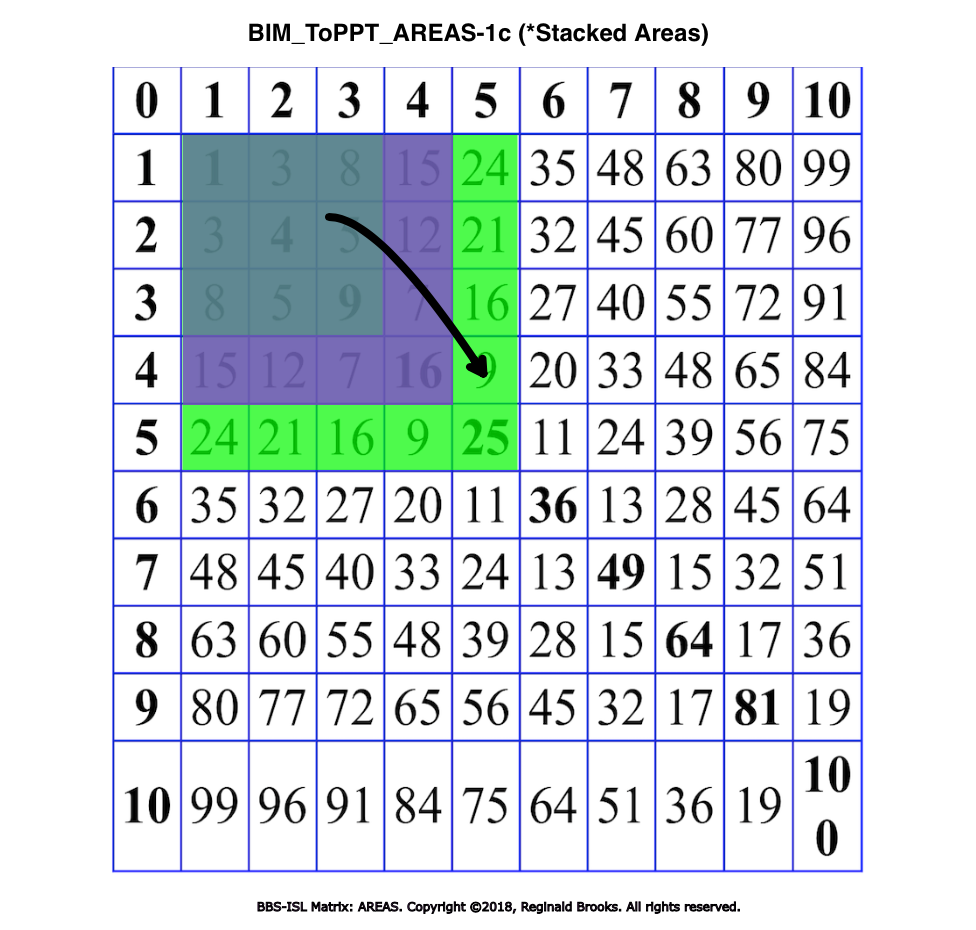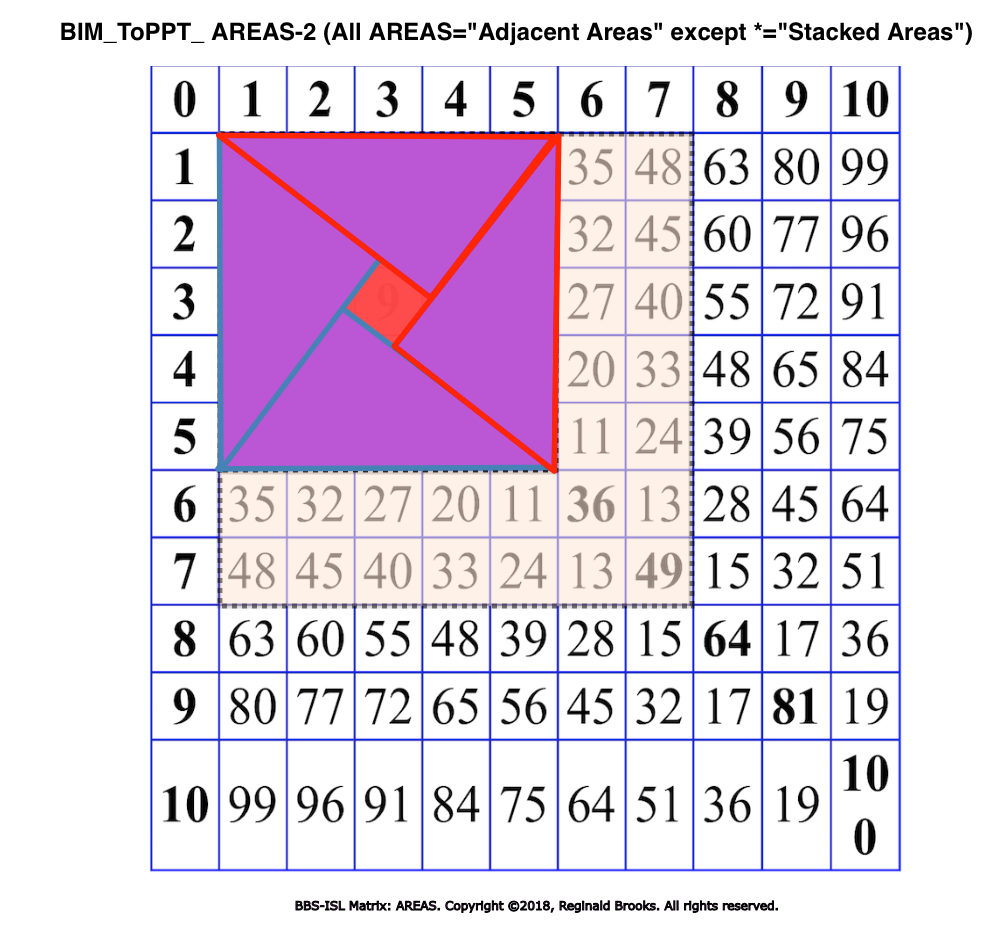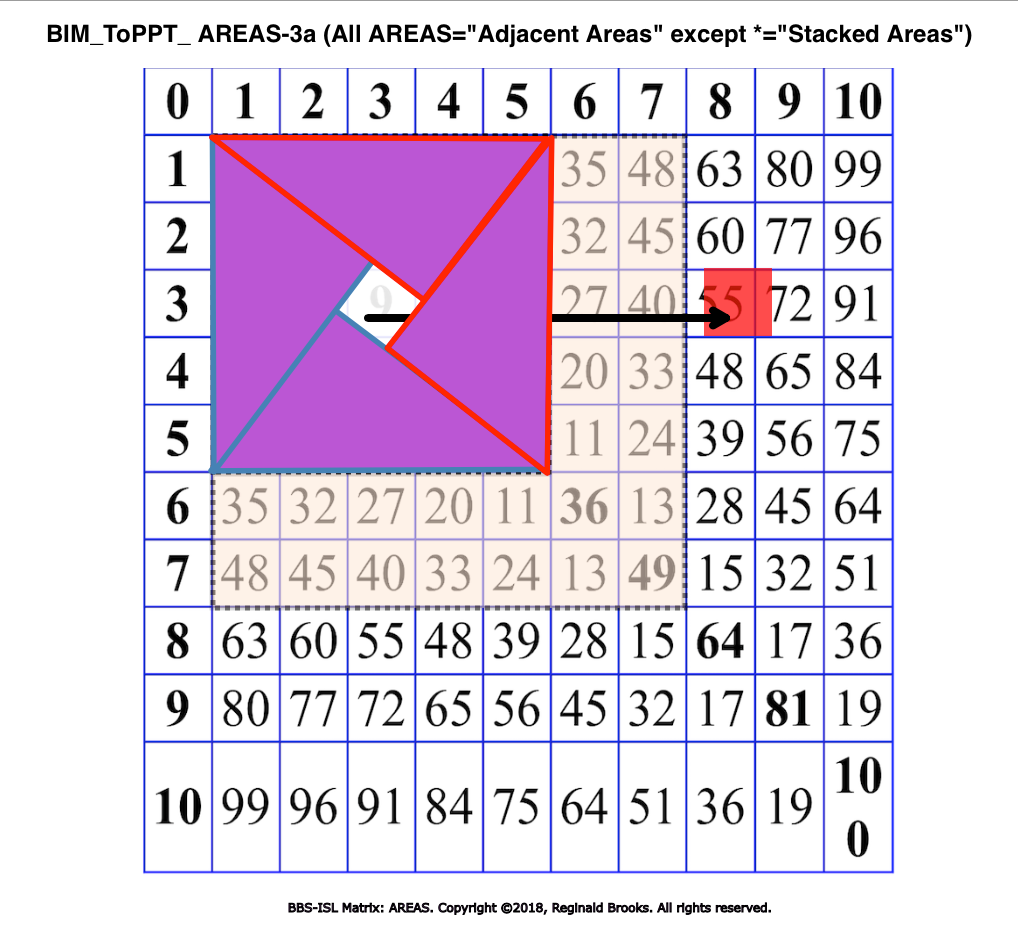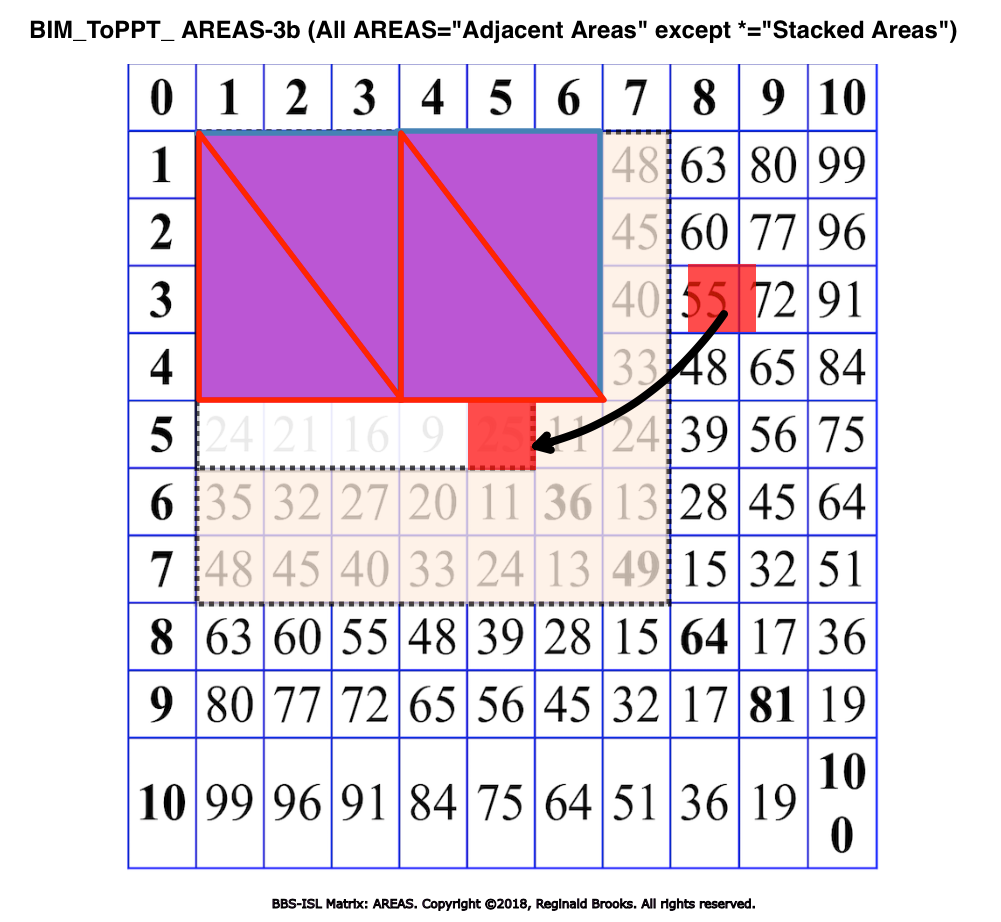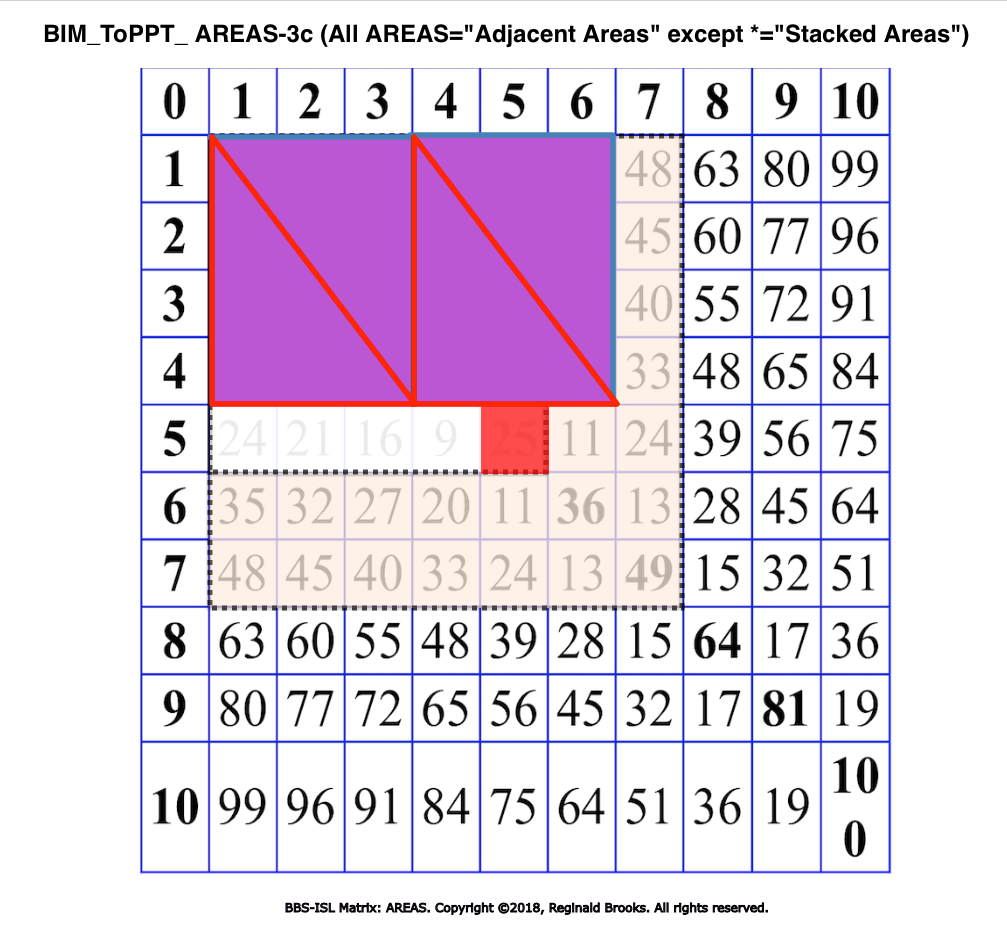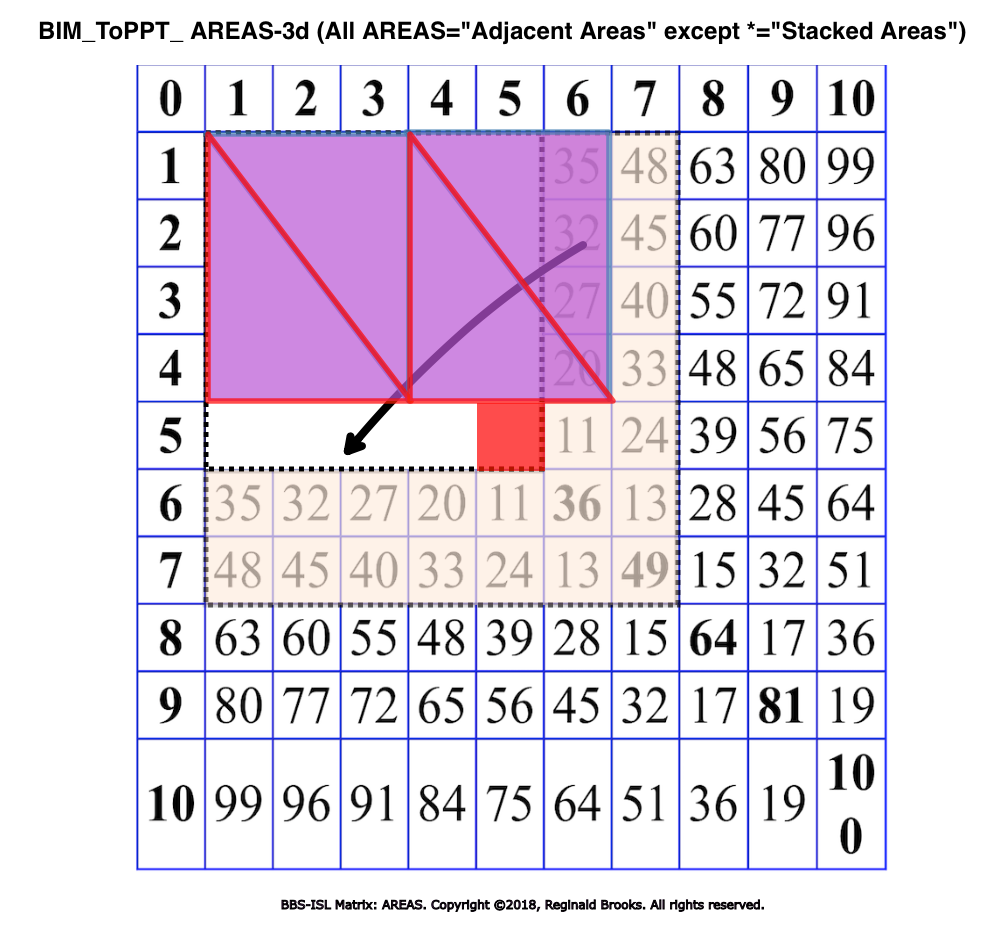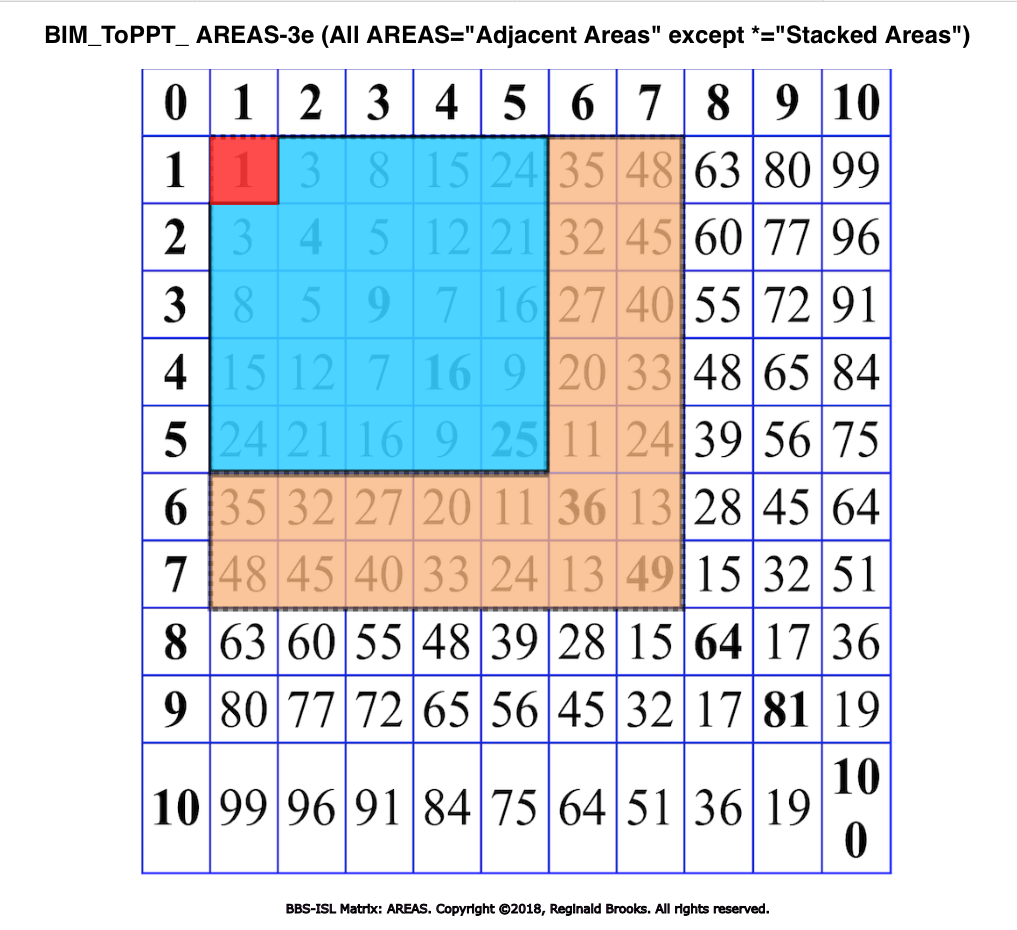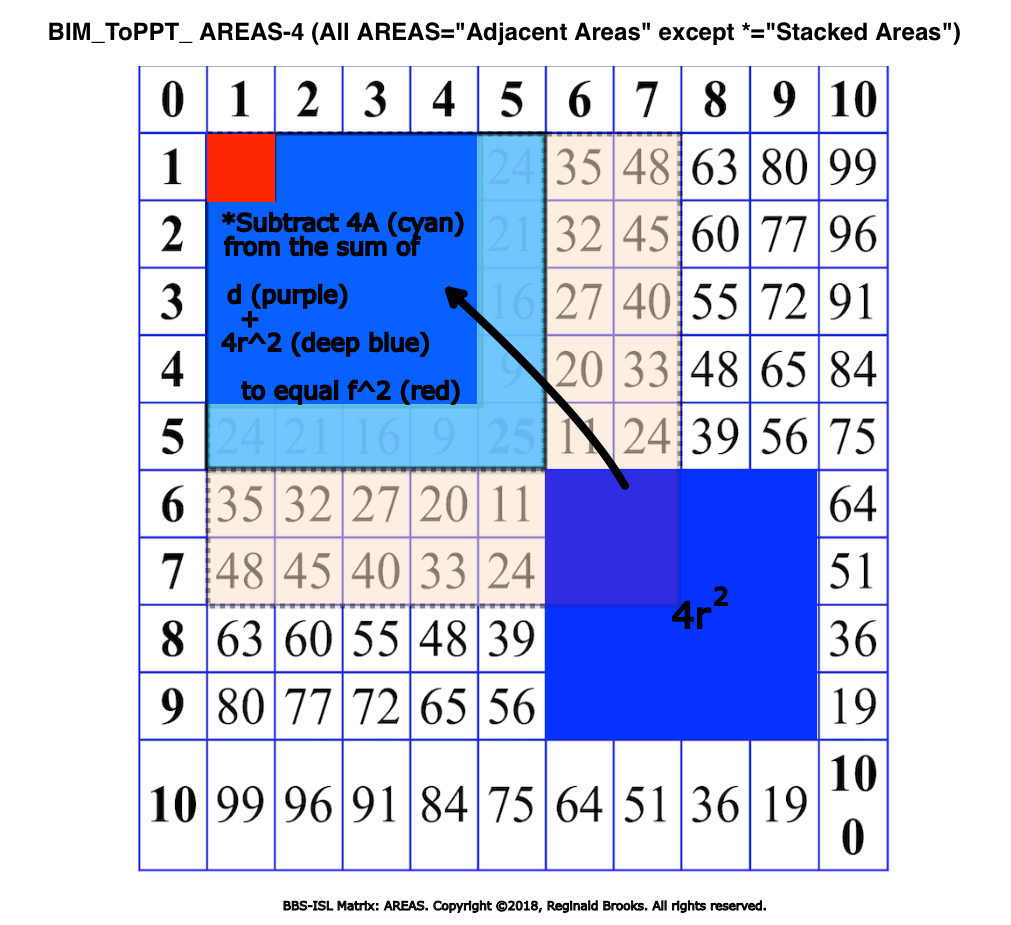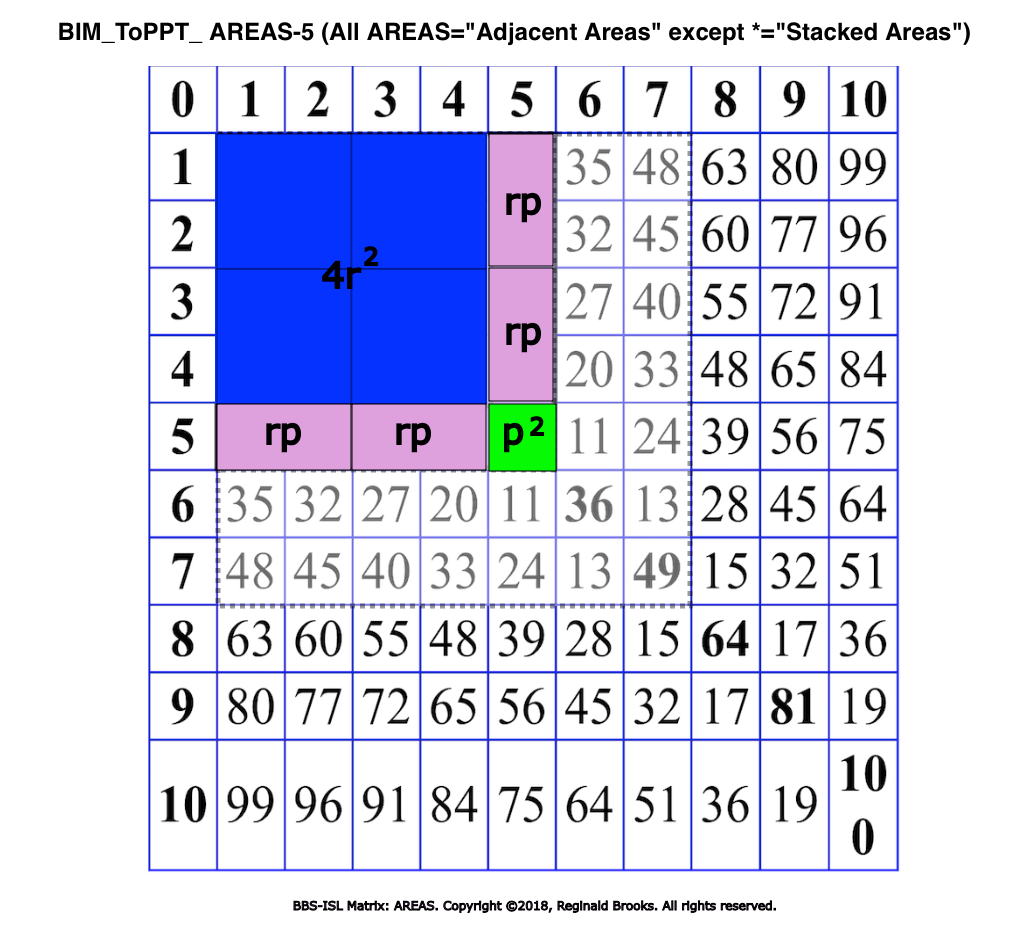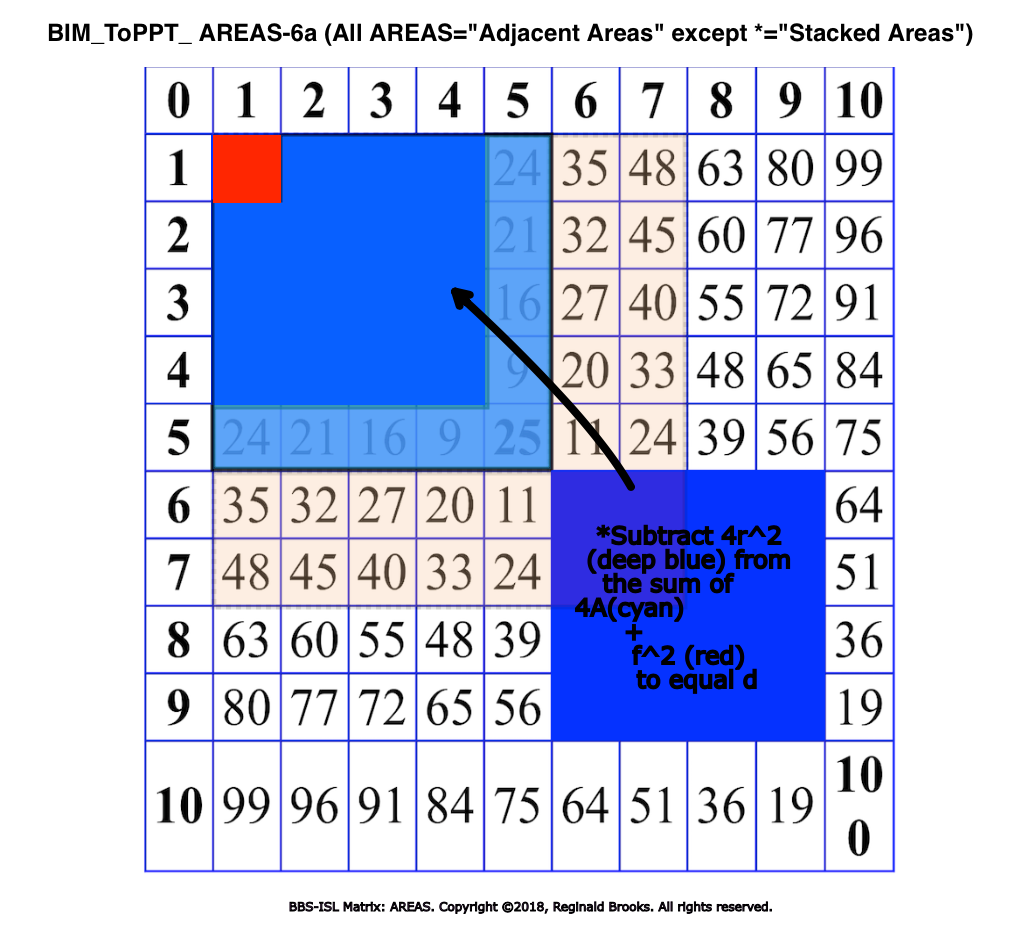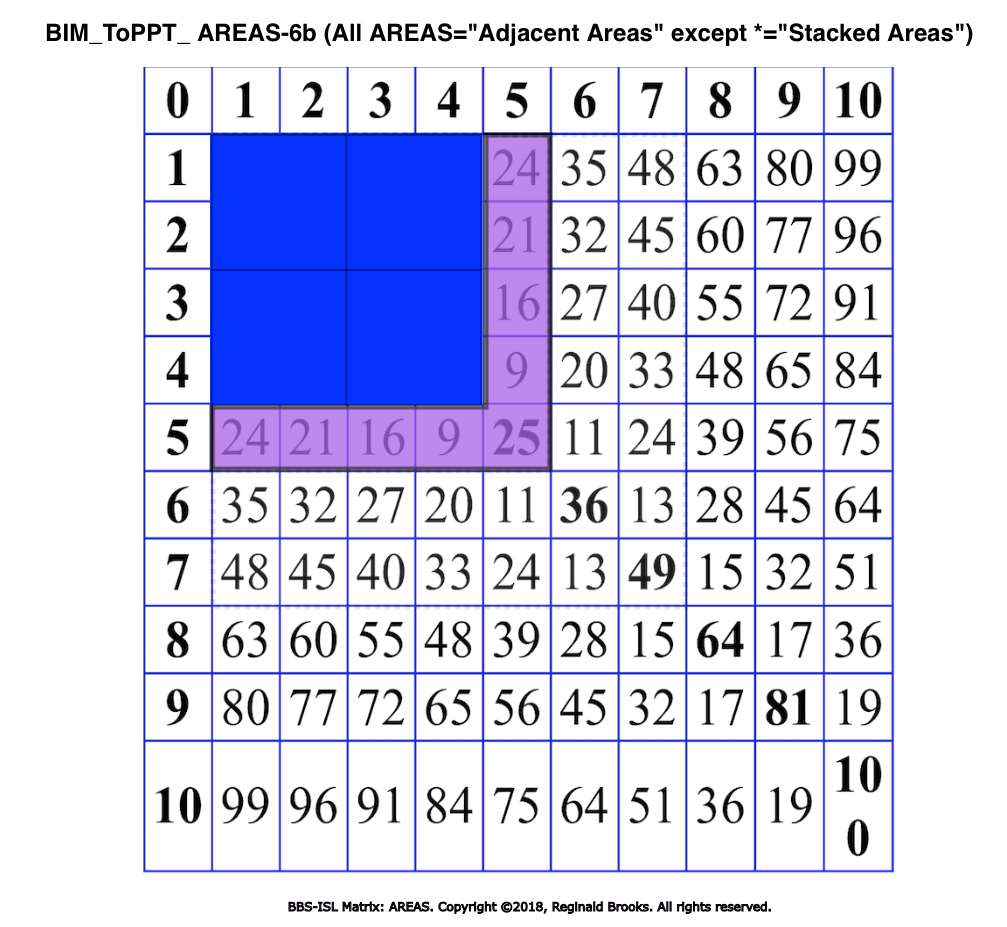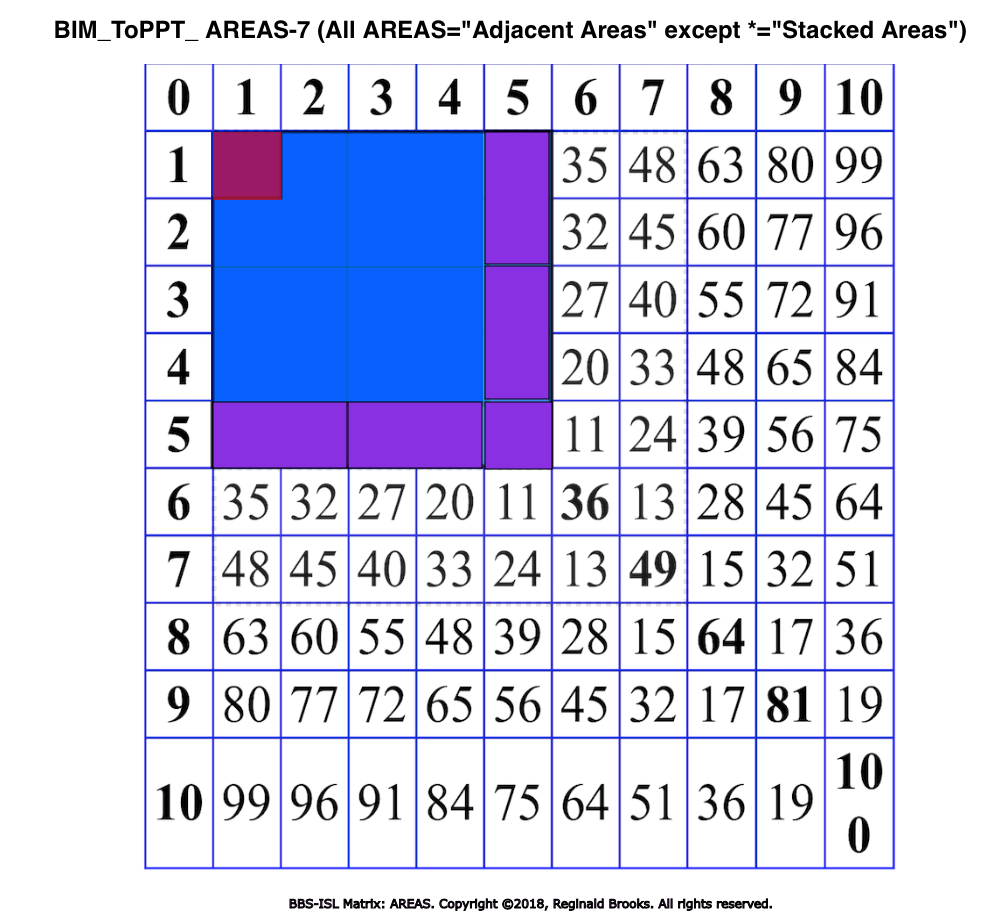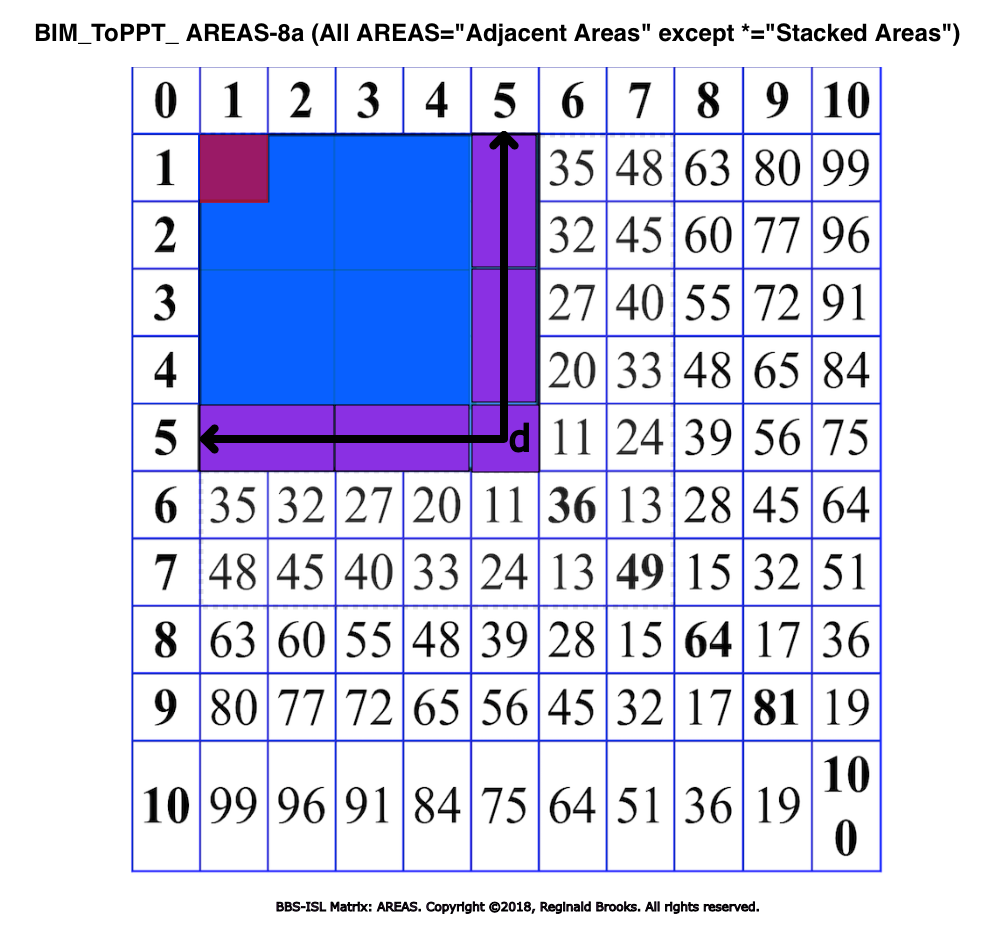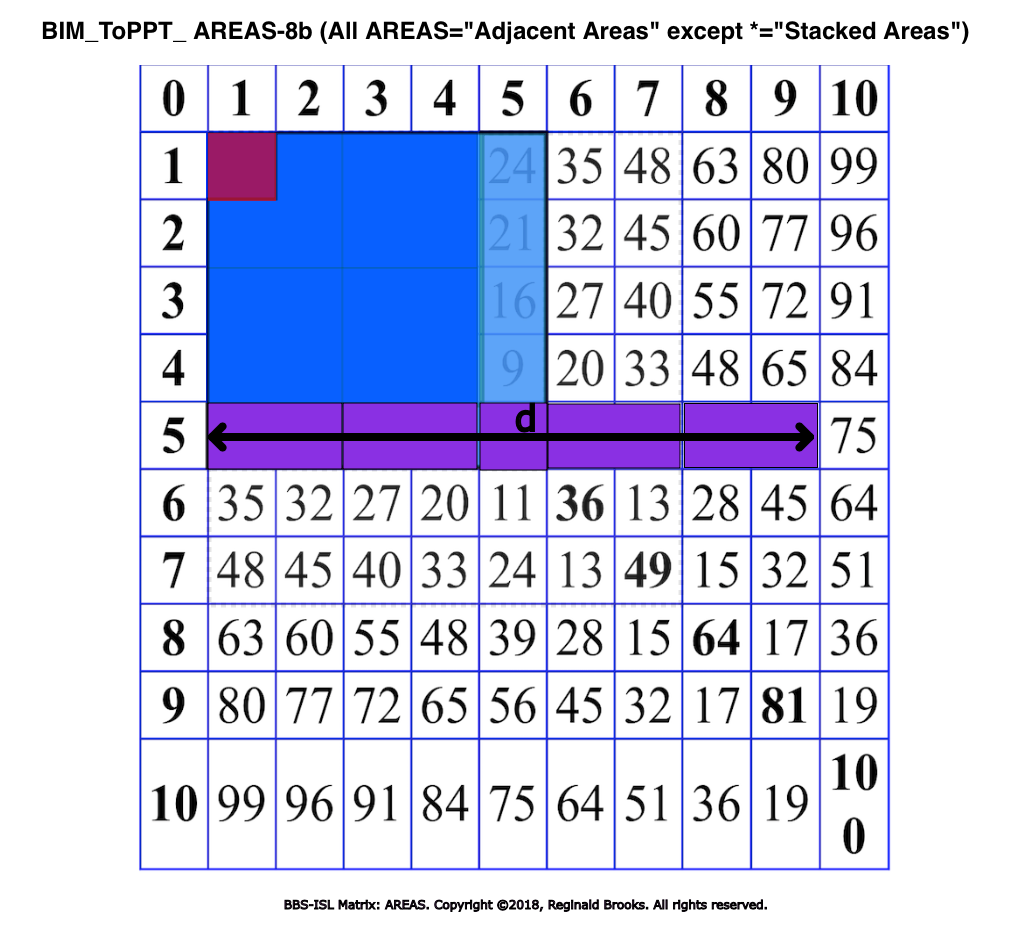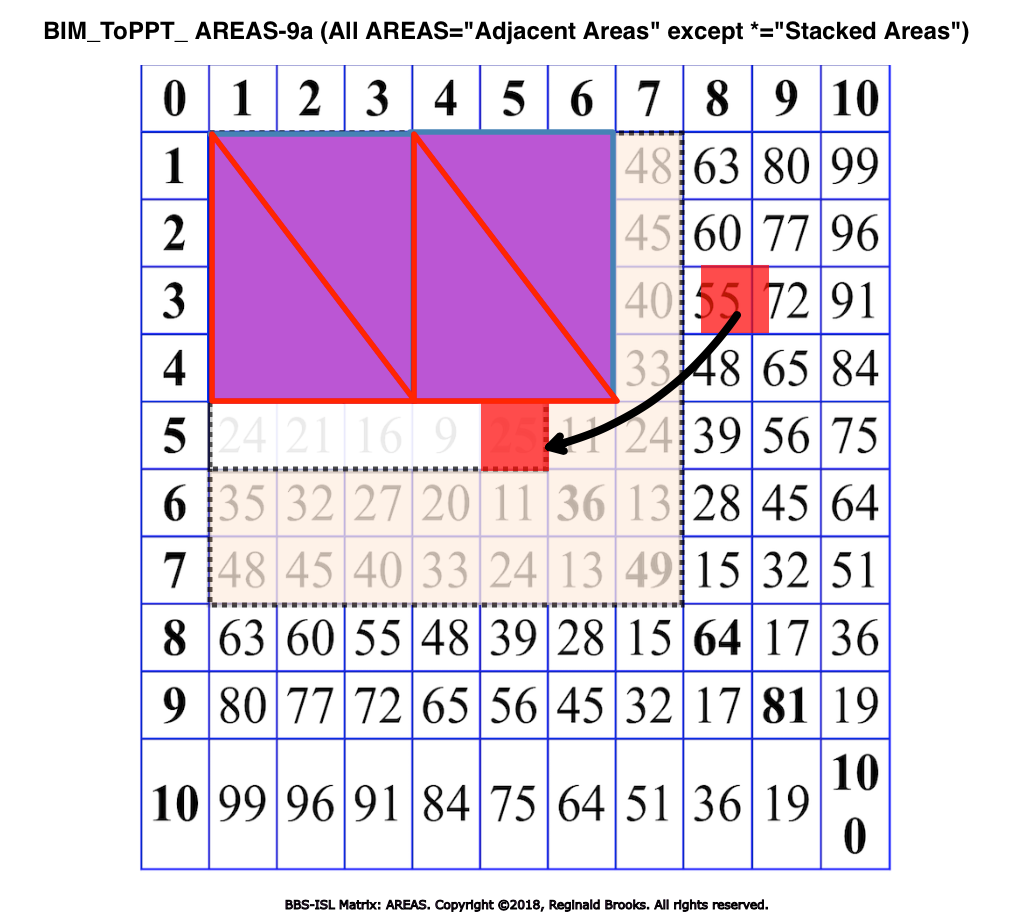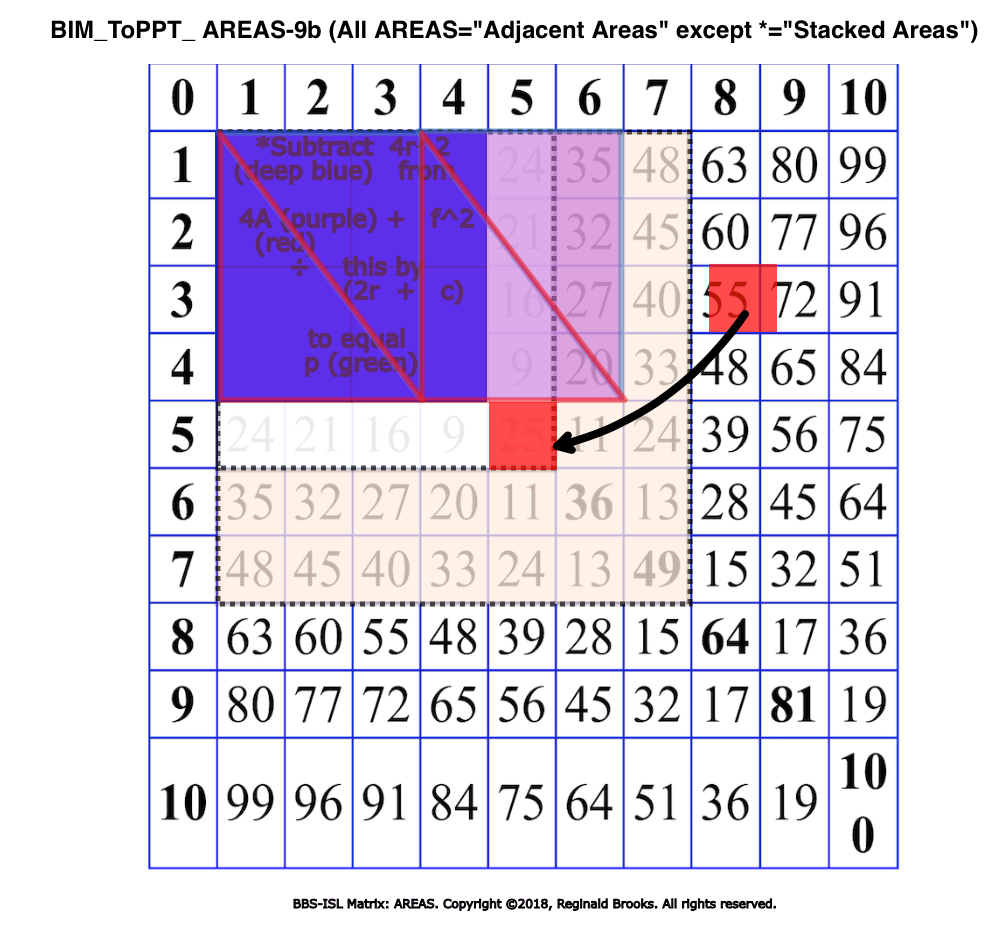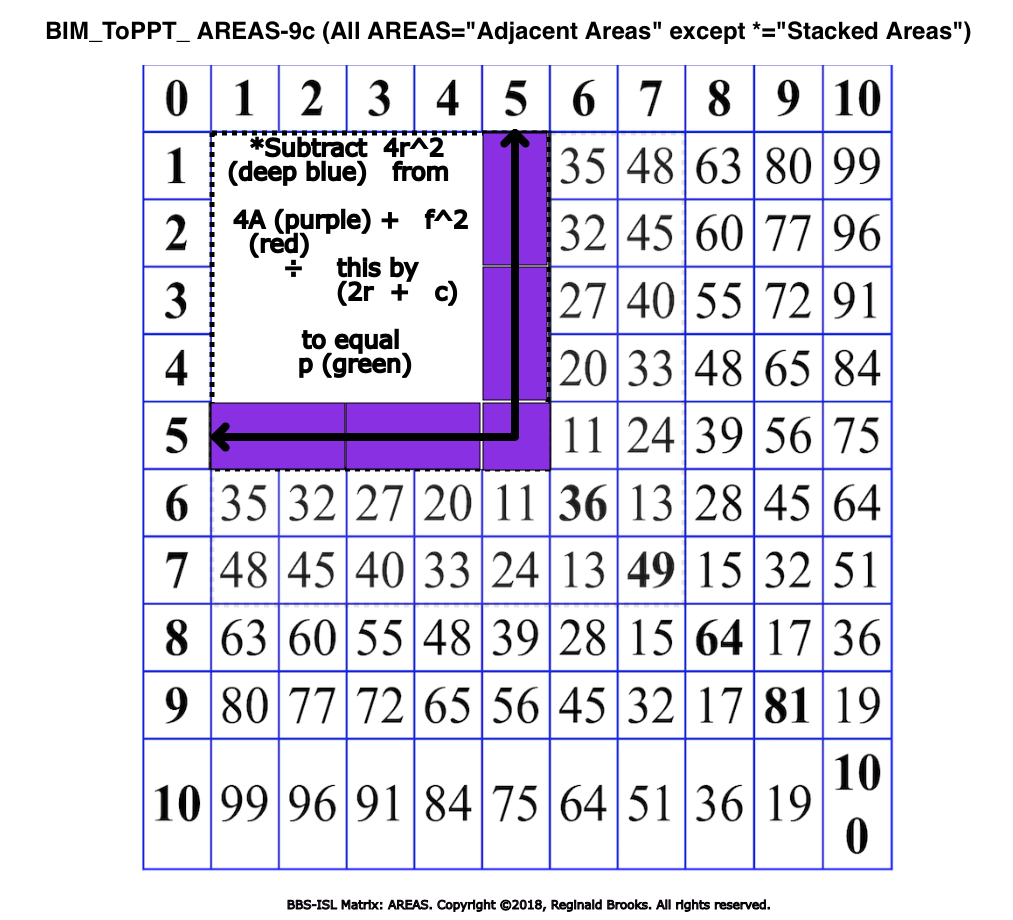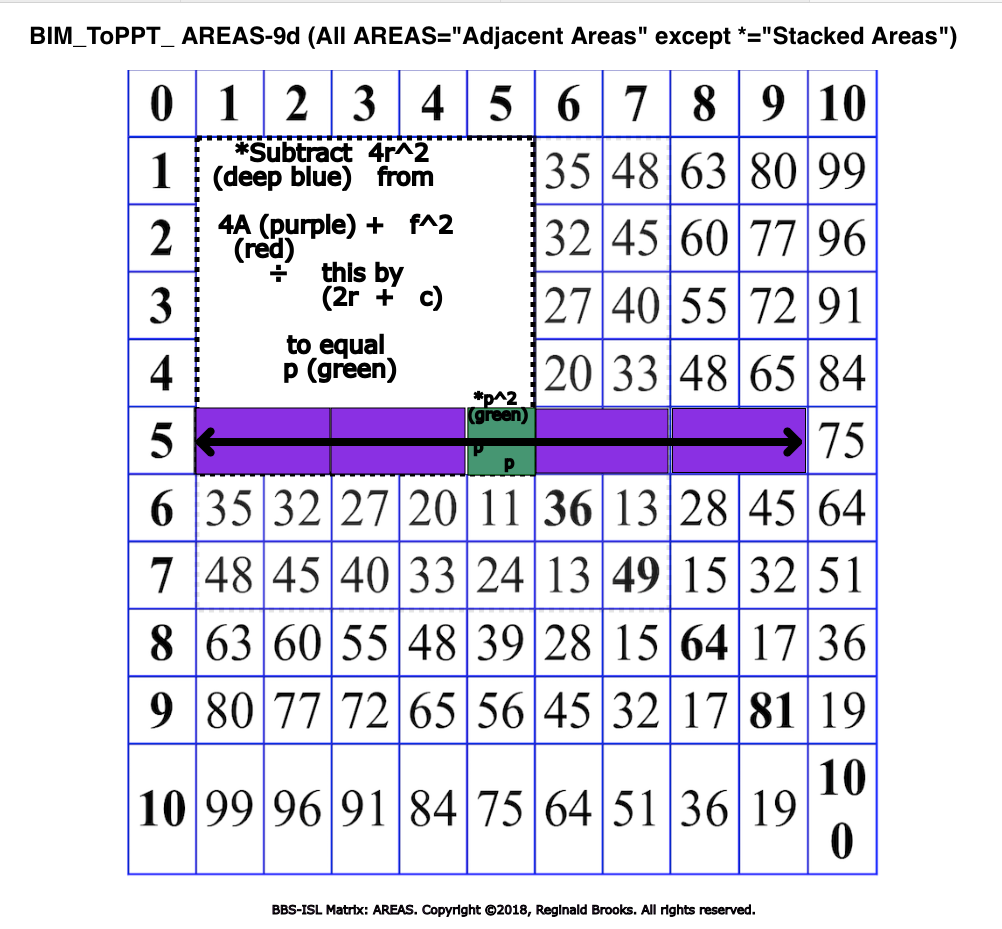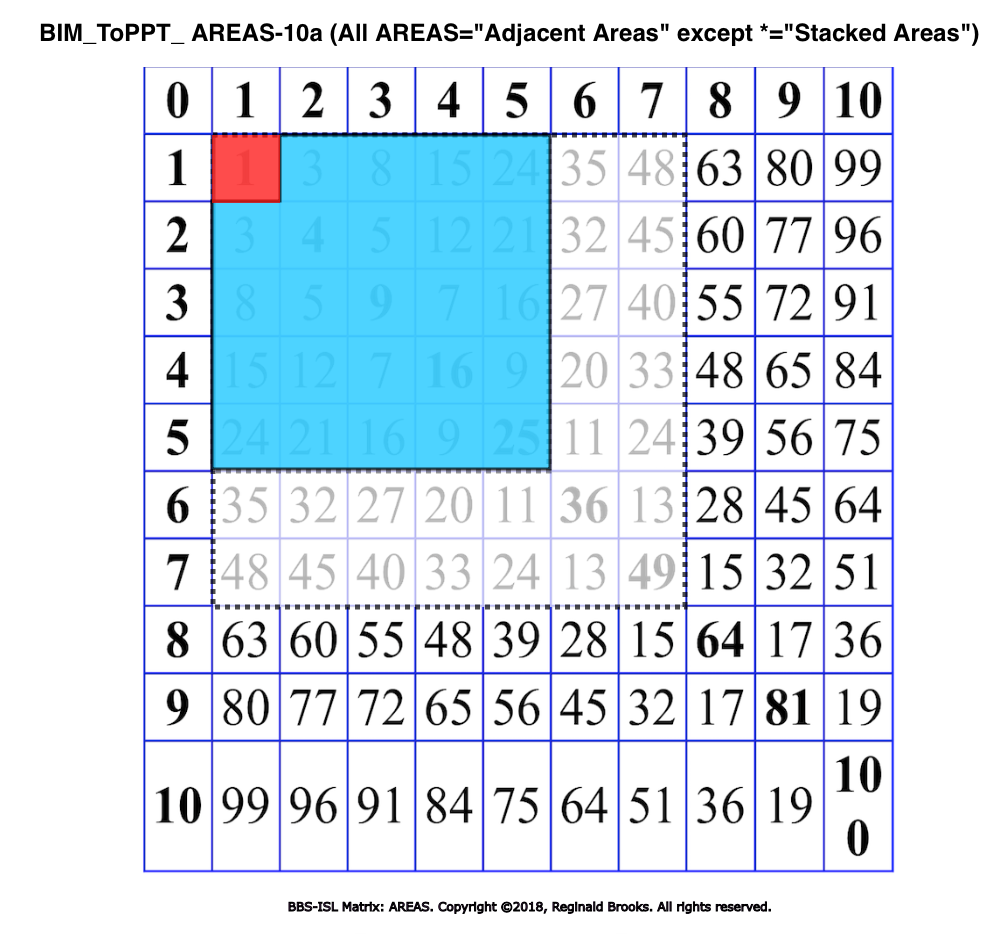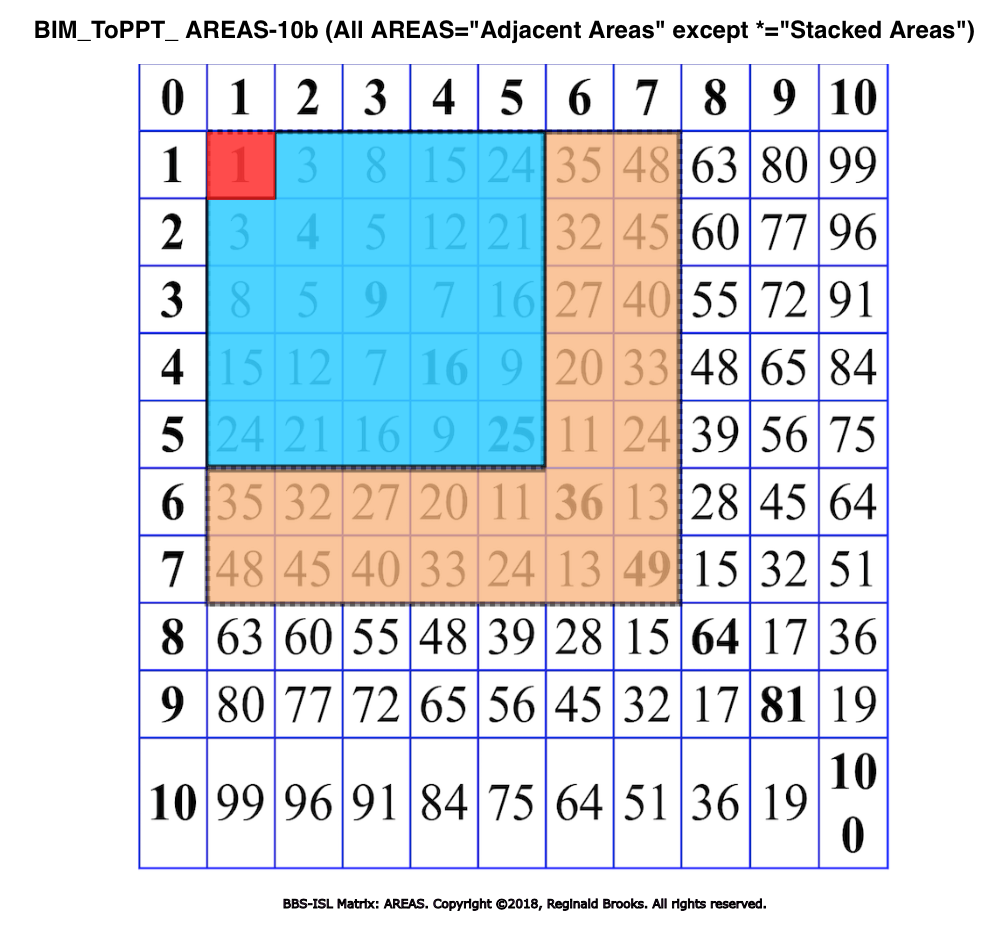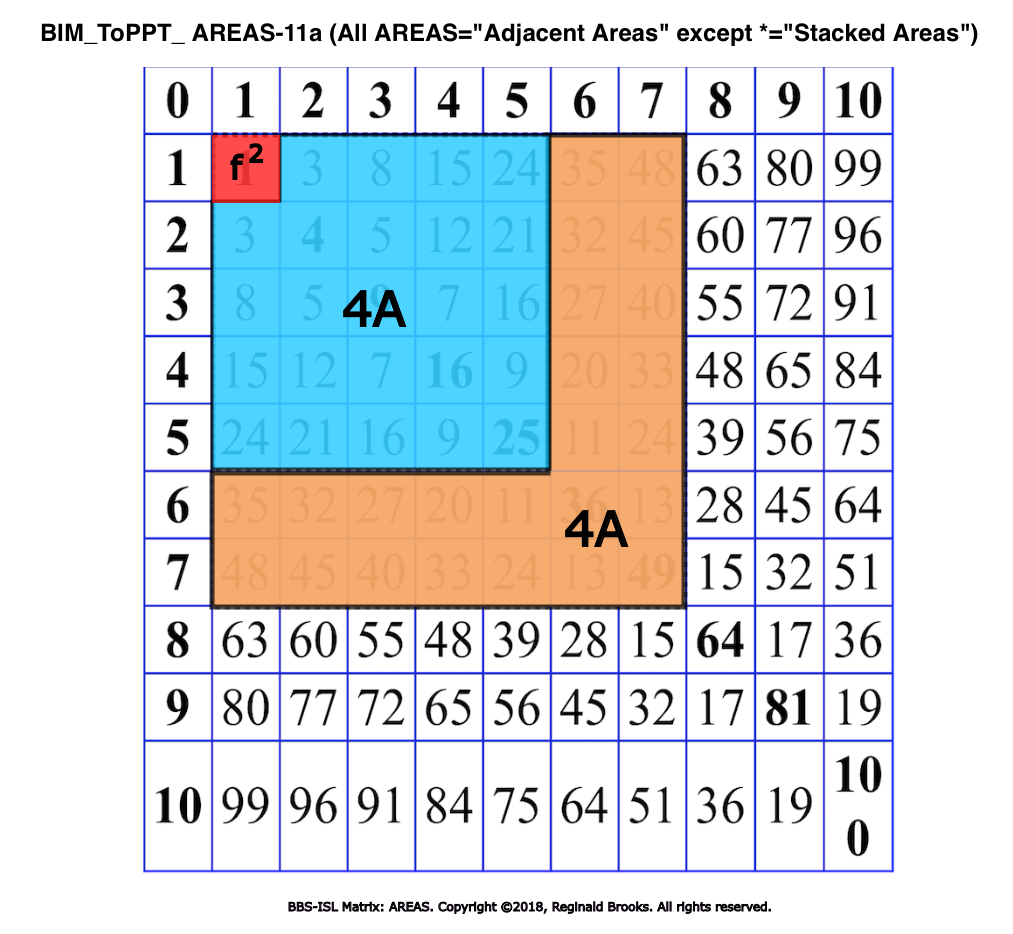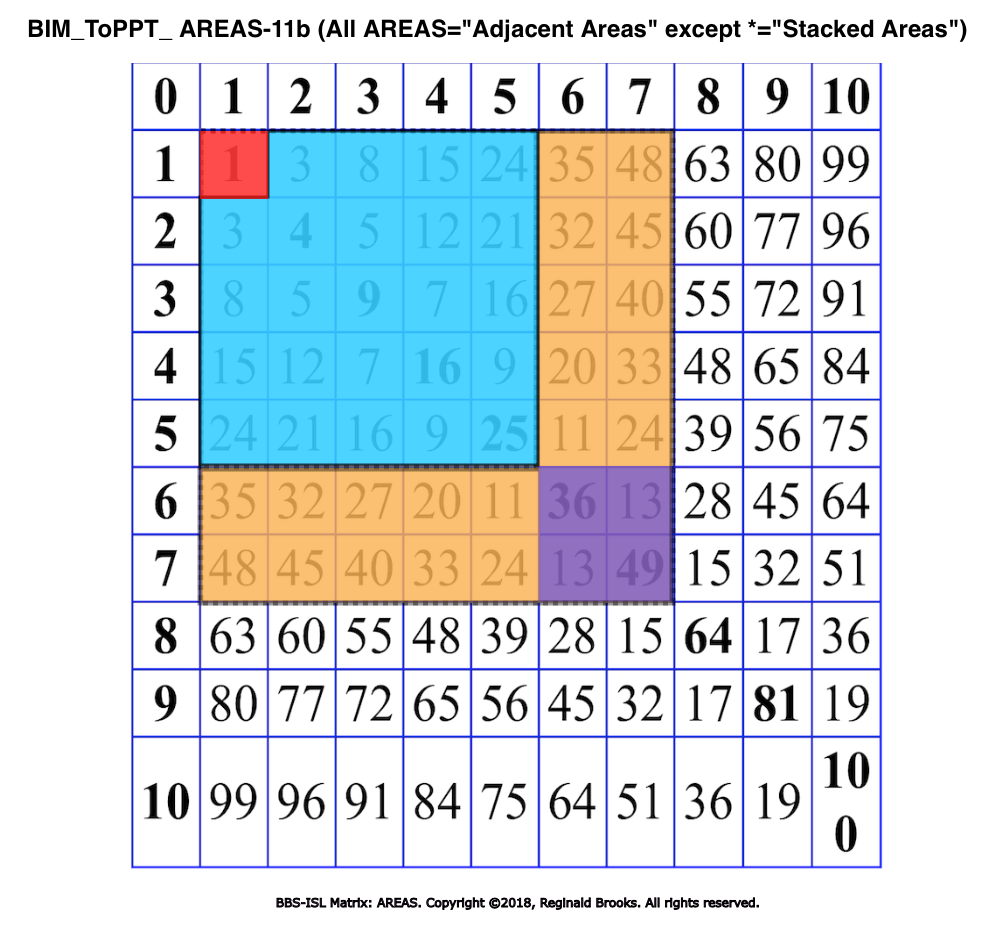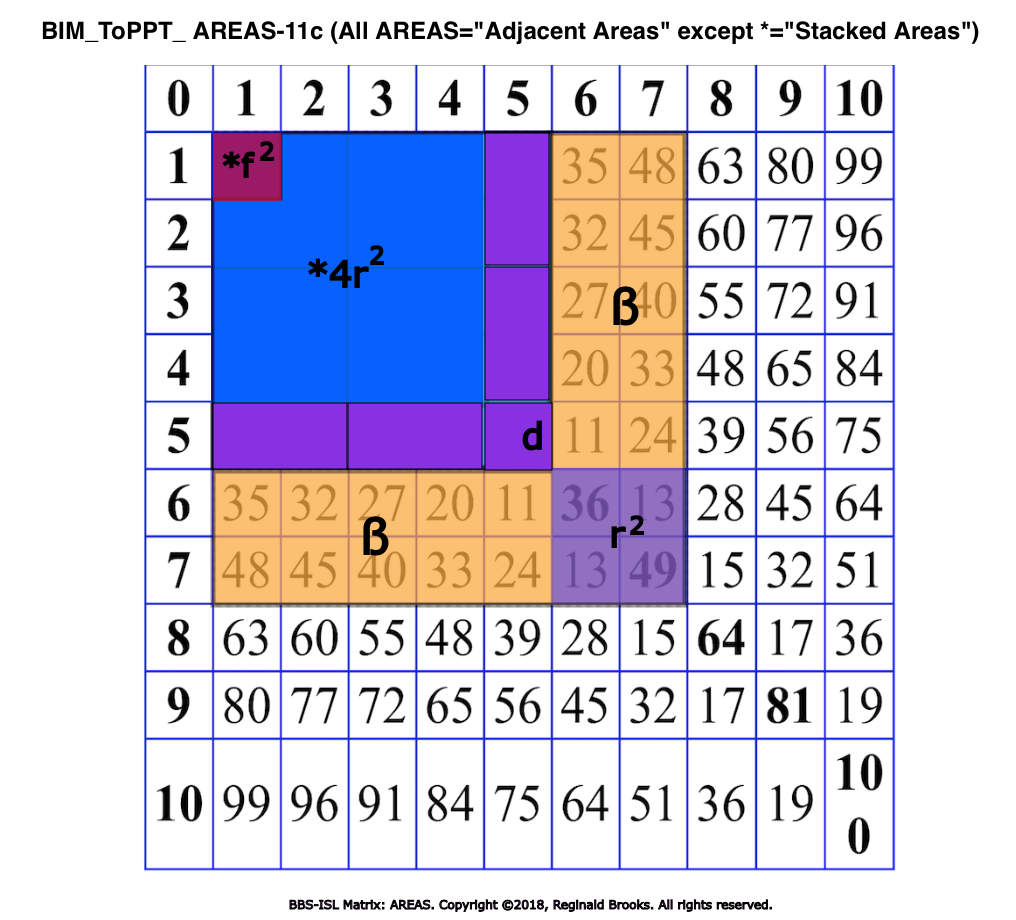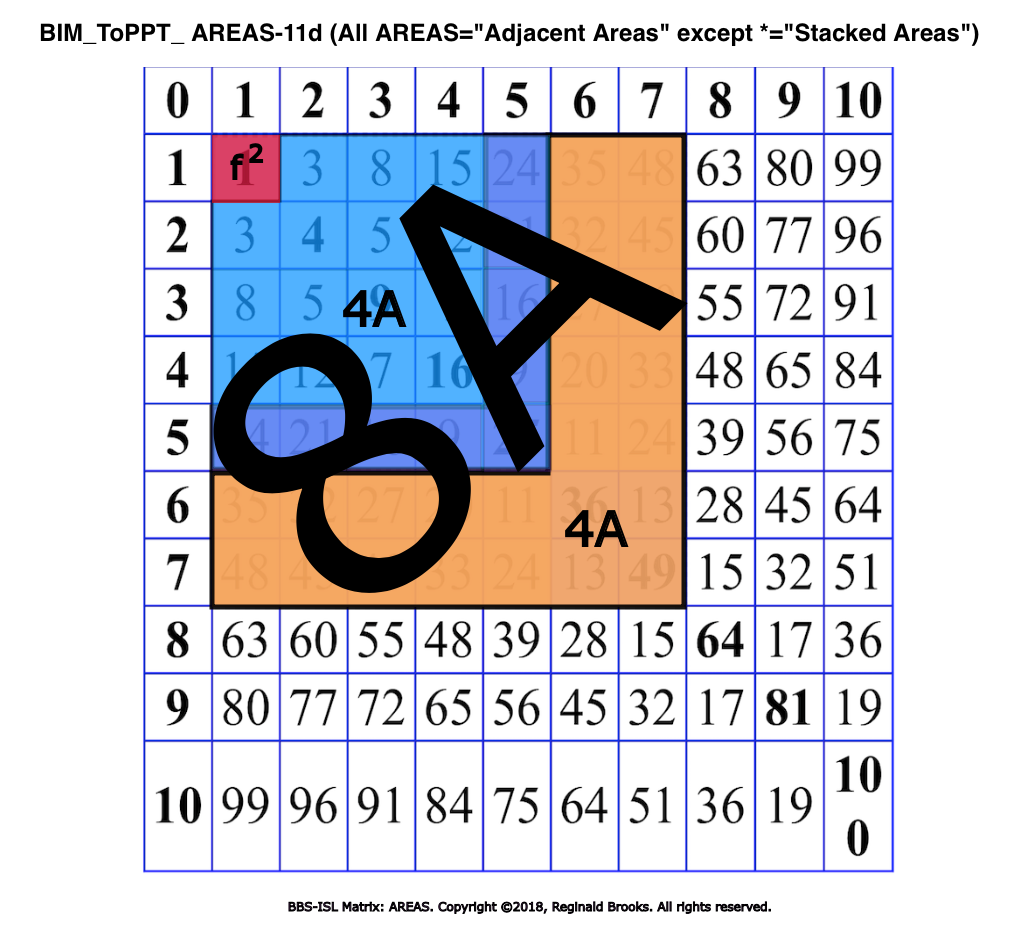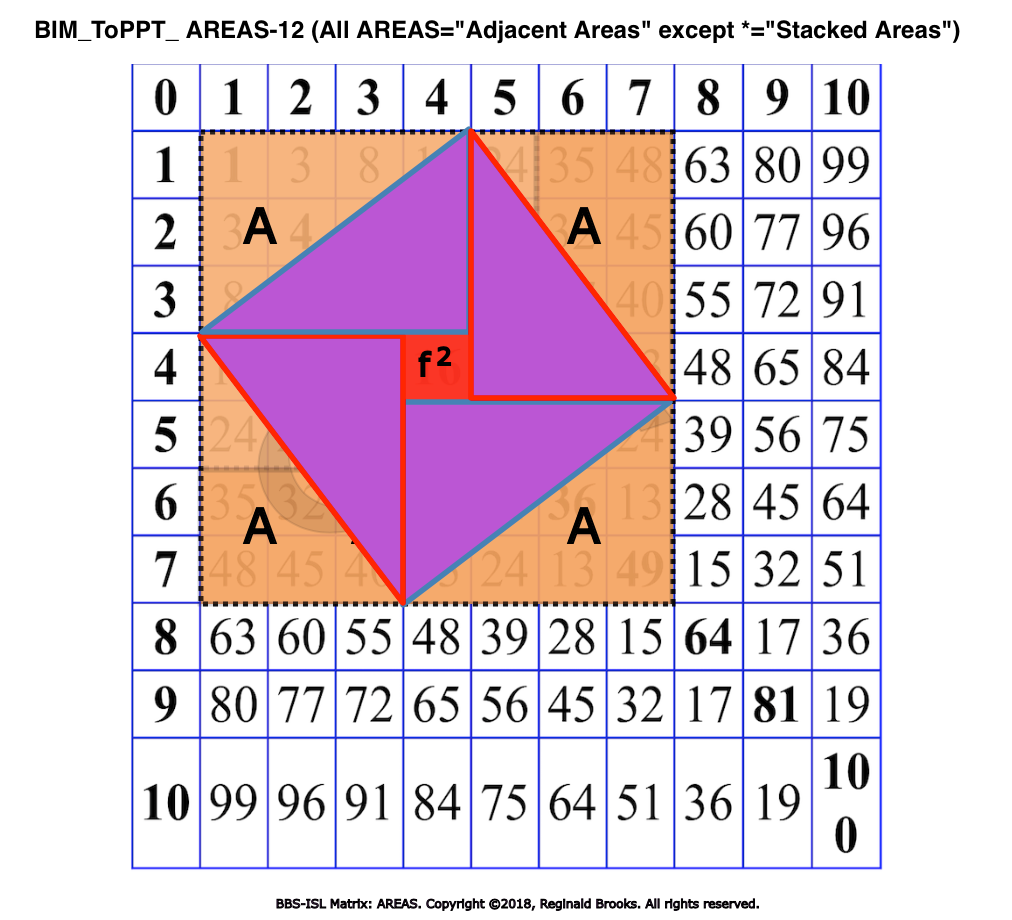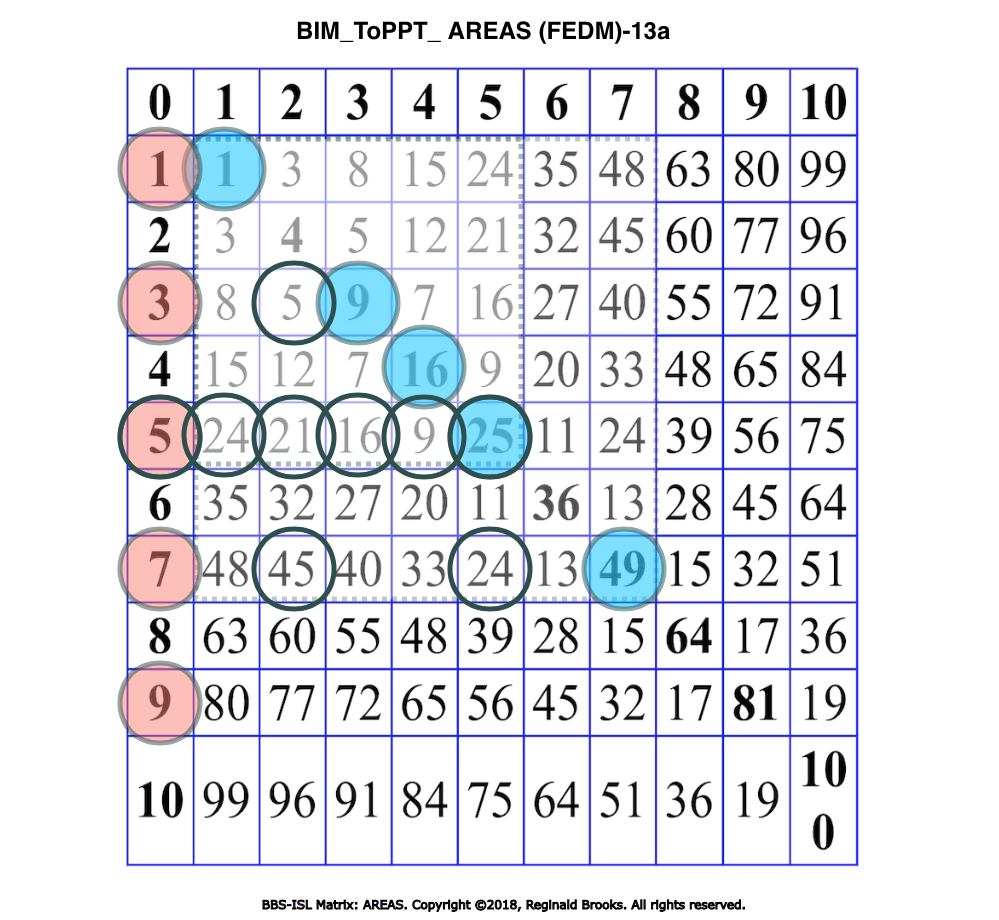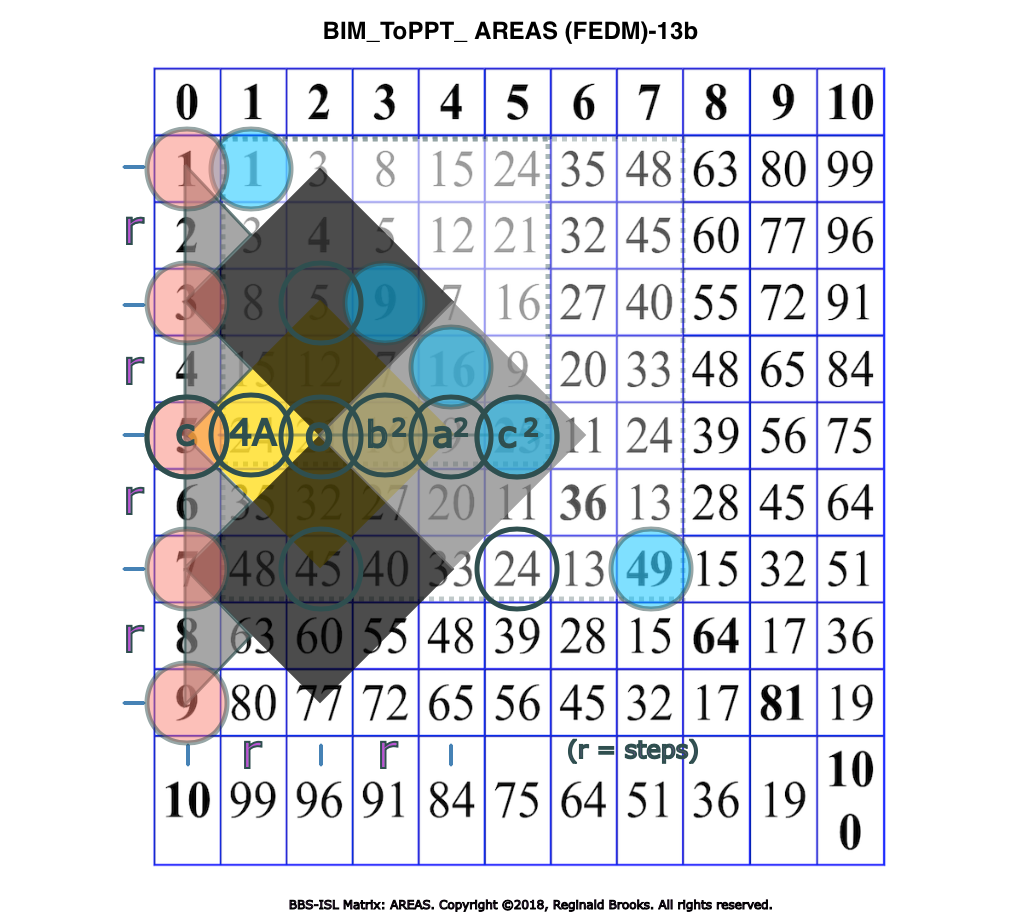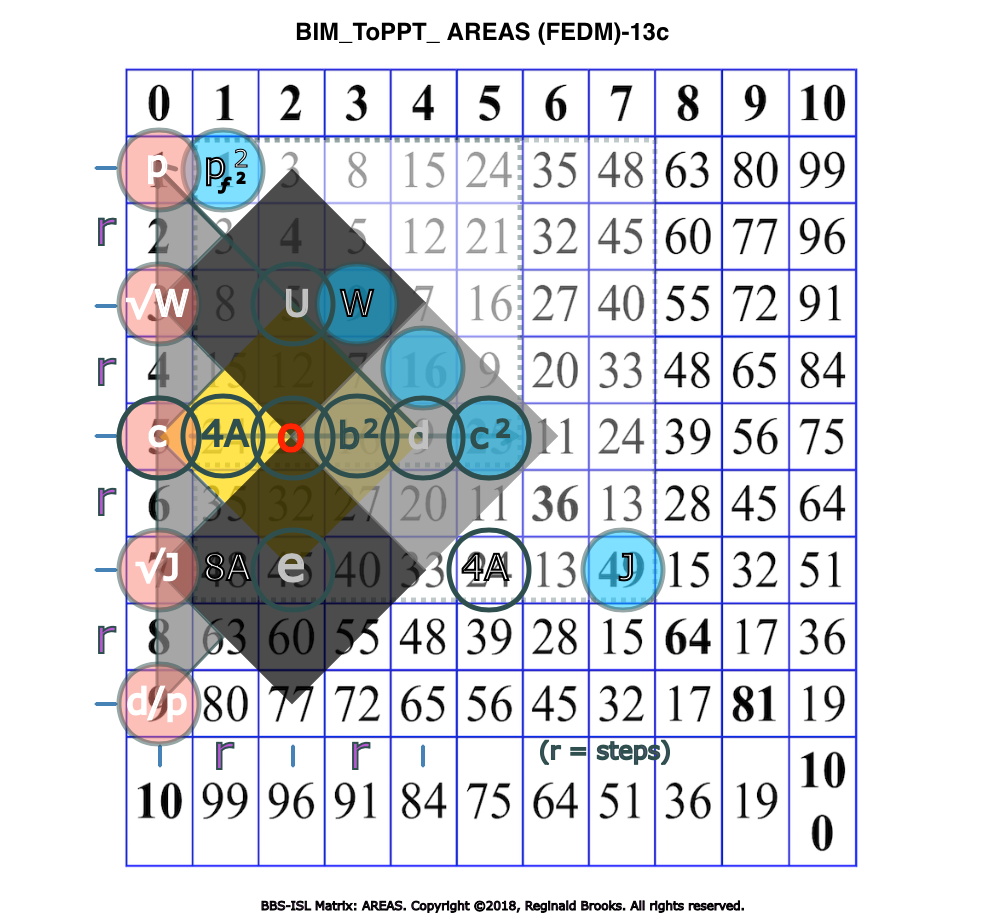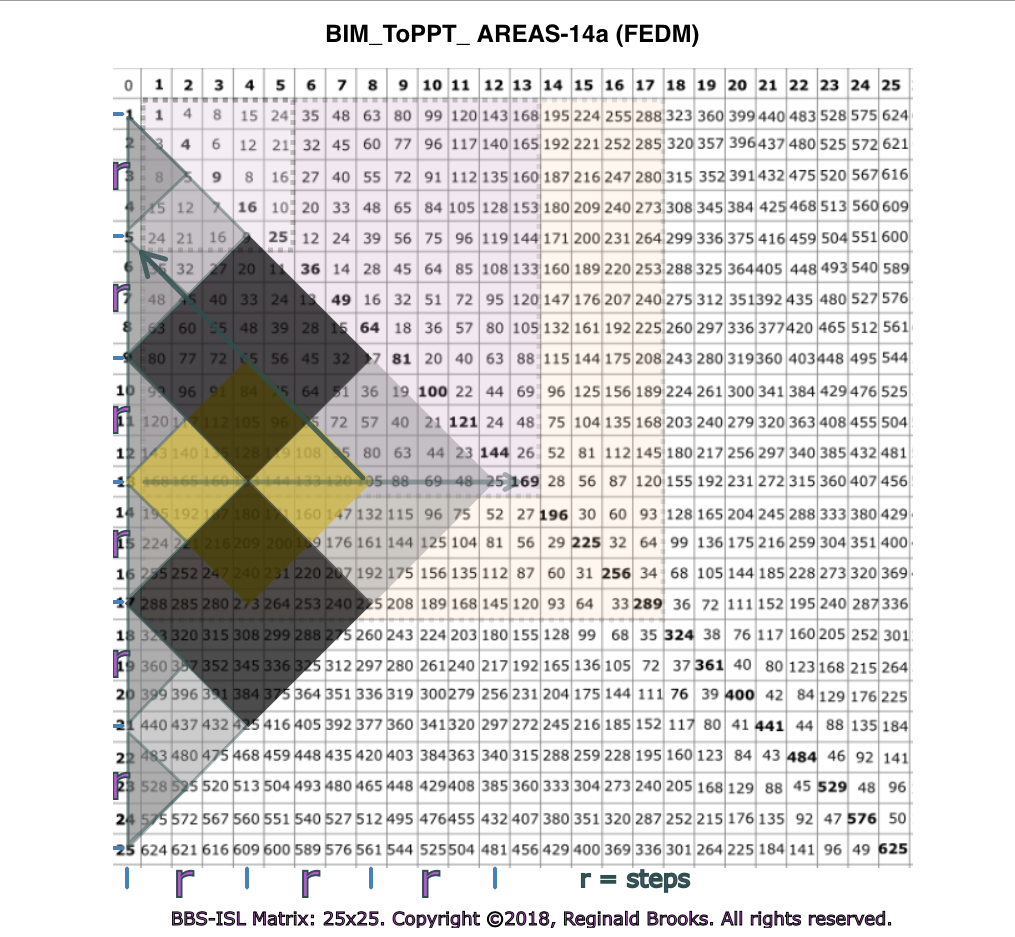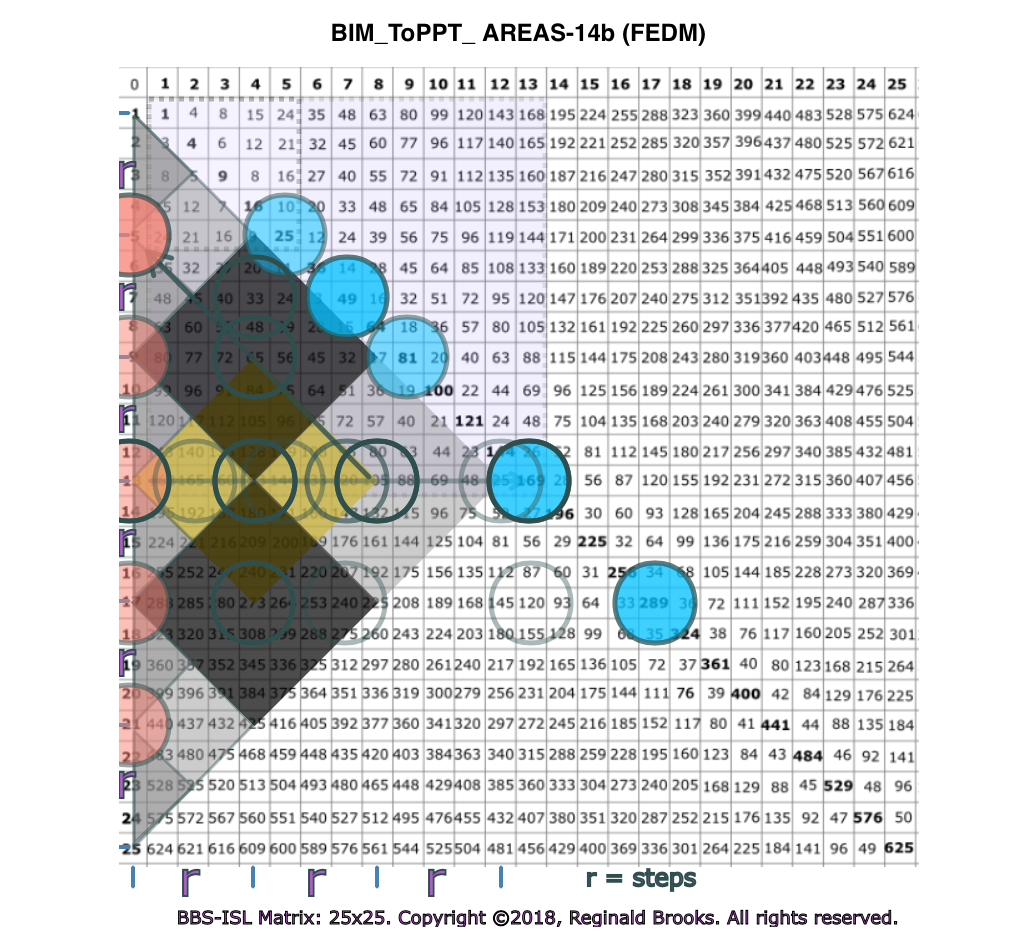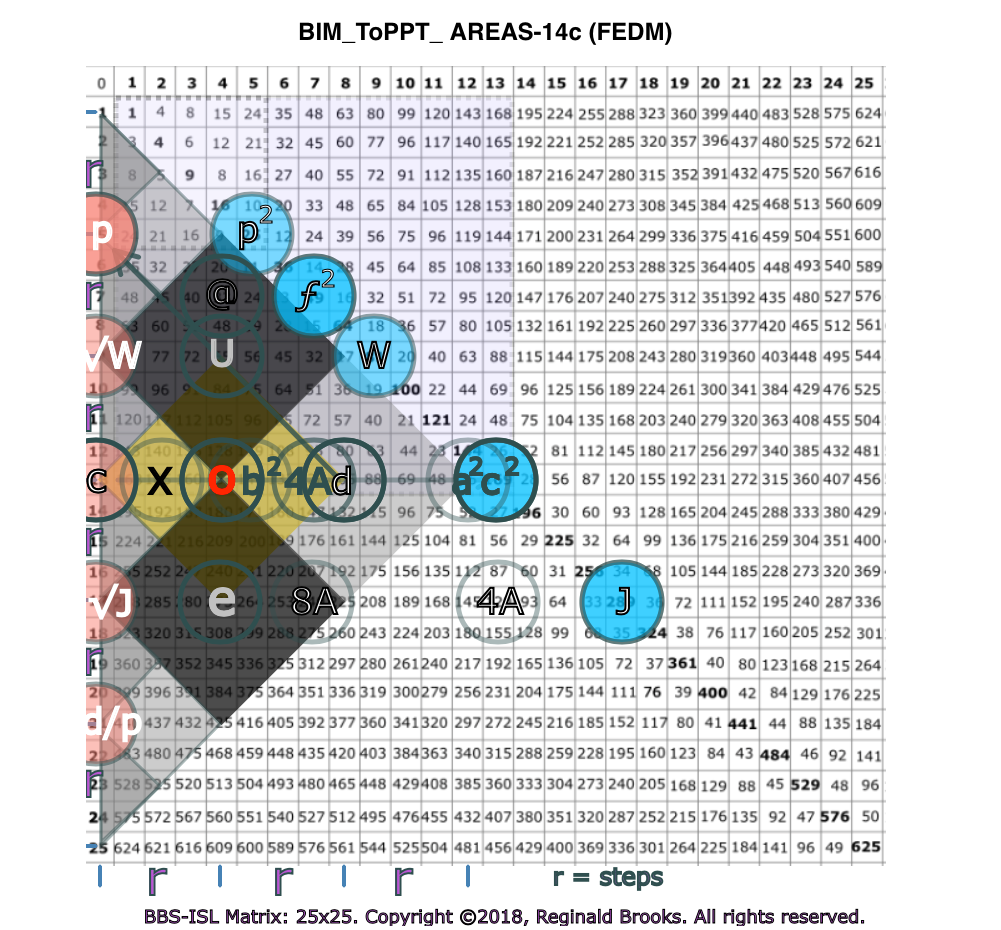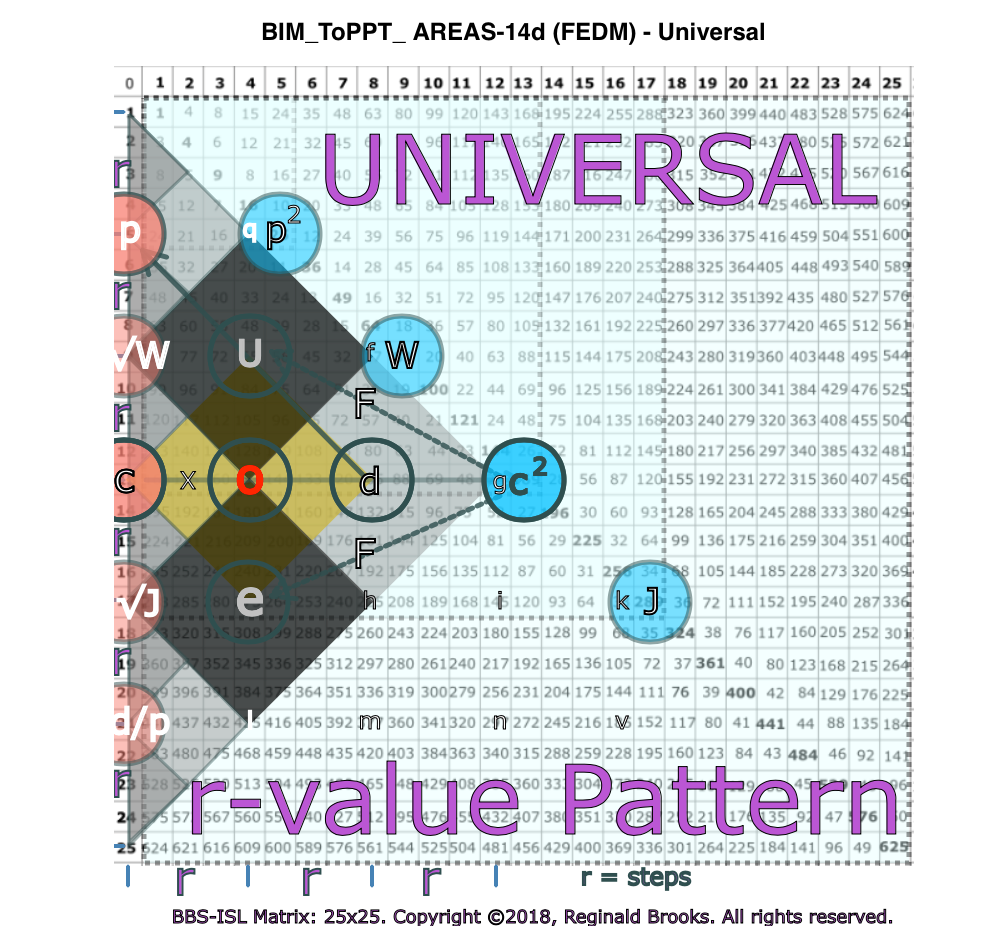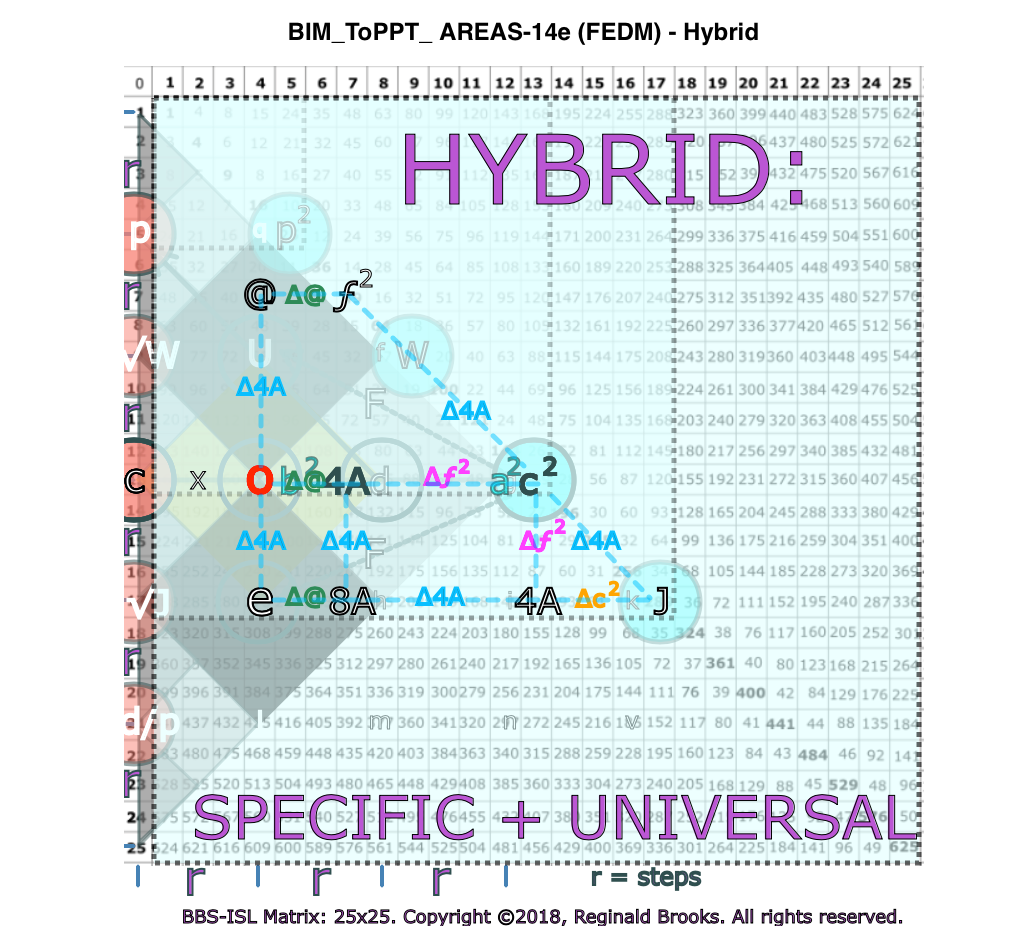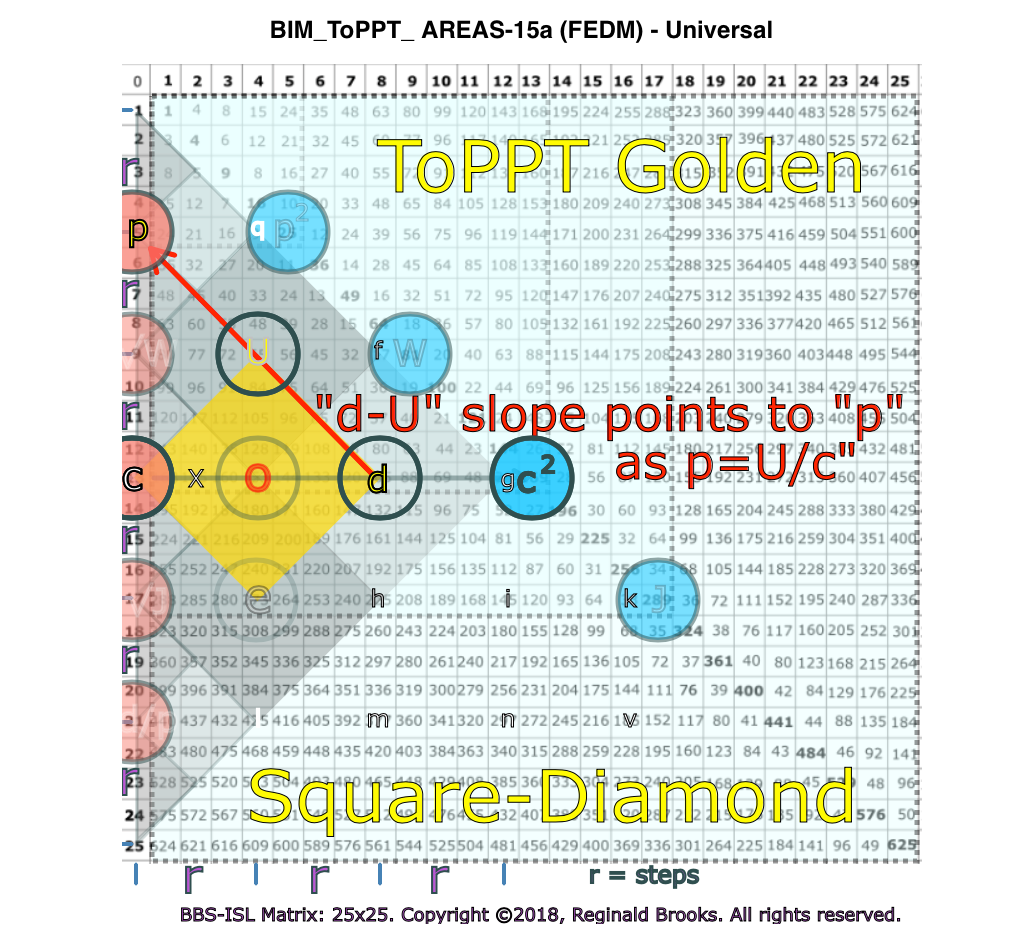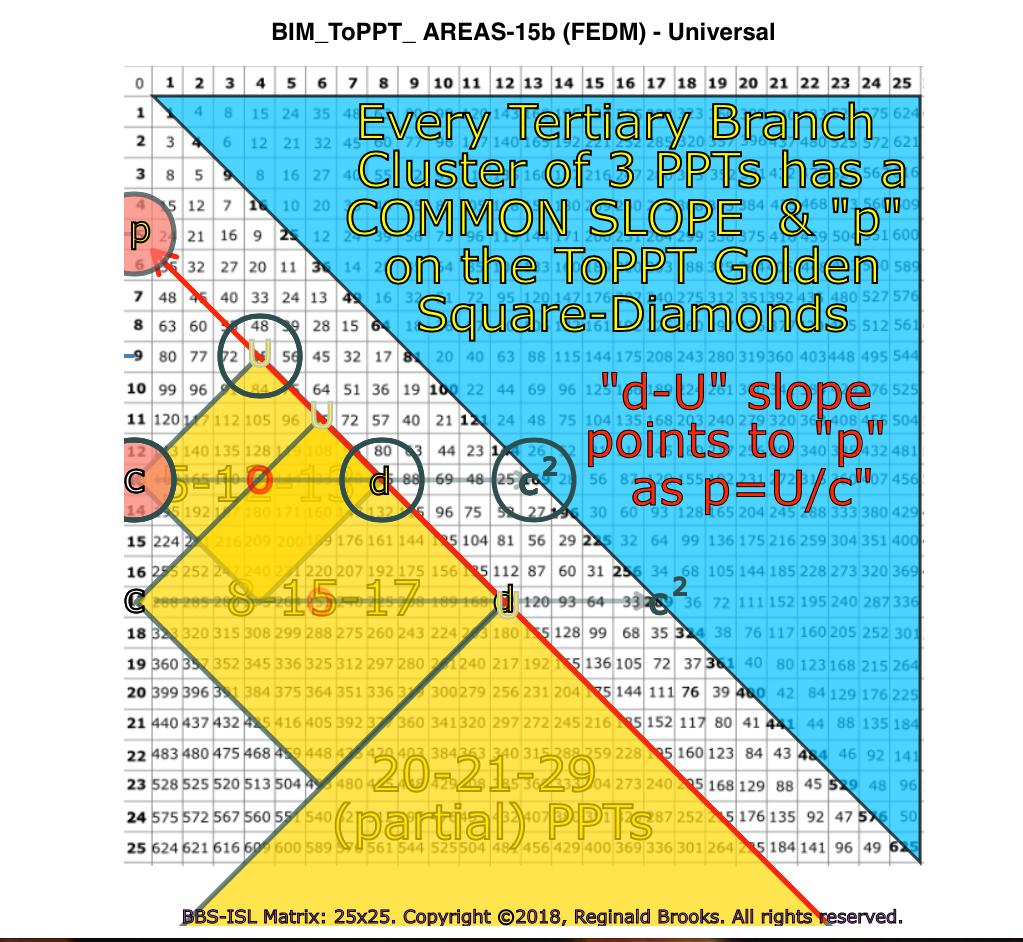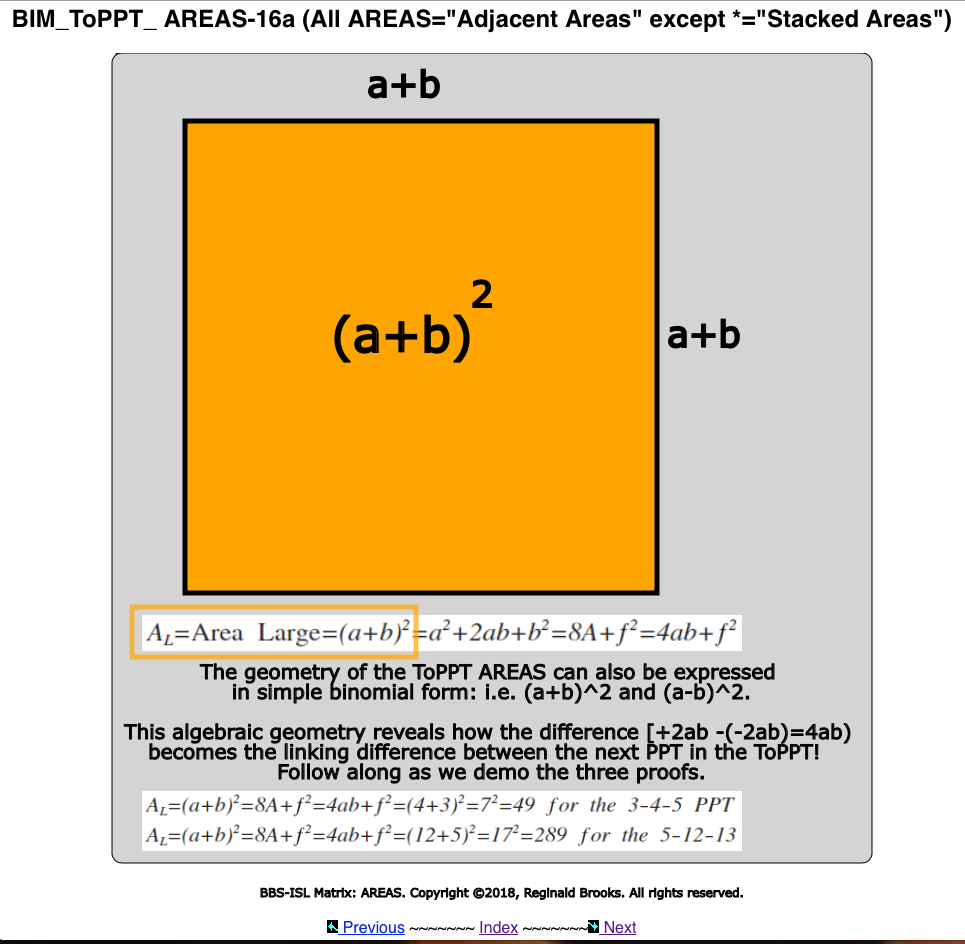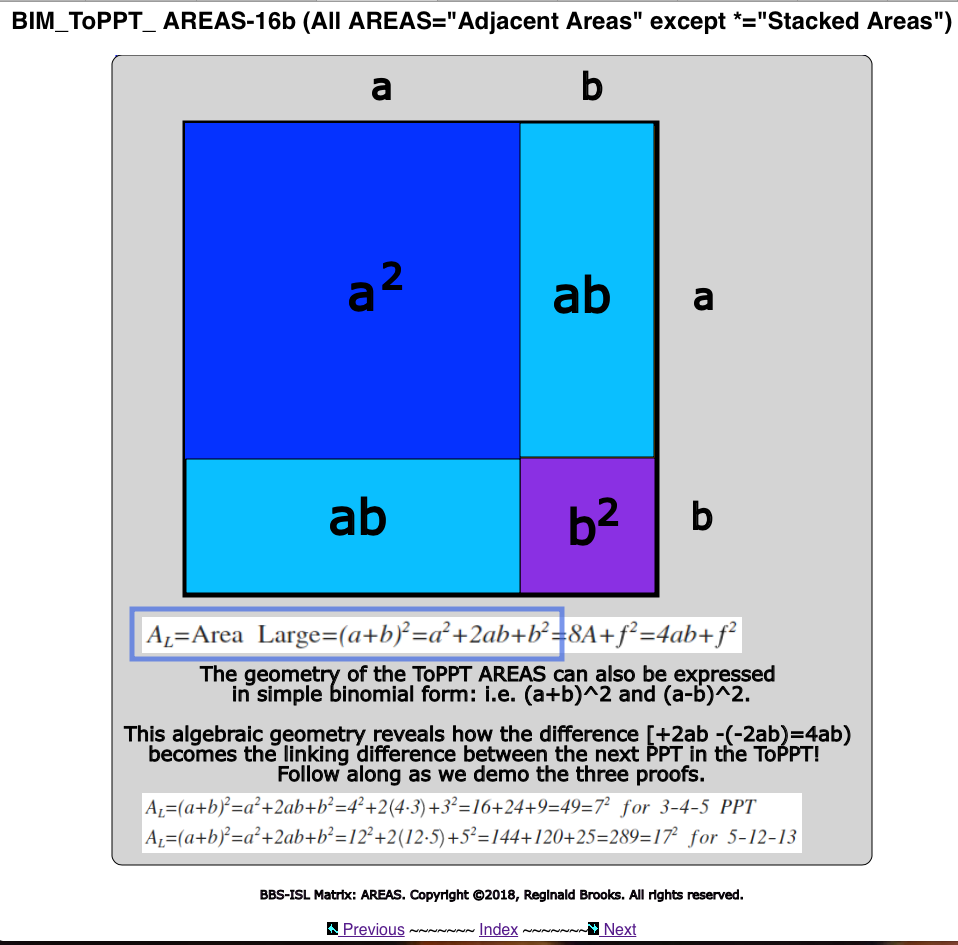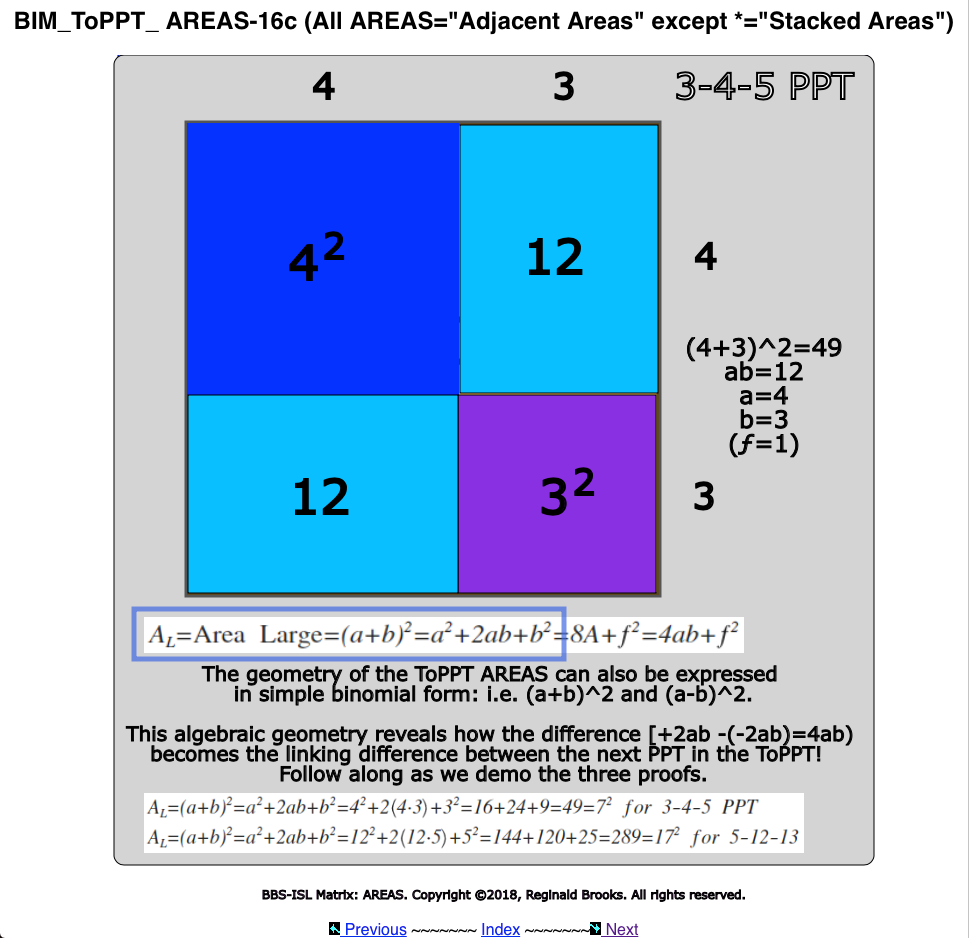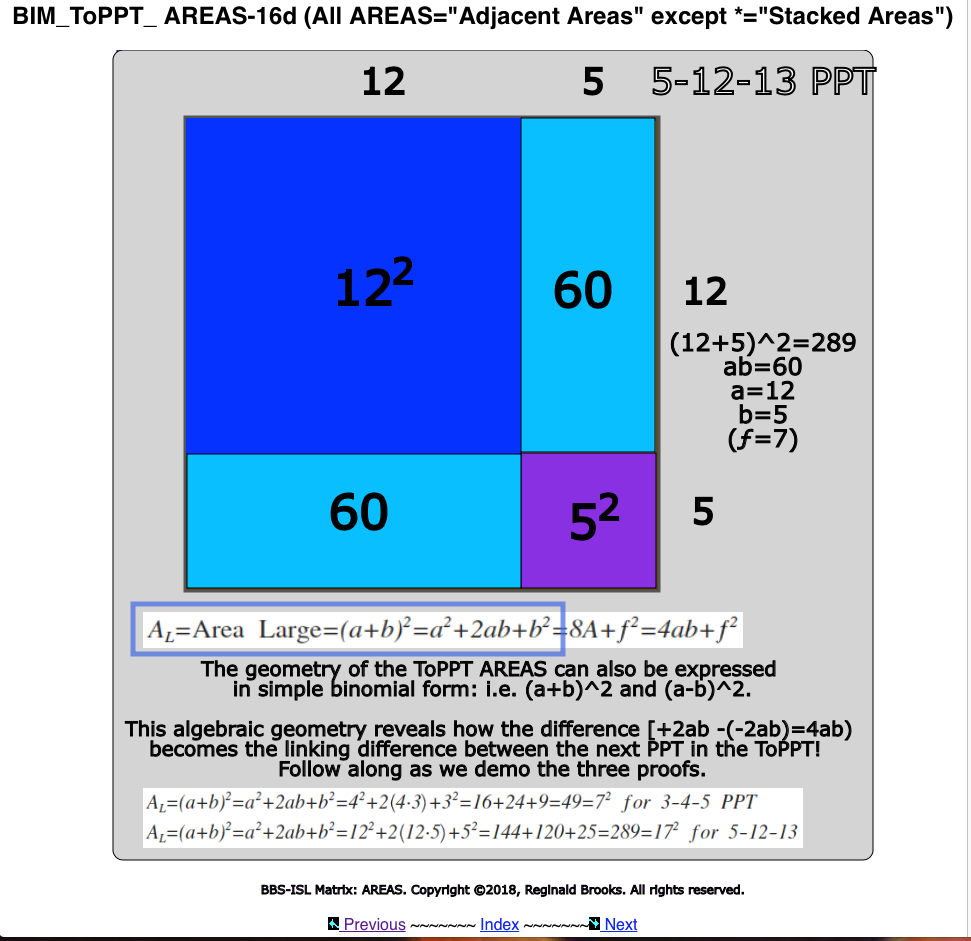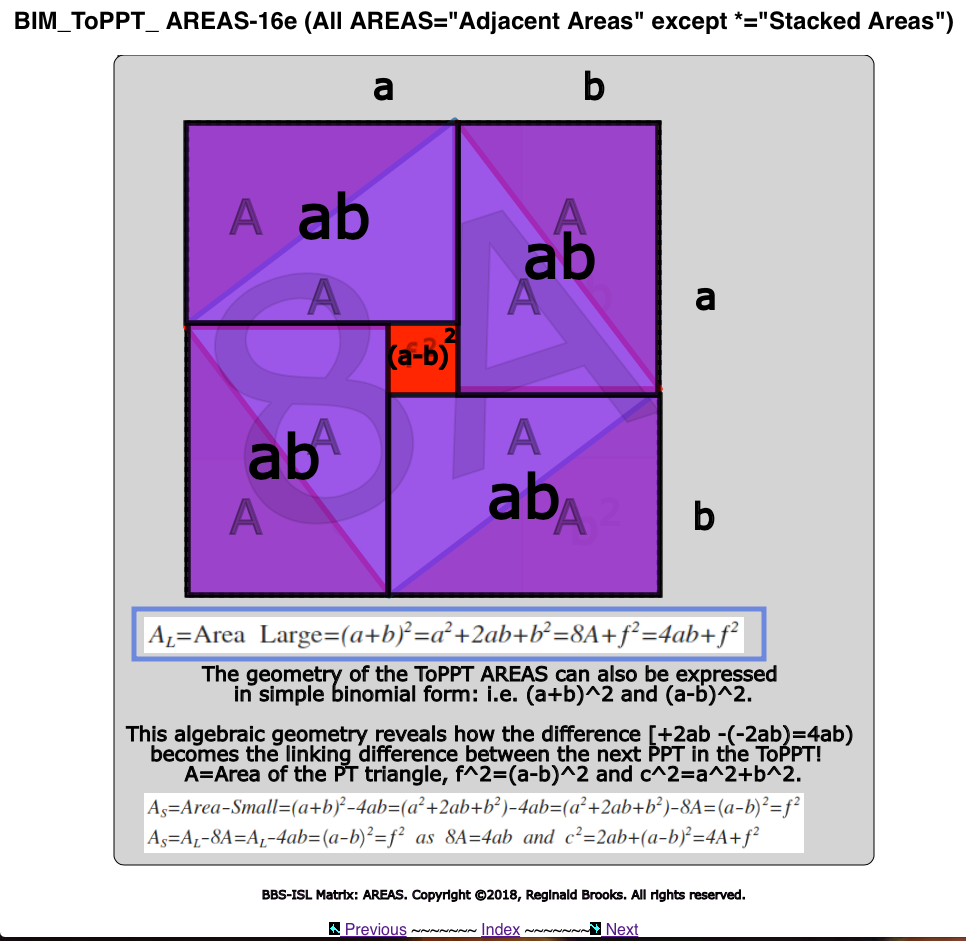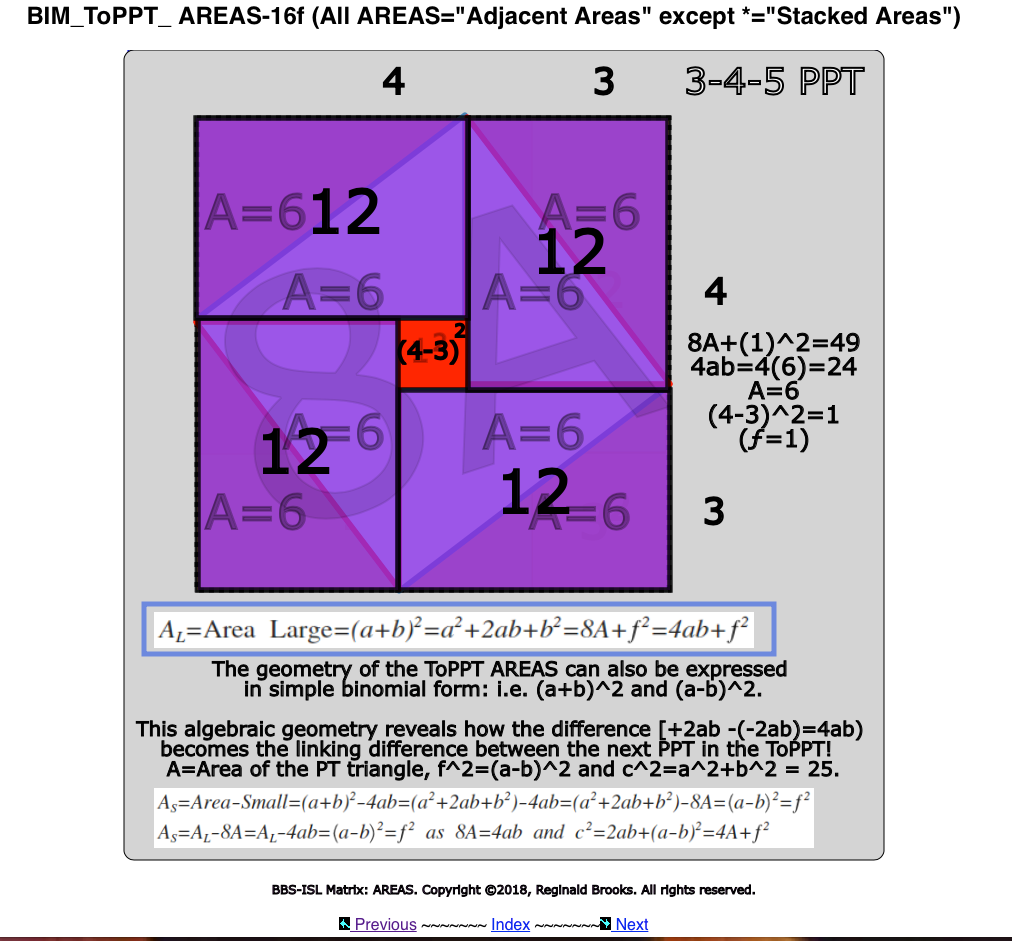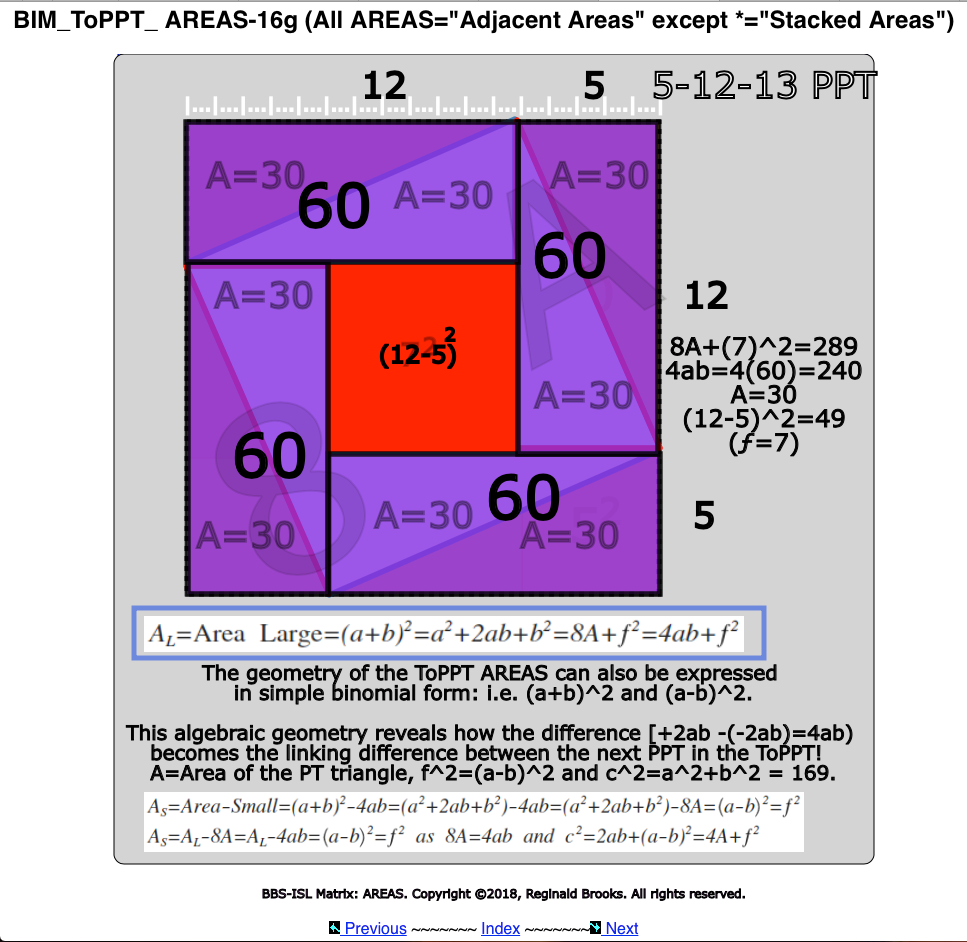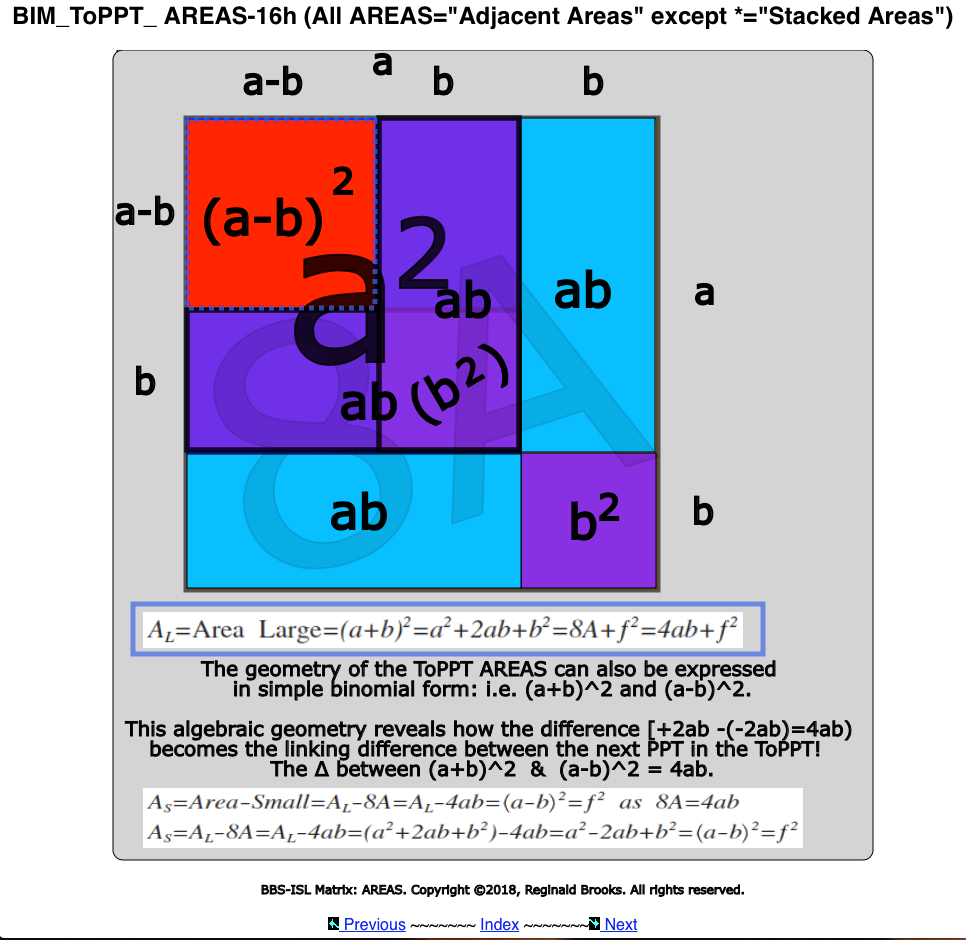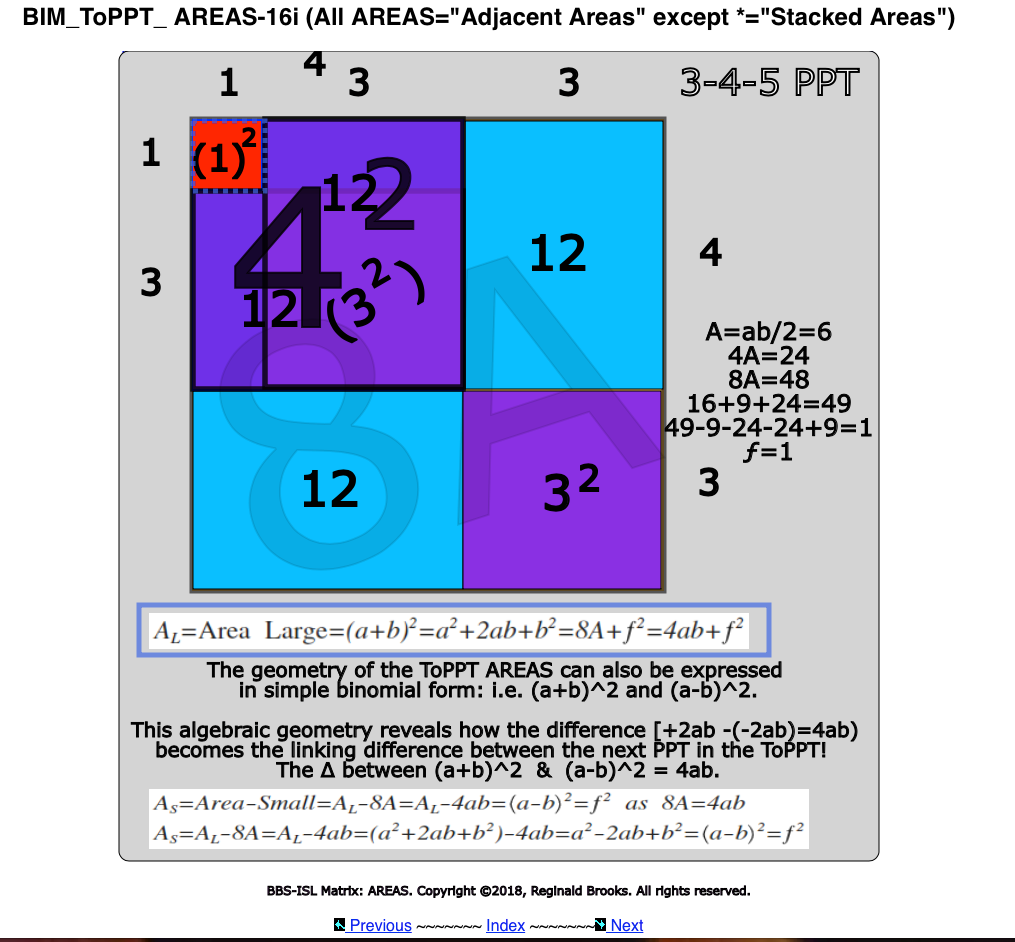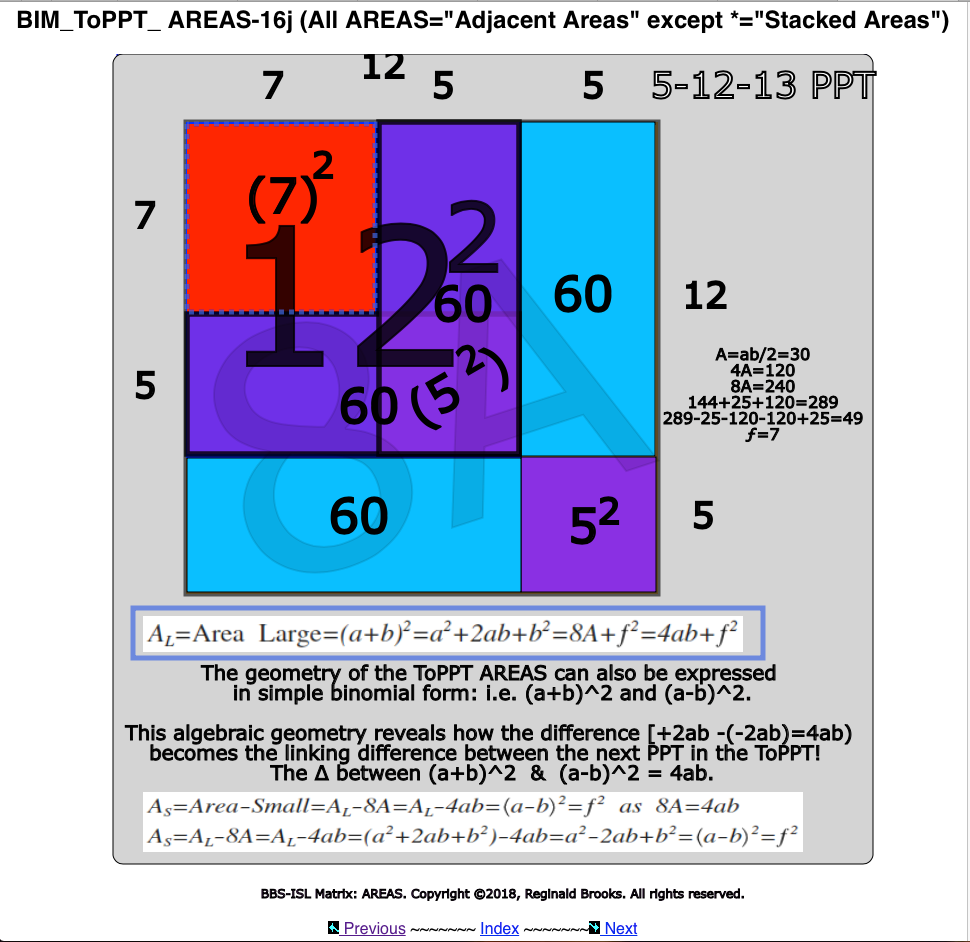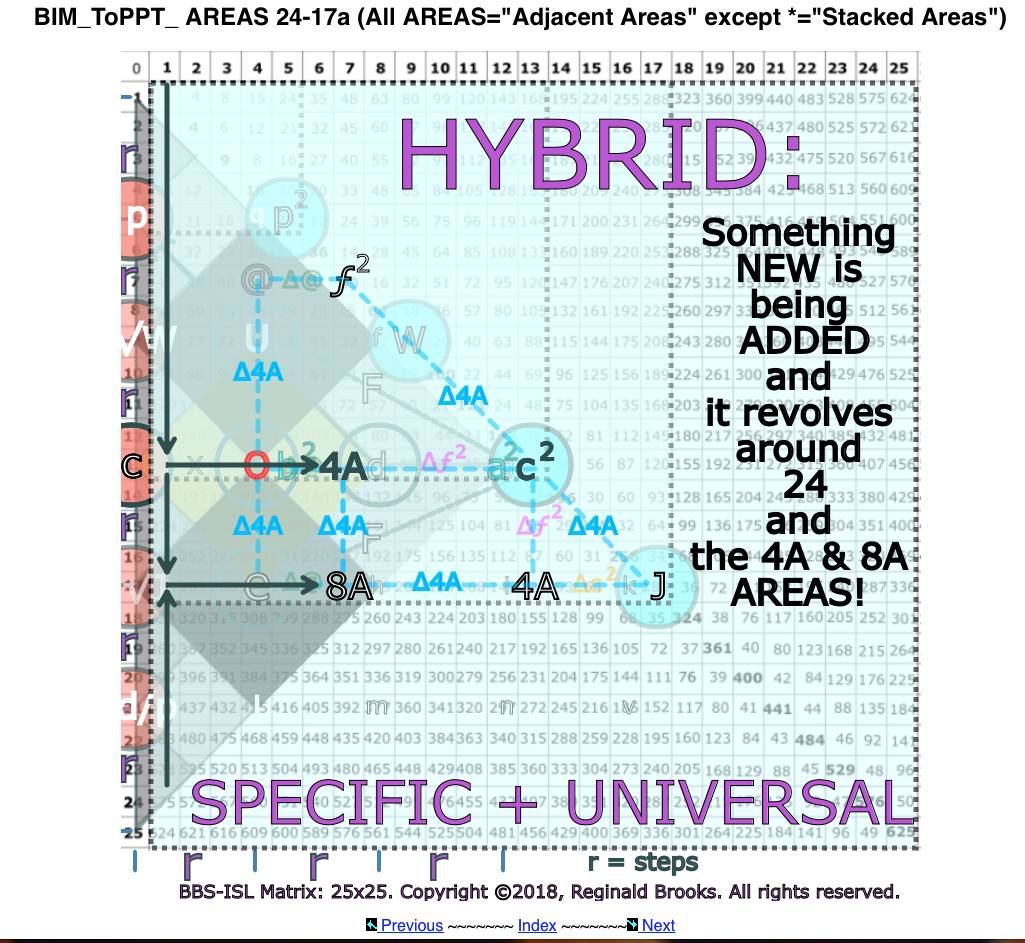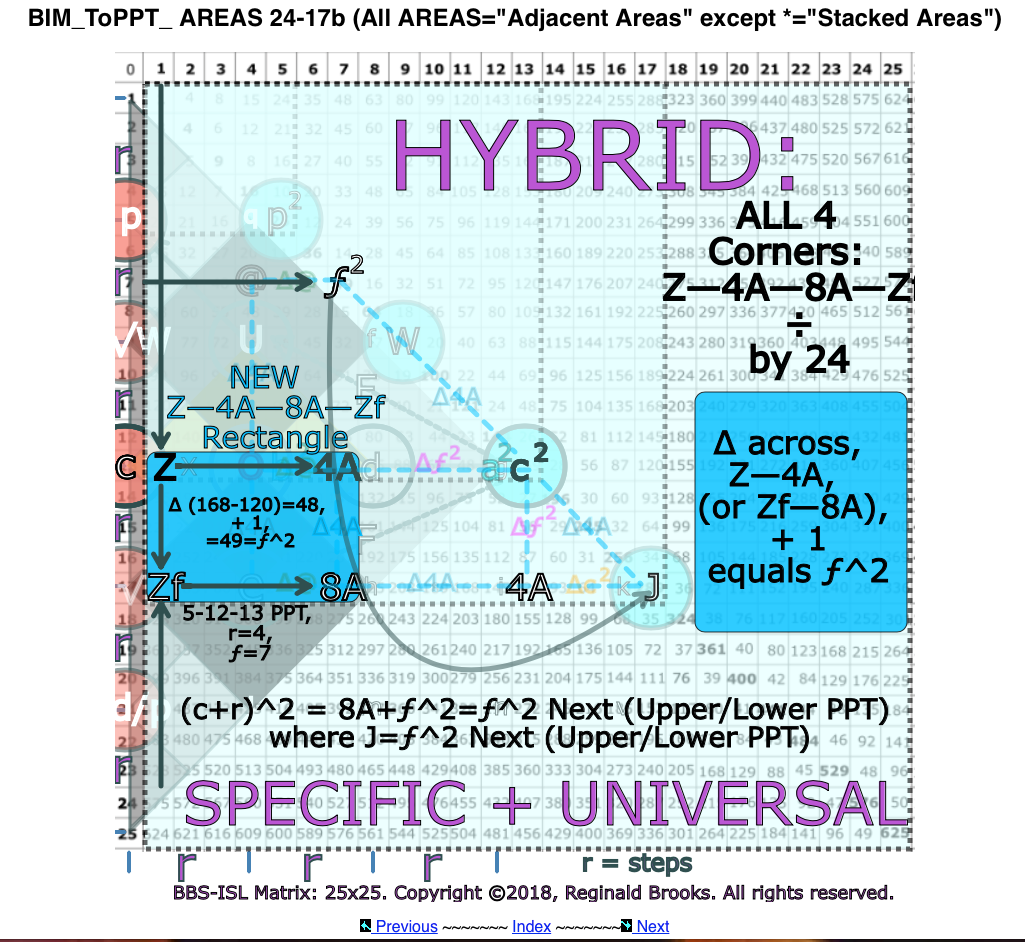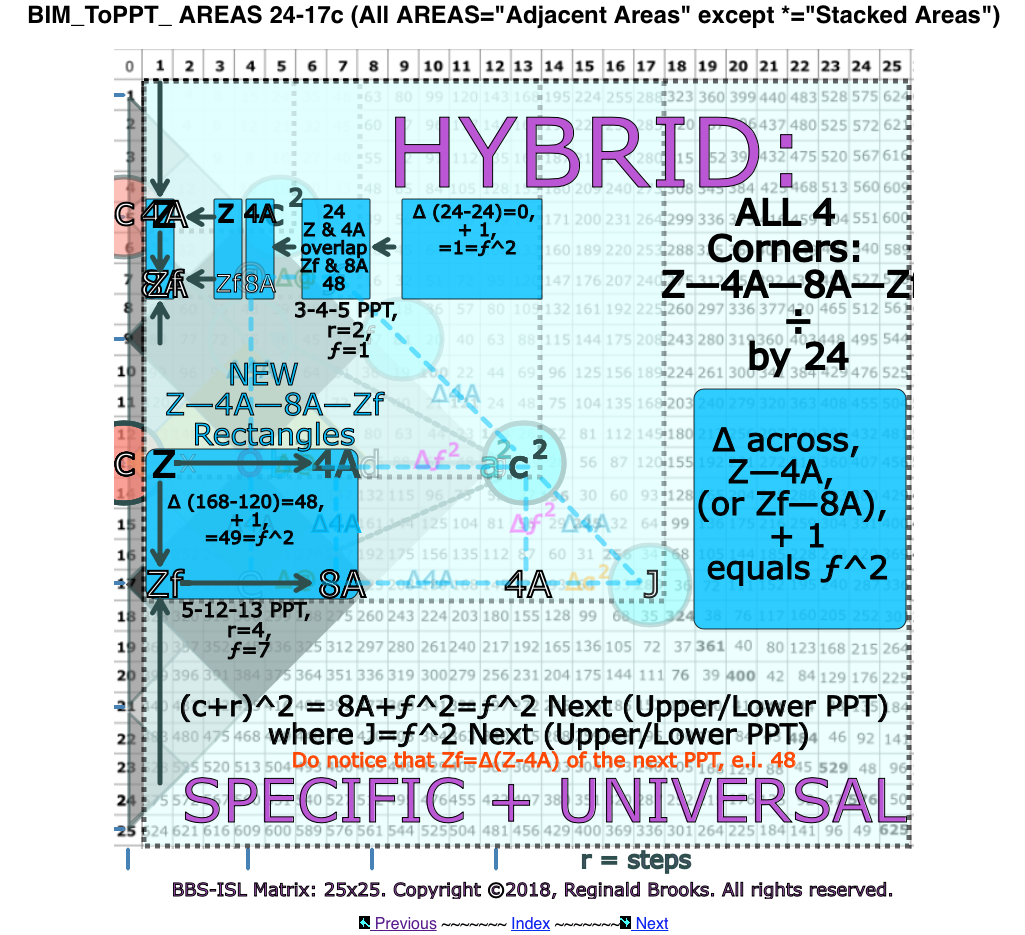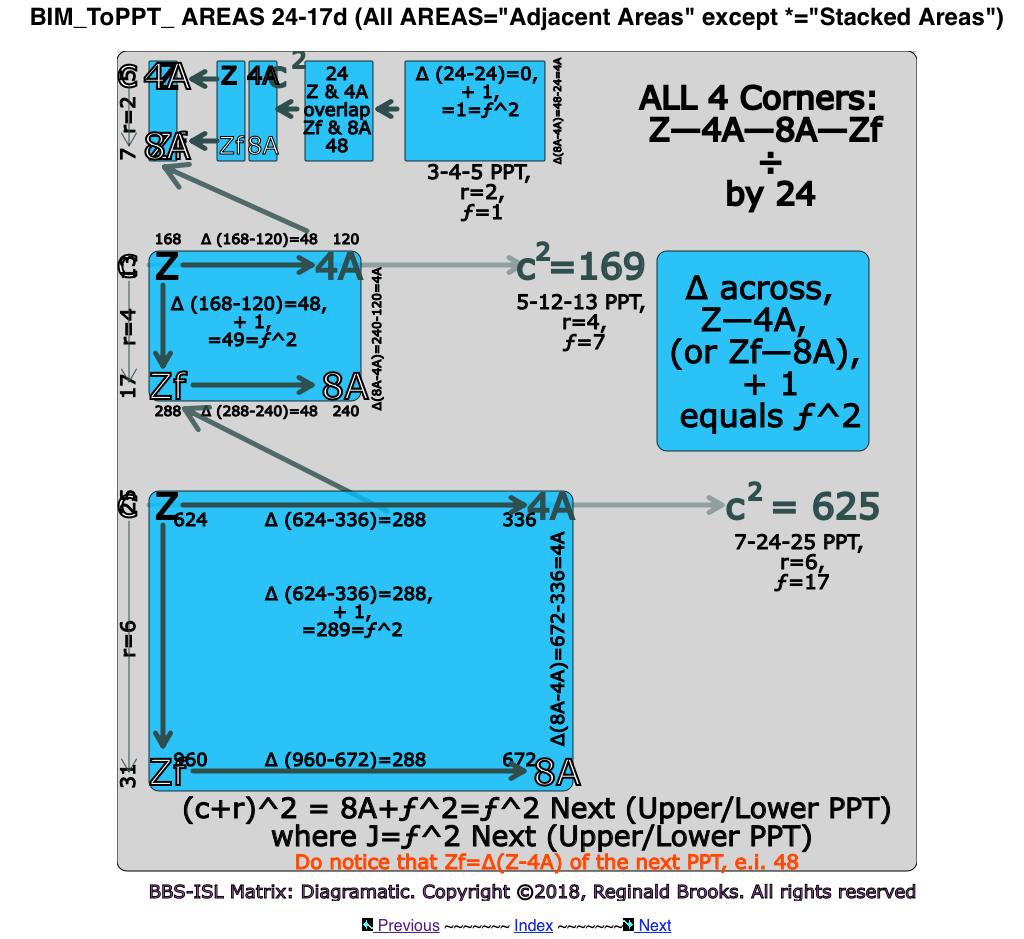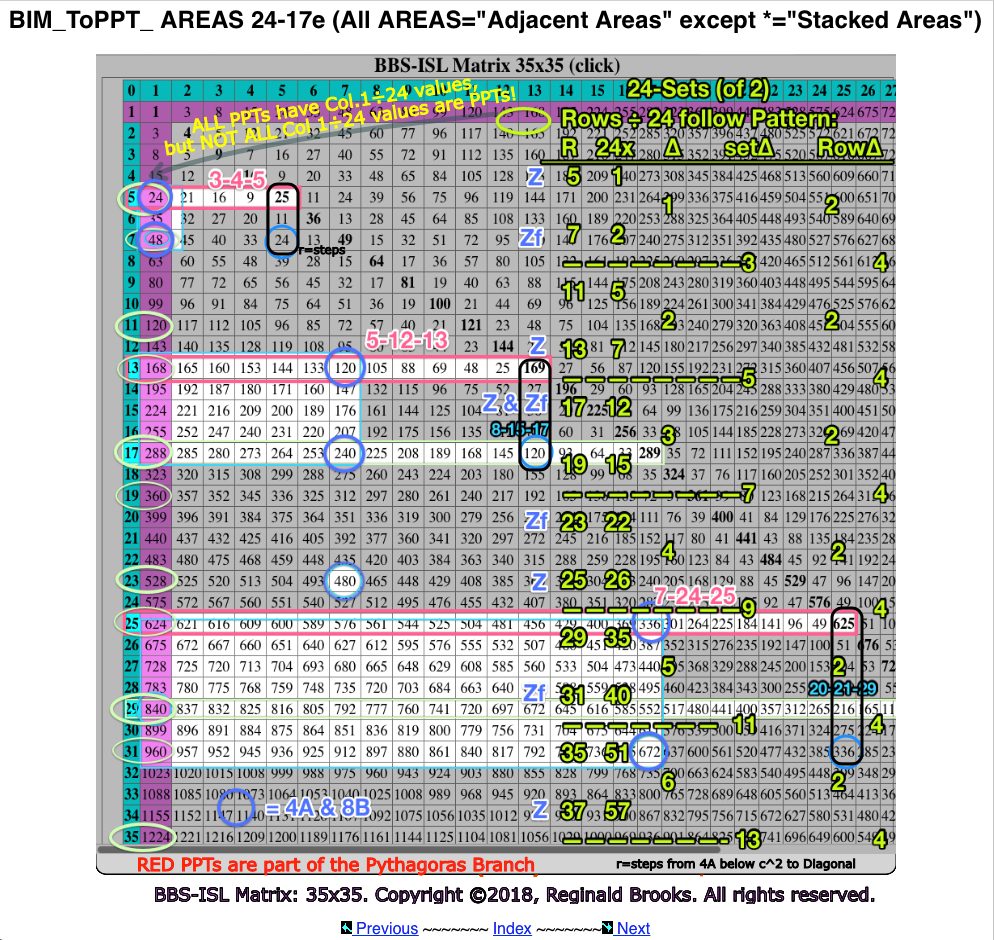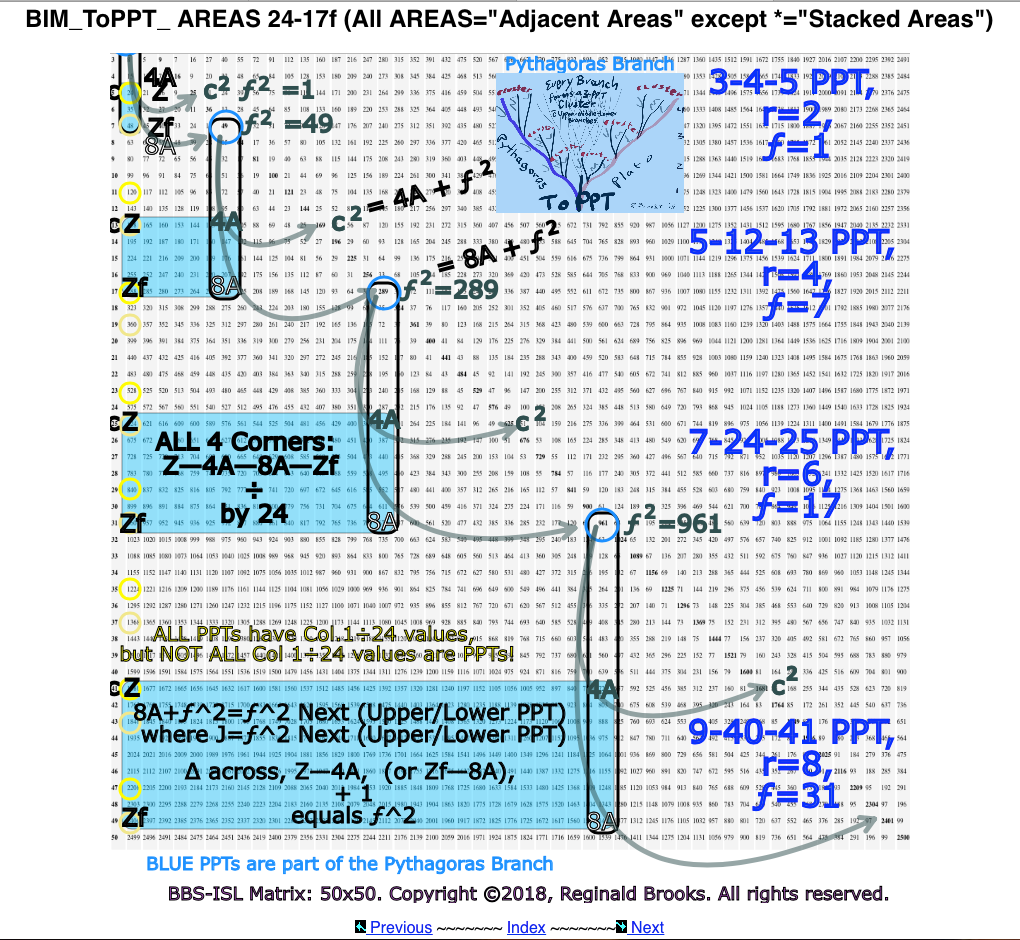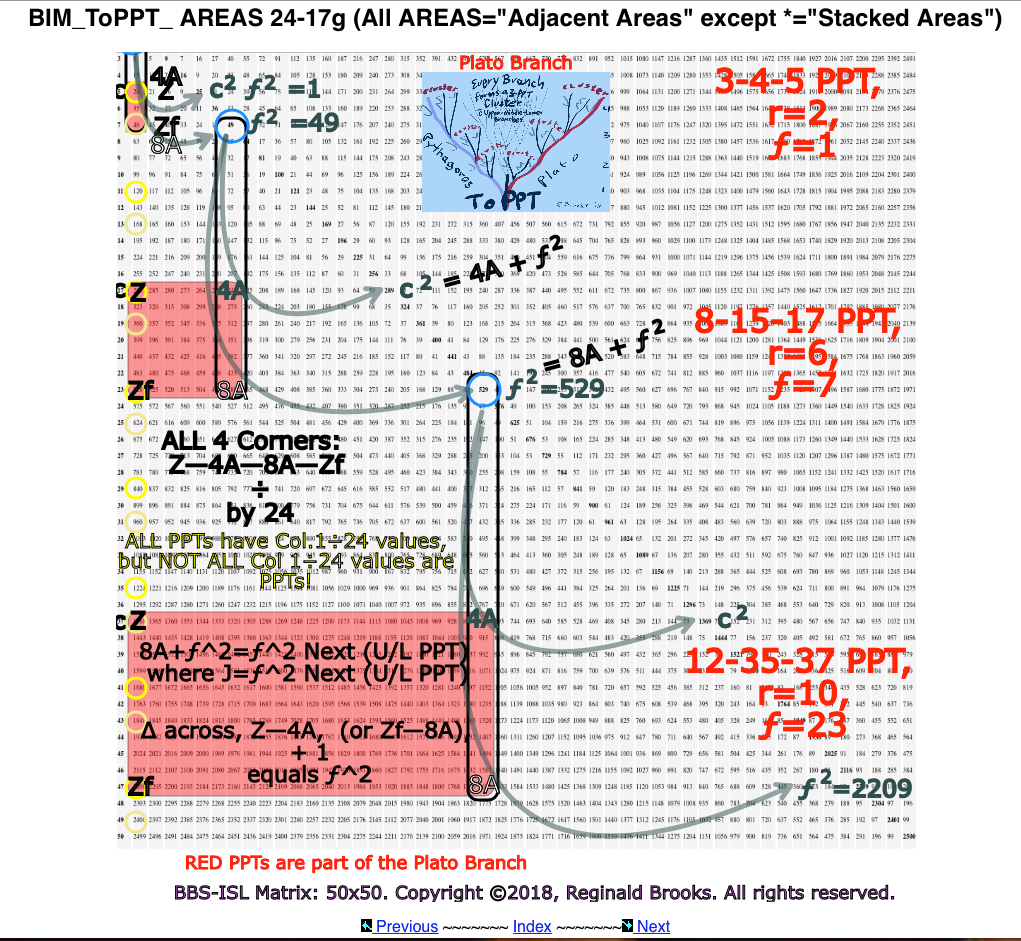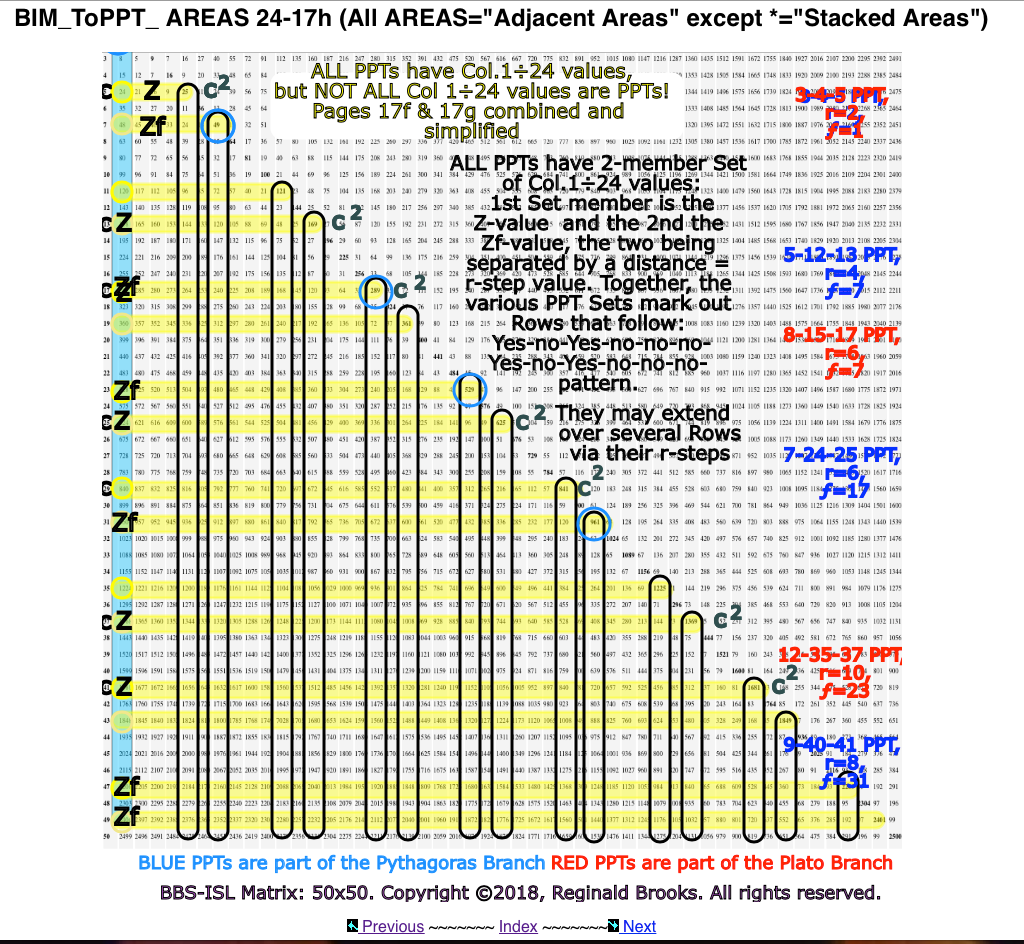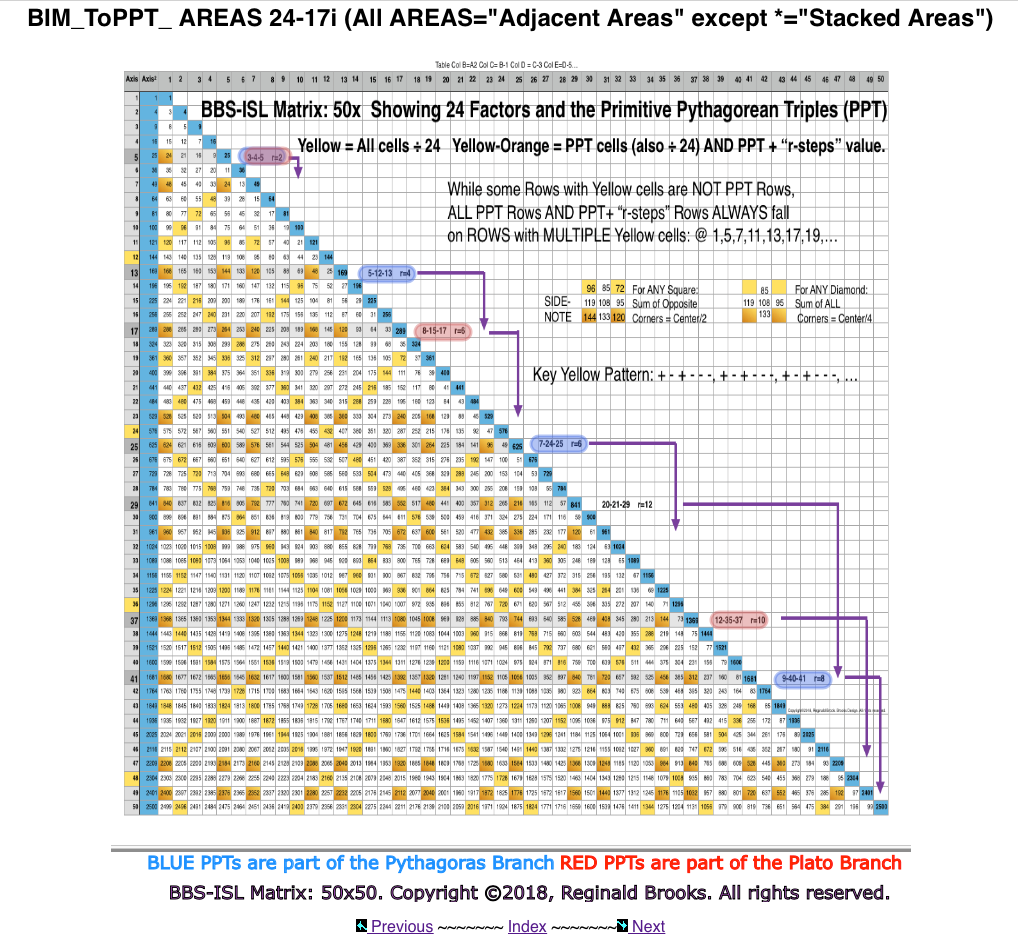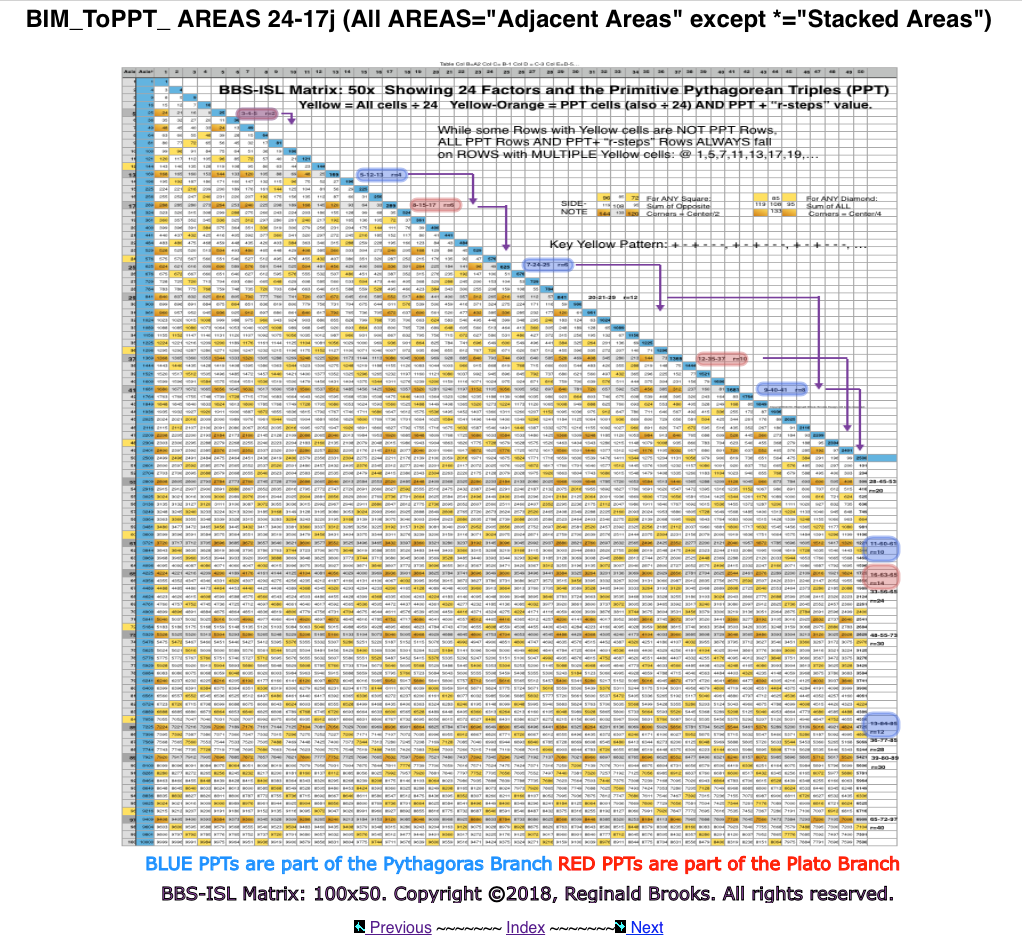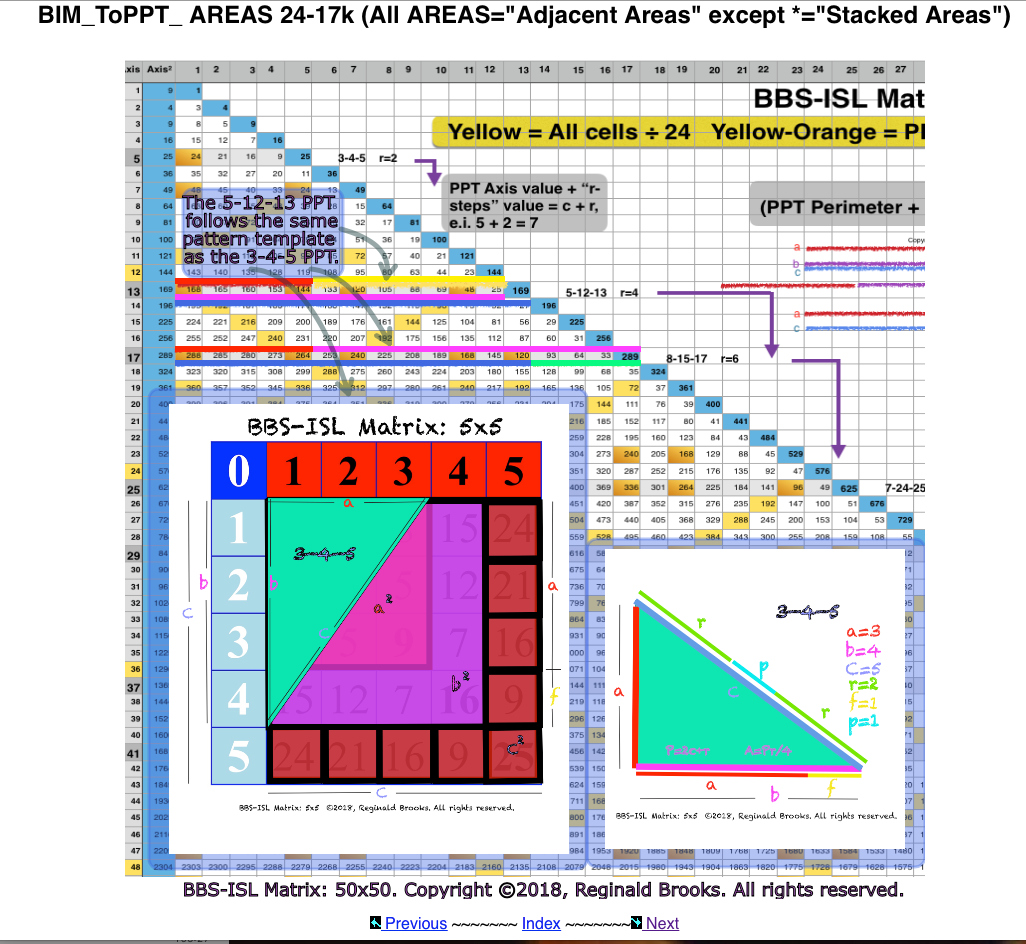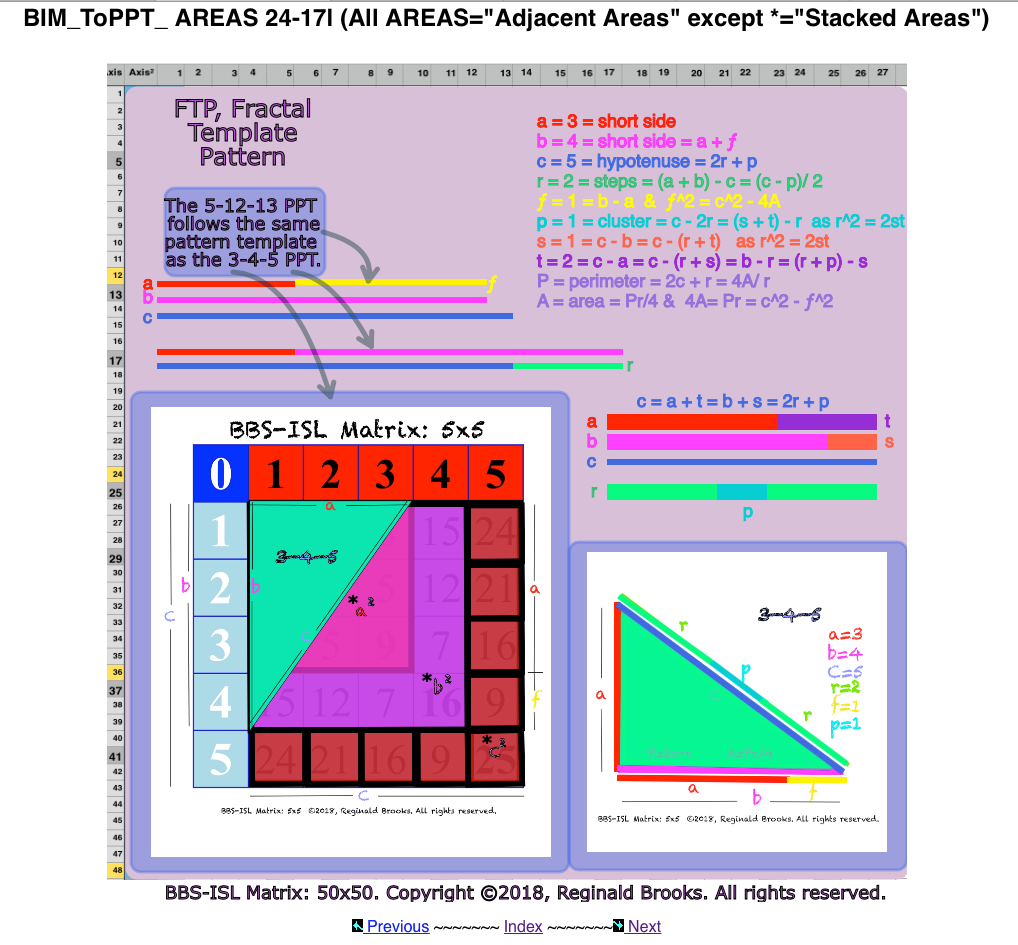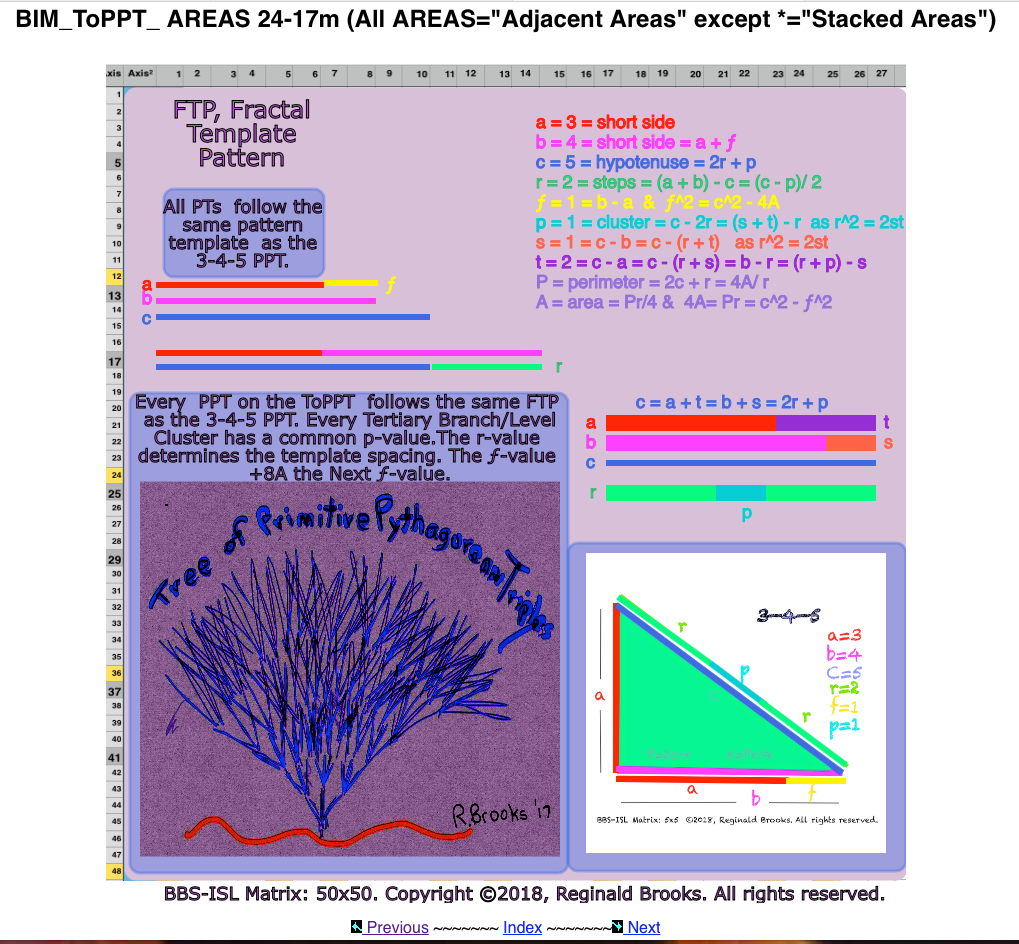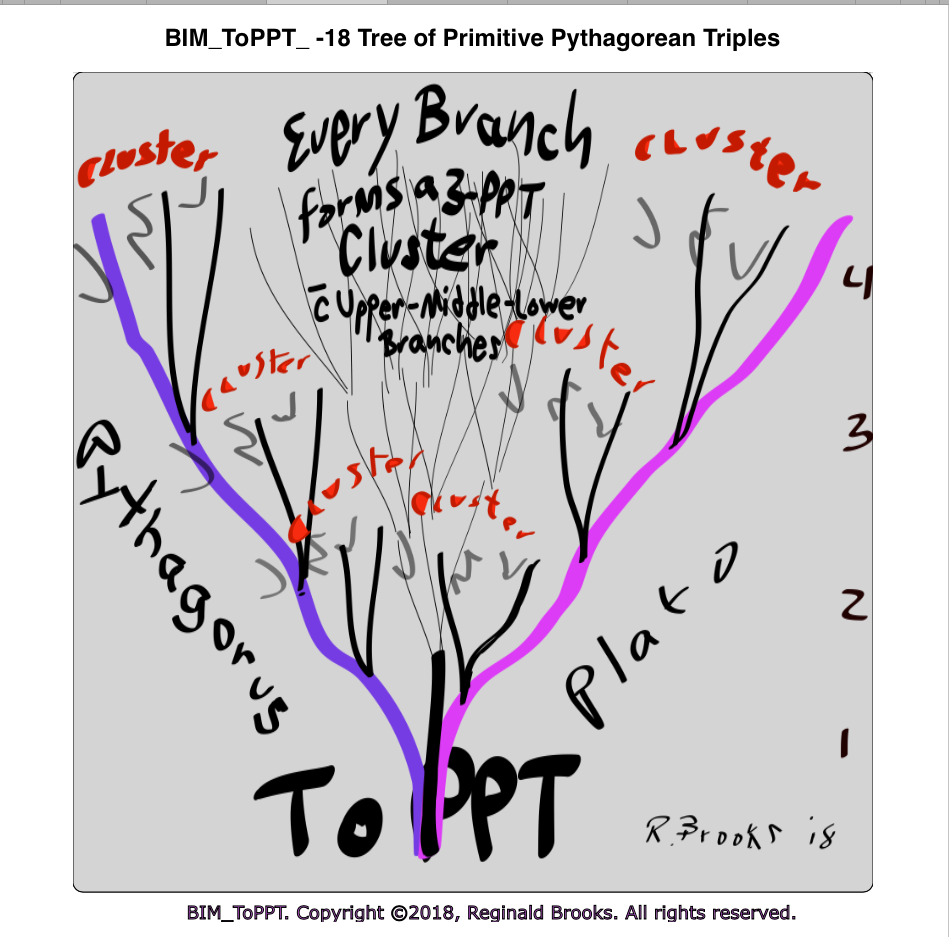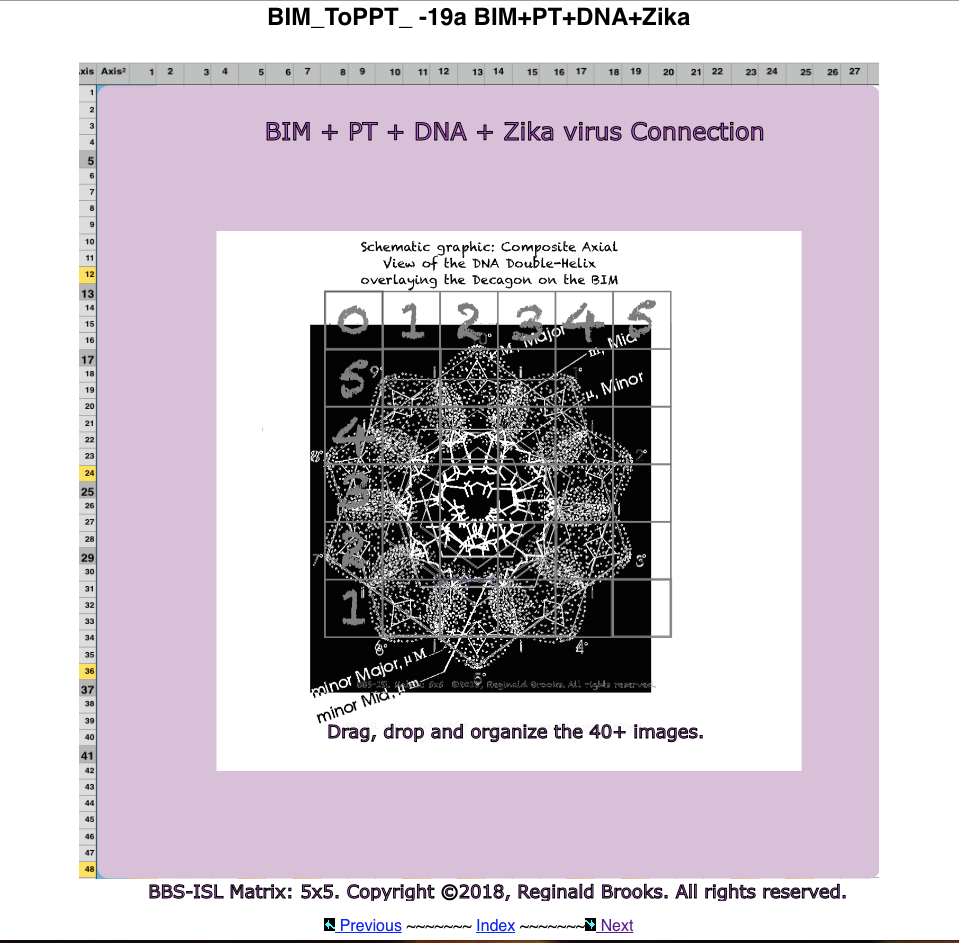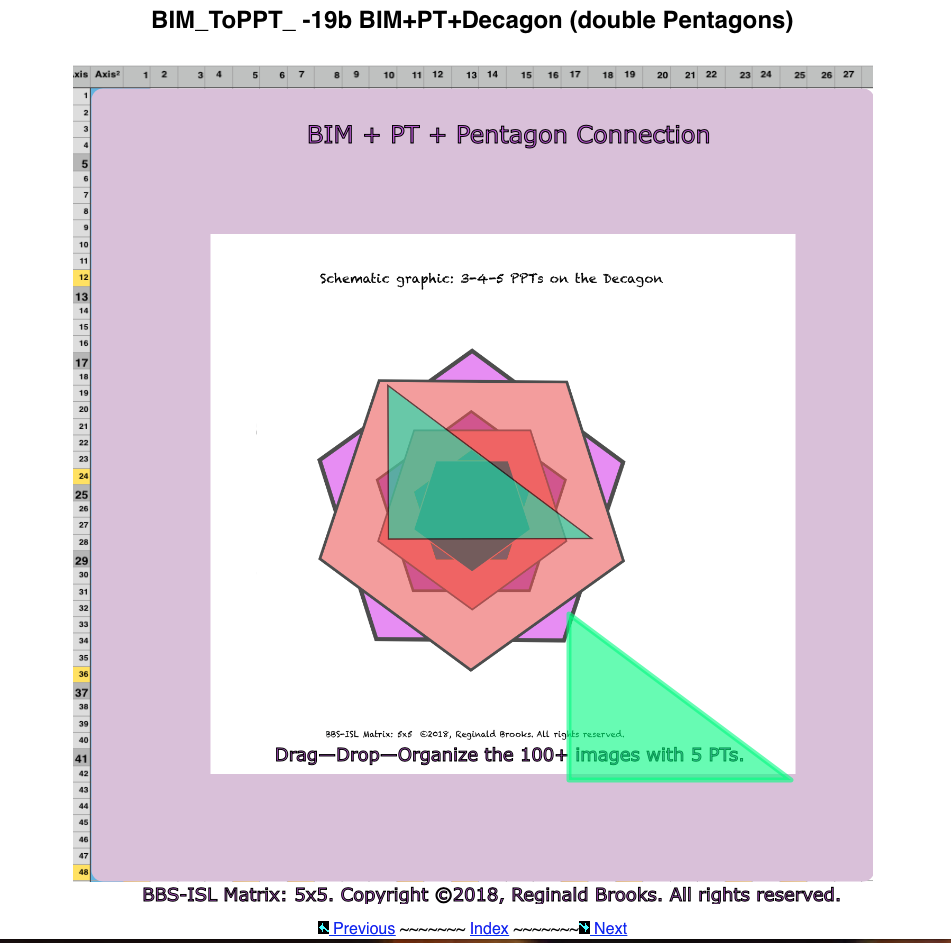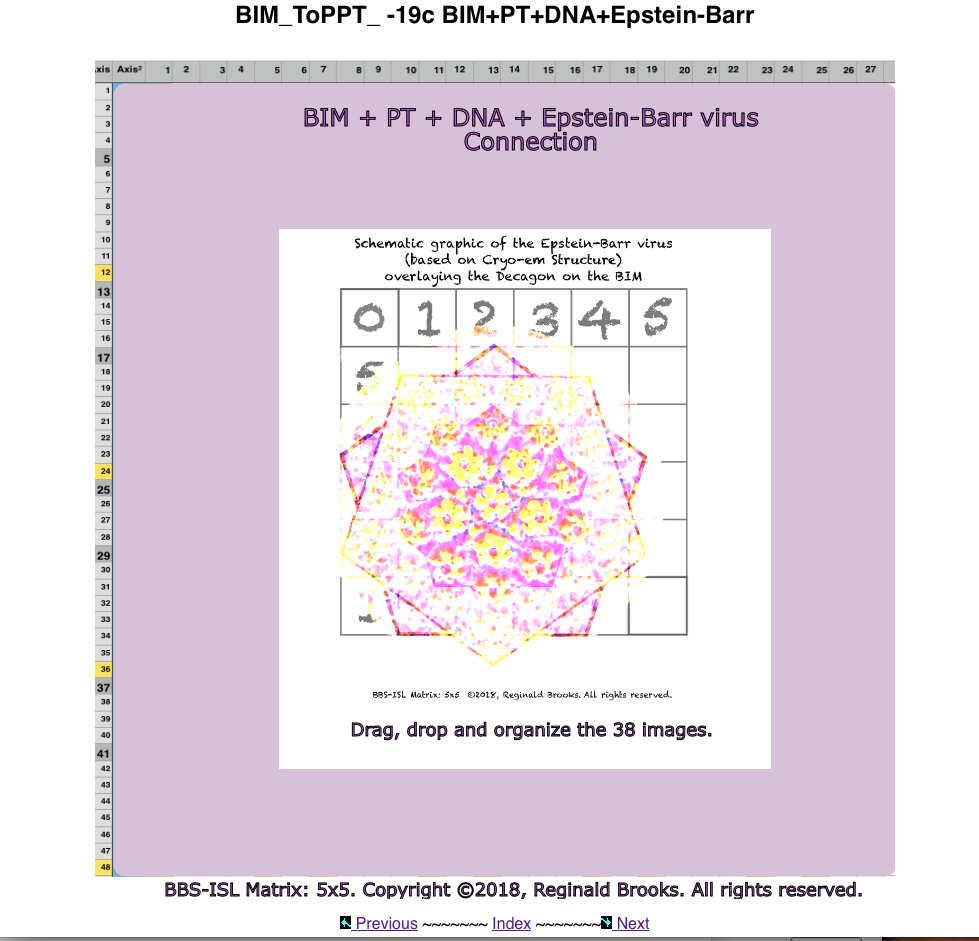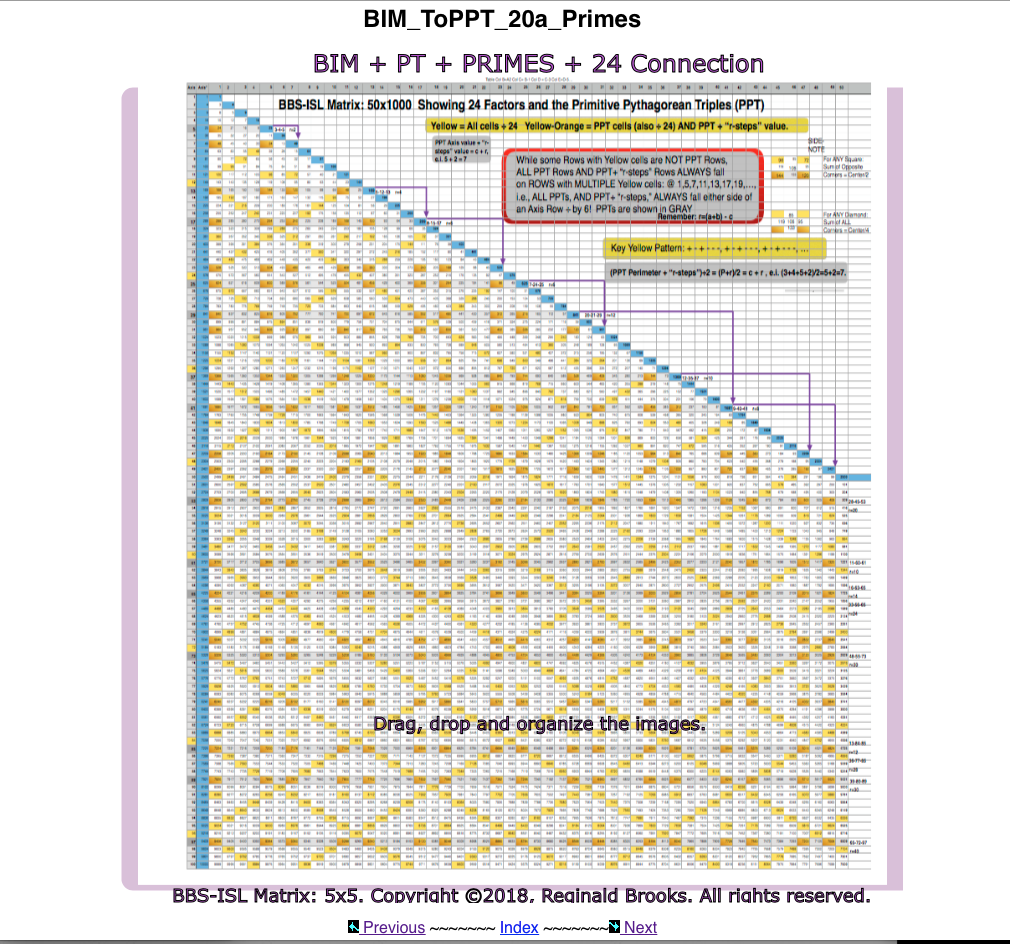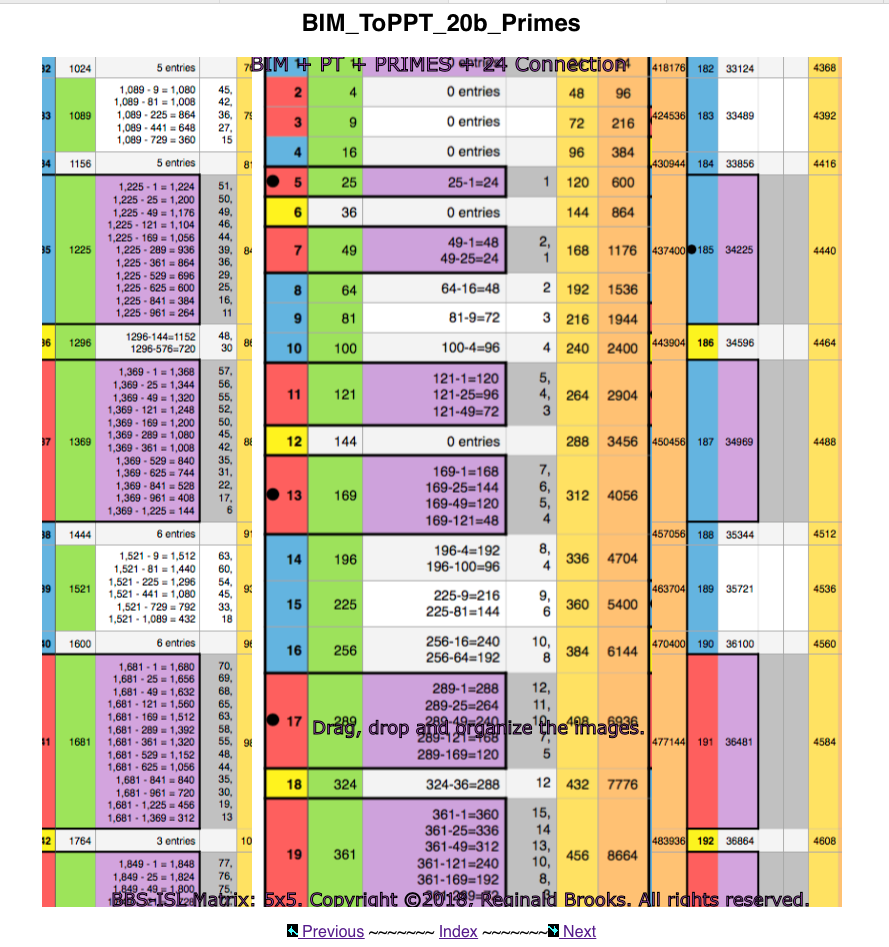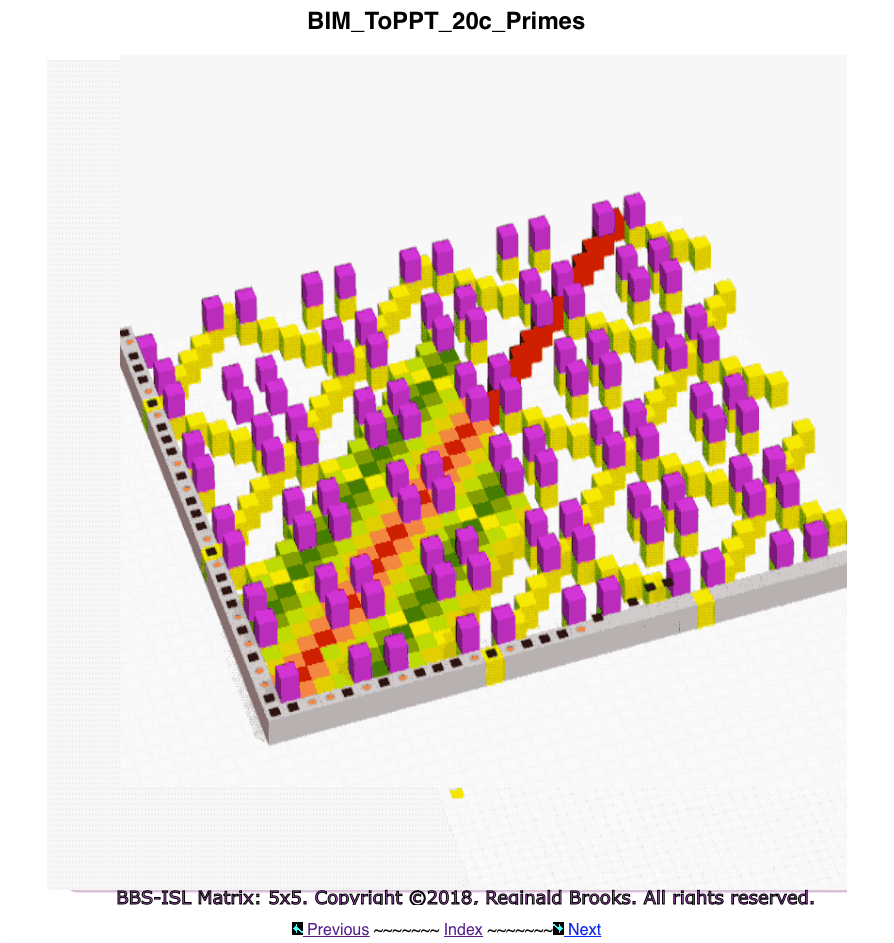BIM -ToPPT AREAS
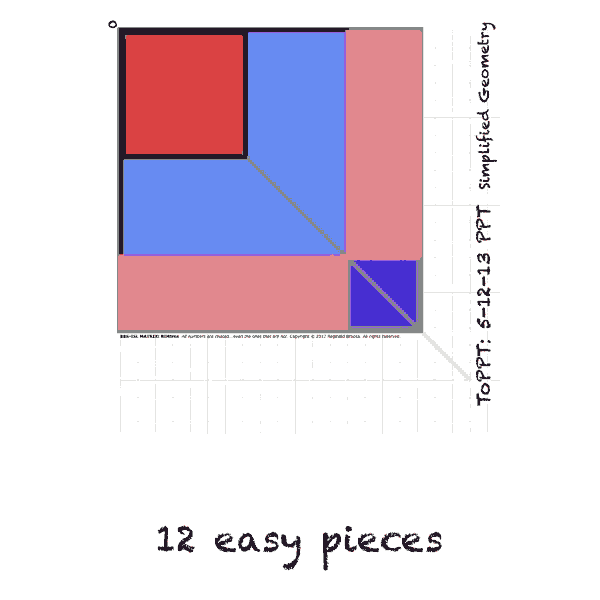
Click to Select: Drag to Deconstruct
BOTTOM
~~~ BIM -ToPPT AREAS~~~
Click to Select:
Drag to Deconstruct
BIM+PT (2018) Introduction
from Reginald Brooks on Vimeo.
Part of TPISC III: Clarity
and
TPISC IV: Details
Copyright 2018, Reginald Brooks,
Brooks Design. All rights reserved.
TOP
Along the way, several new and very exciting findings have popped up! It's just like the BIM to just keep on giving!
The simple — and some of the not so simple — geometries of the BIM and BIMtree have been laid out in a series of interactive canvases. Each canvas opens up on its own webpage. Once open, you just click/touch and drag the geometry around, apart, this way and that way, even rebuilding the initial geometry side by side until you can really see how the parts are so simply related. It's deconstruction!
The entire geometry on canvas series was produced initially without any supporting text to keep it as clean, simple and intuitive as possible. The accompanying text will certainly help fill in the gaps, but it should be noted that the geometry on canvas series sequentially builds from one canvas to another.
The algebraic binomials and their square proofs are widely known. Here the very same proofs overlap with that of the BIM, BIMtree and the ToPPTs! This, too, can be readily seen.
The number 24 — and its factors of 1-24, 2-12, 3-8, and 4-6 have shown, once again, to be integral to both the BIM in general (remember, the EVEN Inner Grid cell numbers are all evenly divisible by 4), and, the ToPPTs. HOW SO? Well, this is new, really new, so just the surface has been touched, but so far:
- Marking (yellow) all BIM cells evenly ÷ by 24 generates a striking diamond-grid, criss-crossing pattern with 4 additional yellow marked cells in the center of each diamond; (TPISC IV: Details)
- Every PPT is found to exist on — and ONLY on — those Rows whose 1st Column grid cell are ÷ by 24 (yellow, with 1st Column grid cell marked as 'Z'), though not every such yellow marked Row contains a PPT. nPPT are only present on such Rows if accompanied by a PPT; (TPISC IV: Details)
- The "step-sister" of any given PT Row is found r-steps down the Axis from that Row (with 1st Column grid cell marked as 'Zf') and it, too, always and only exists on a yellow marked Row ("r" is part of the FTP originally derived from the Dickson Method for algebraically calculating all PTs); (TPISC IV: Details)
- The PPT Row (and nPPT Row) always contains the 4A (A=area) value of that PT and the "step-sister" PPT Row always contains the 8A value, both landing exclusively on yellow marked grid cells, giving a striking visualization of ALL PPTs and their r-based "step-sisters;" (TPISC III: Clarity & TPISC IV: Details)
- The significance of the "step-sister" is that it becomes the mathematical link to the "NEXT" PPT within the ToPPT — like the Russian-Doll model; (TPISC III: Clarity)
- The significance of the expanding and increasingly inter-connected PTs, as the BIM itself expands, is one in which the perfect-symmetry geometry of regular shapes and solids — equal triangles, squares, circles,... of the BIM allows — at certain articulation nodes (i.e., Rows) — the introduction of the slightly less-perfect-symmetry geometry (i.e., bilateral symmetry) of the full rectangle and oval that the non-isosceles right triangle PTs represent, into the unfolding structural framework, working from the ground up, if you will. The roots of fractals-based self organization are first to grow here! (TPISC III: Clarity & TPISC IV: Details) more...
- ALL self organization of any sort — be it force field or particulate matter — must have an organizing mathematical layer below driving it!
Besides intimately tying the ToPPTs to a natural fractal pattern within the BIM:
- Thereafter, ALL PTs — primitive "parents" (PPT) and non-primitive "children" (nPPT) — are found on select Rows of the BIM by simply following the squared numbers on the the Prime Diagonal down to intersecting Rows; ( TPISC I: Basics & TPISC II: Advanced) more...
- The mathematical basis relating the PPTs was found, as was the consistent Fractal-Template Profile (FTP) that every PT follow; (TPISC II: Advanced & TPISC III: Clarity) more...
- The FTP allowed all the PPTs to be sorted out and organized into a definitive Tree of Primitive Pythagorean Triples (ToPPT) that co-extends infinitely throughout the infinitely expanding BIM — >BIMtree or BIM-ToPPT; (TPISC III: Clarity) more... and more...
One could simply say that: subtract one from the squared values of any natural, whole integer number (WIN) and if it is evenly ÷ by 24, it is a candidate for being a PPT or 'step-sister' if that same squared value - 25 is ALSO ÷ by 24.
If the Row contains a Factor Pair Set (two squared values that = a2 and b2) and the 4A value ONLY, it is a PPT Row.
If it contains BOTH the 4A and 8A values, it is a 'step-sister' Row, i.e. (c2-1)/24 and (c2-25)/24, if evenly divisible, are PPT and/or PPT 'step-sister' Rows, e.i. Row 17 is the PPT Row of the 8-15-17 PPT, but is also the 'step-sister' Row of the 5-12-13 PPT.
(NOTE: The PPTs intersect with grid cells/24 at: the subtraction of 1,5,7,11,13,17,19,23,25,... from the squared Axis number (c2) and that gives a cell spacing of 4-2-4-2-4-2-4-2-... respectively, or a blank step Δ between of 3,1,3,1,3,1,3,1,... )
Summation:
Here is the thing. Amongst a myriad of other connections, there exist an intimate connection between three number systems:
- The ISL as laid out in the BIM;
- PTs — and most especially PPTs — as laid out on the BIM;
- The PRIME numbers — PRIMES — as laid out on the BIM.
The BIM is the FIXED GRID numerical array of the ISL.
Amongst its vast array of inter-connecting Number Pattern Sequences (NPS) — i.e., number systems — two such systems stick out and do so in such an overtly visual — as well as mathematical — way that their connection to each other is more than implied.
You see, both the PPTs and PRIMES strictly align themselves on the SAME paths within the BIM.
Now, their footprints upon these paths are not identical, yet their paths chosen are. If you divide the number array — i.e., the Inner Grid numbers — of the BIM by 24, a Sub-Matrix 1 grid is formed.
Upon that Sub-Matrix 1, pathways are formed on every ODD Axis number NOT ÷3. EVERY PPT and PRIME lies on these paths!
Yes, while in the details we show how:
- The 1st Col. on the BIM — that which is the square of the Axis number (i.e., the Prime Diagonal number) - 1, when then ÷ by 24, equals a Whole Integer Number (WIN);
- This defines the path — the 'Active Row'upon the BIM;
- While every Active Row path may or may not contain a PPT and/or PRIME, every PPT and/or PRIME is ALWAYS located on one of these paths;
- The difference (∆) between the squares of any two PRIMES (>5) is also ÷24;
- The serial — and exponential — products of ANY and ALL PPTs remain PPTs, whilst those NOT remain NOT.
Furthermore, by distilling the BIM to Sub-Matrix 2 — i.e., every number across a Row is progressively divided by a growing sequence series starting with the Col. 1 as the Axis number - 1 — every such serial-exponential PPT is clearly predicted by its neighbors within the sequence. One more example of the extremely intimate relationship between The Pythagorean - Inverse Square Connection (TPISC).
One simply can not ignore how the PRIMES, the PTs and ultimately the ISL define the architecture of SpaceTime!
In the original MathspeedST, an artificial division was made, separating the content into:
- TAOST, The Architecture Of SpaceTime,
- TCAOP, The Complete Absence Of Primes.
Now we have come full circle.
ALL PRIMES and ALL PPTs follow — although individually with their own respective footprints — the SAME, HIGHLY PATTERNED NPS path on the BIM.
This is no coincidence. The ÷24 Active Row Pattern that defines this path on the BIM does so in a highly ordered pattern. The energy density that expresses itself as curved ST does so precisely by the numerical architect of the built-in ISL.
We now have some very strong evidence that the numbers that define the PPTs and the numbers that define the PRIMES are ubiquitously linked throughout the entire number pattern array that defines the ISL. This is revealed on the BIM!
Surely their interplay provides some very significant contributions to the overall Architecture of SpaceTime!
